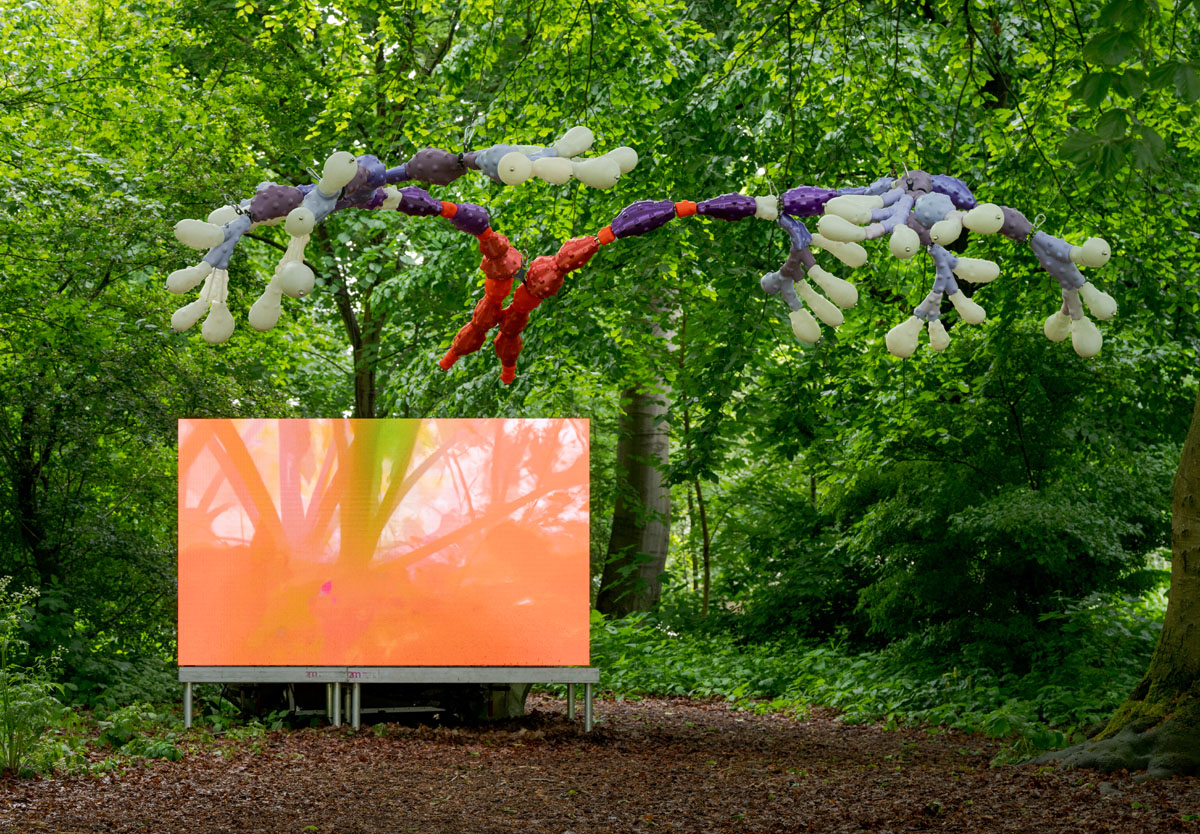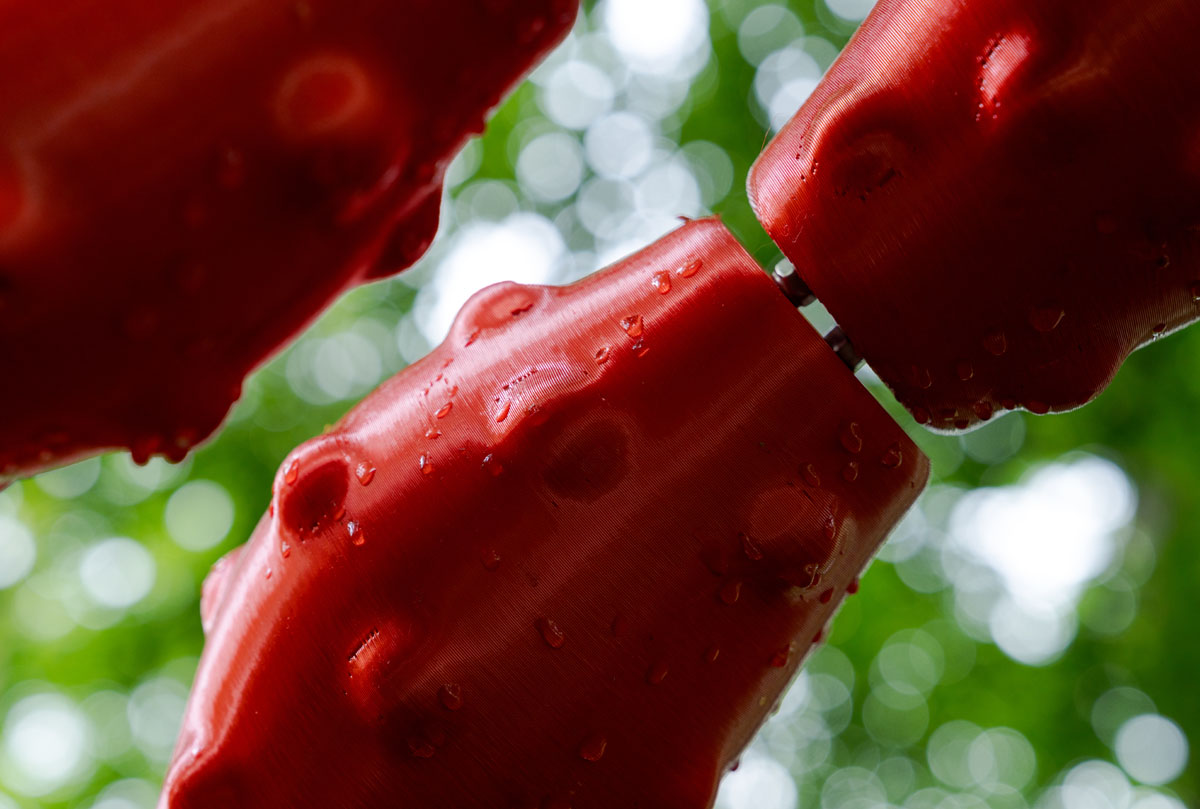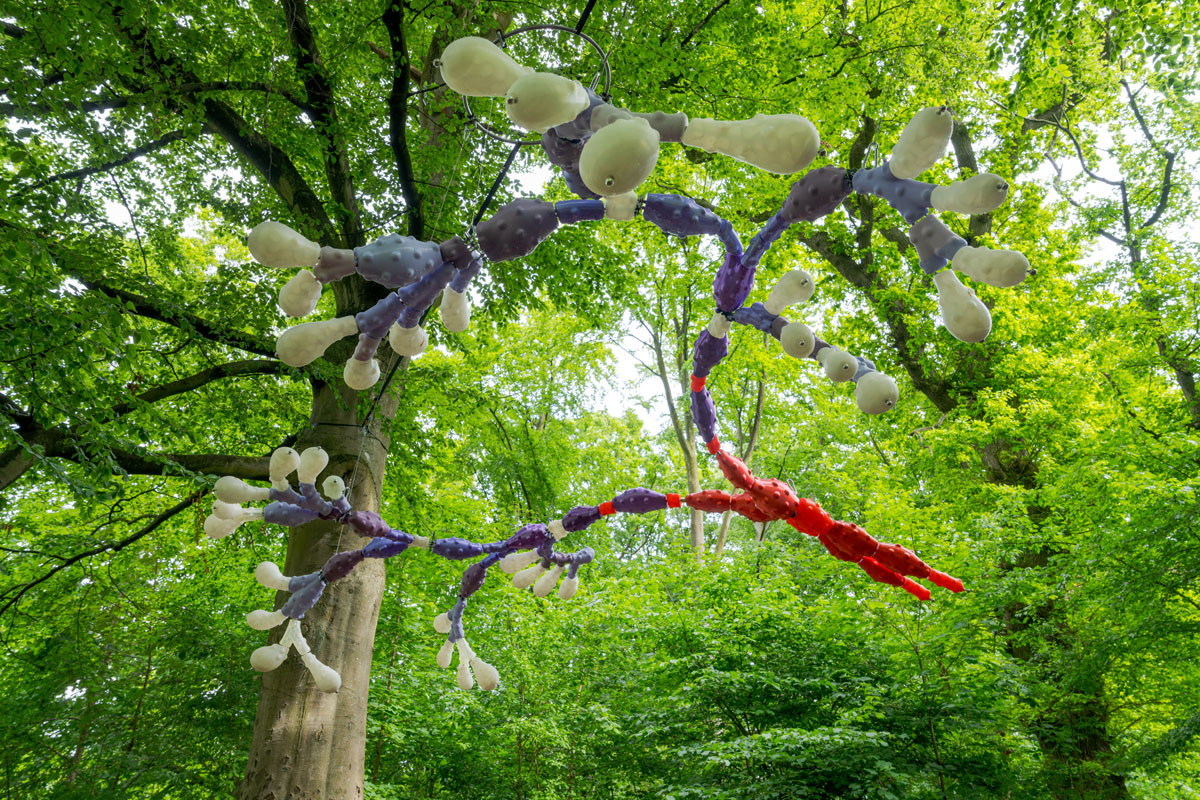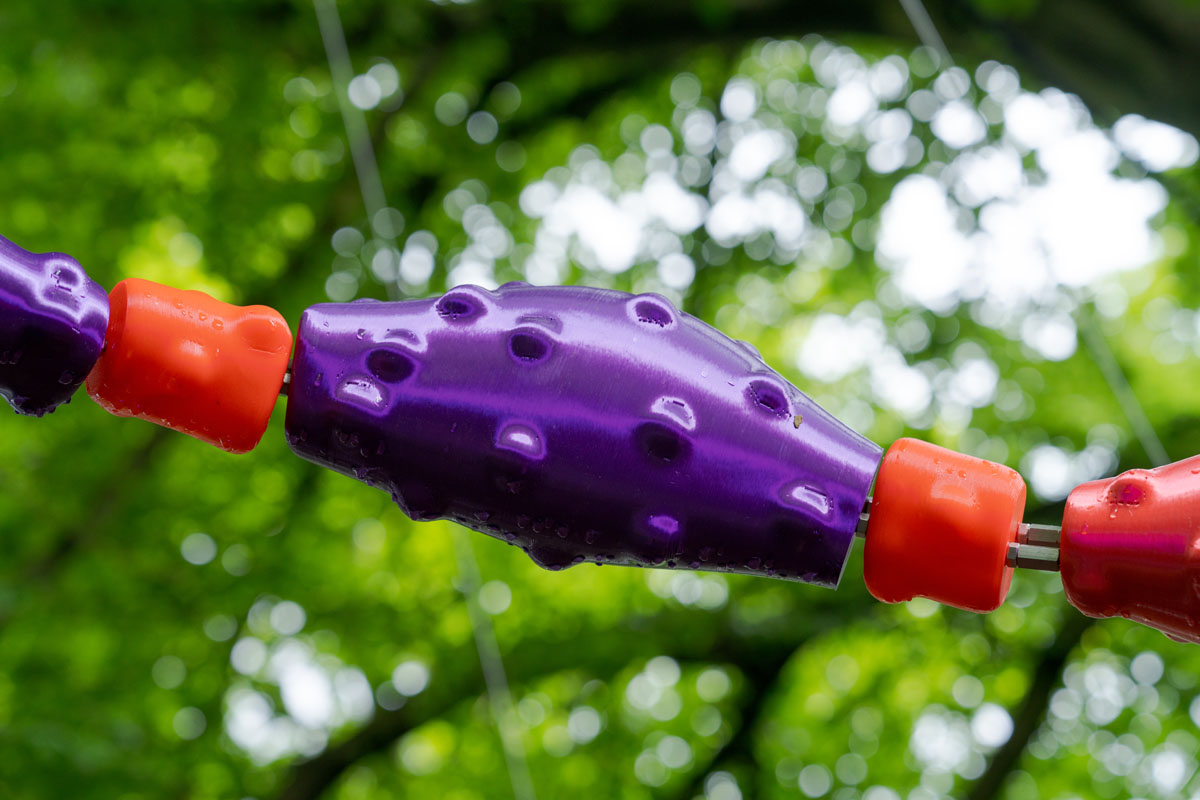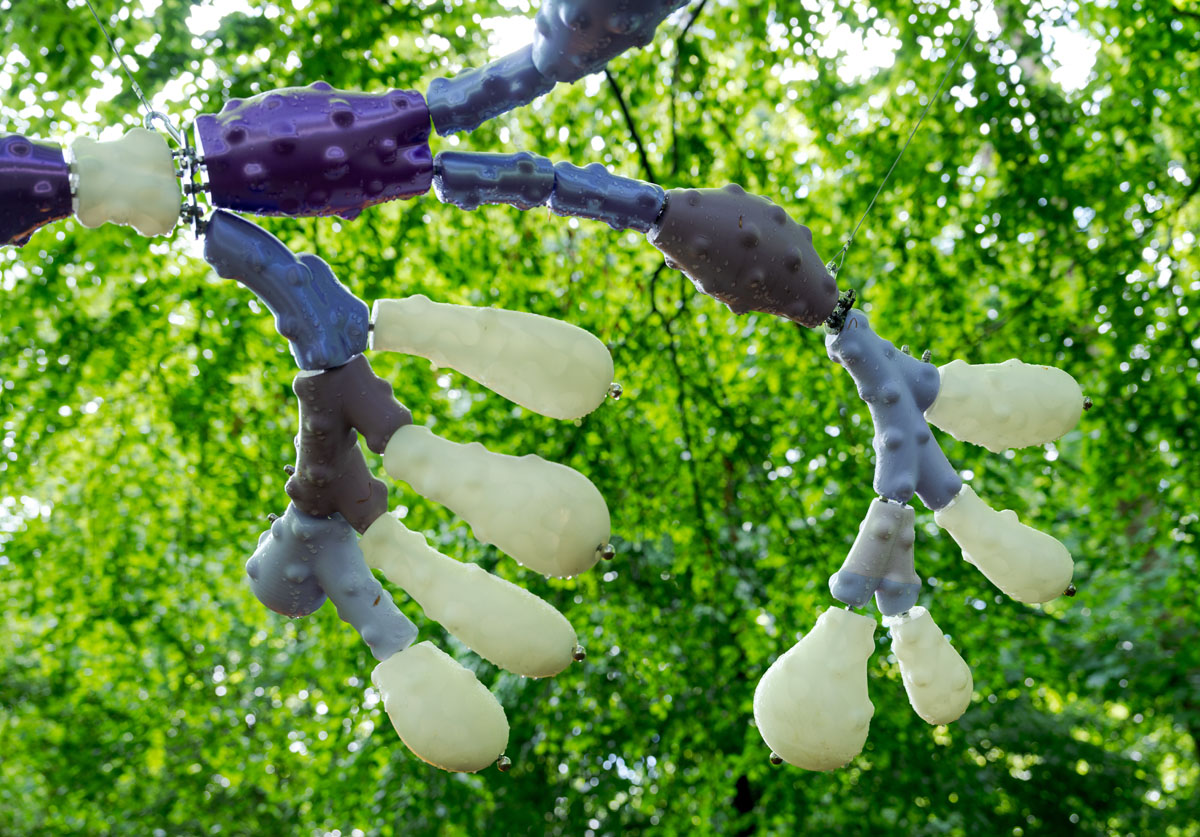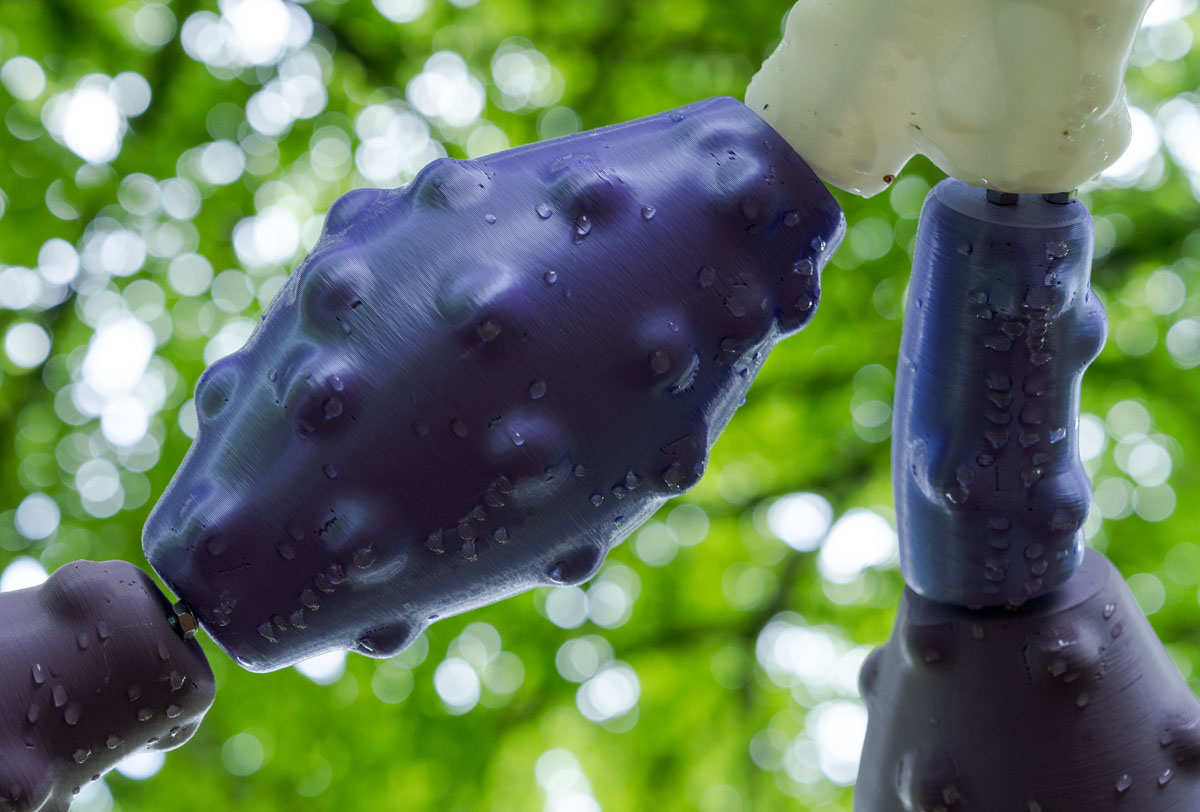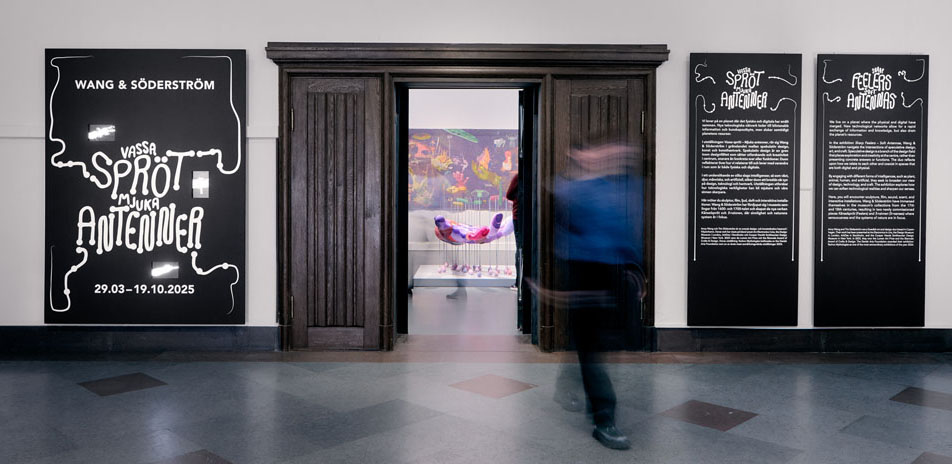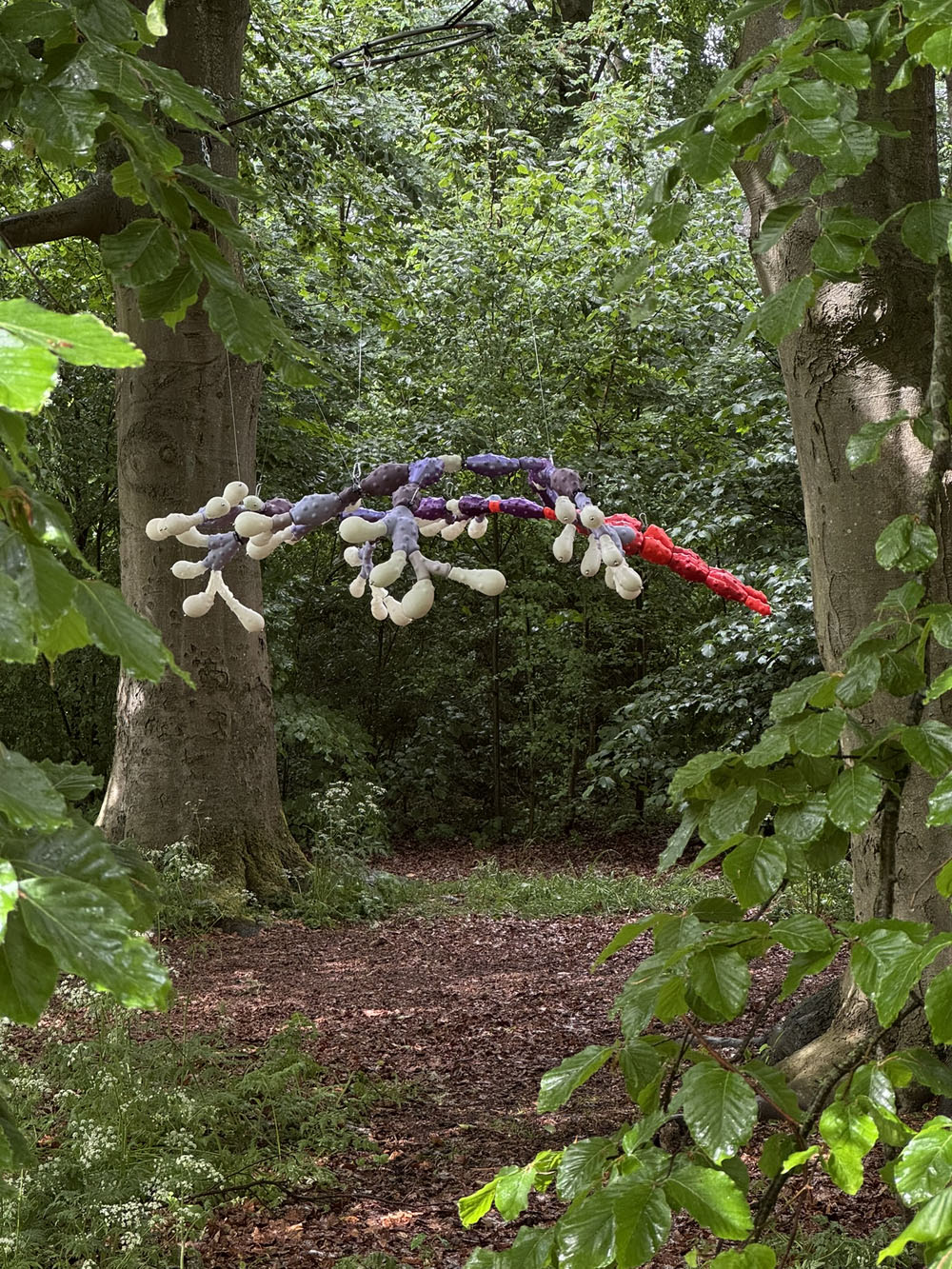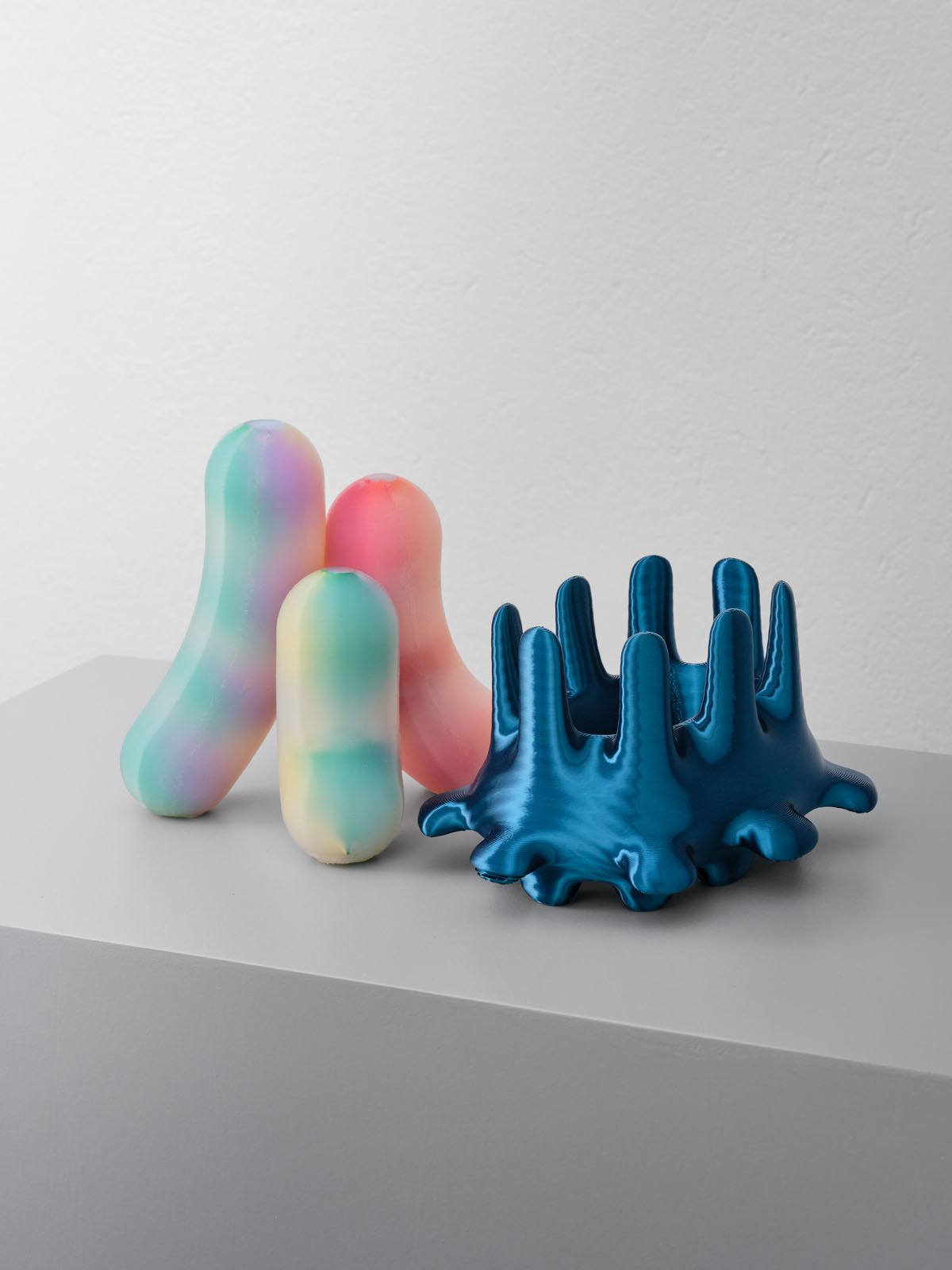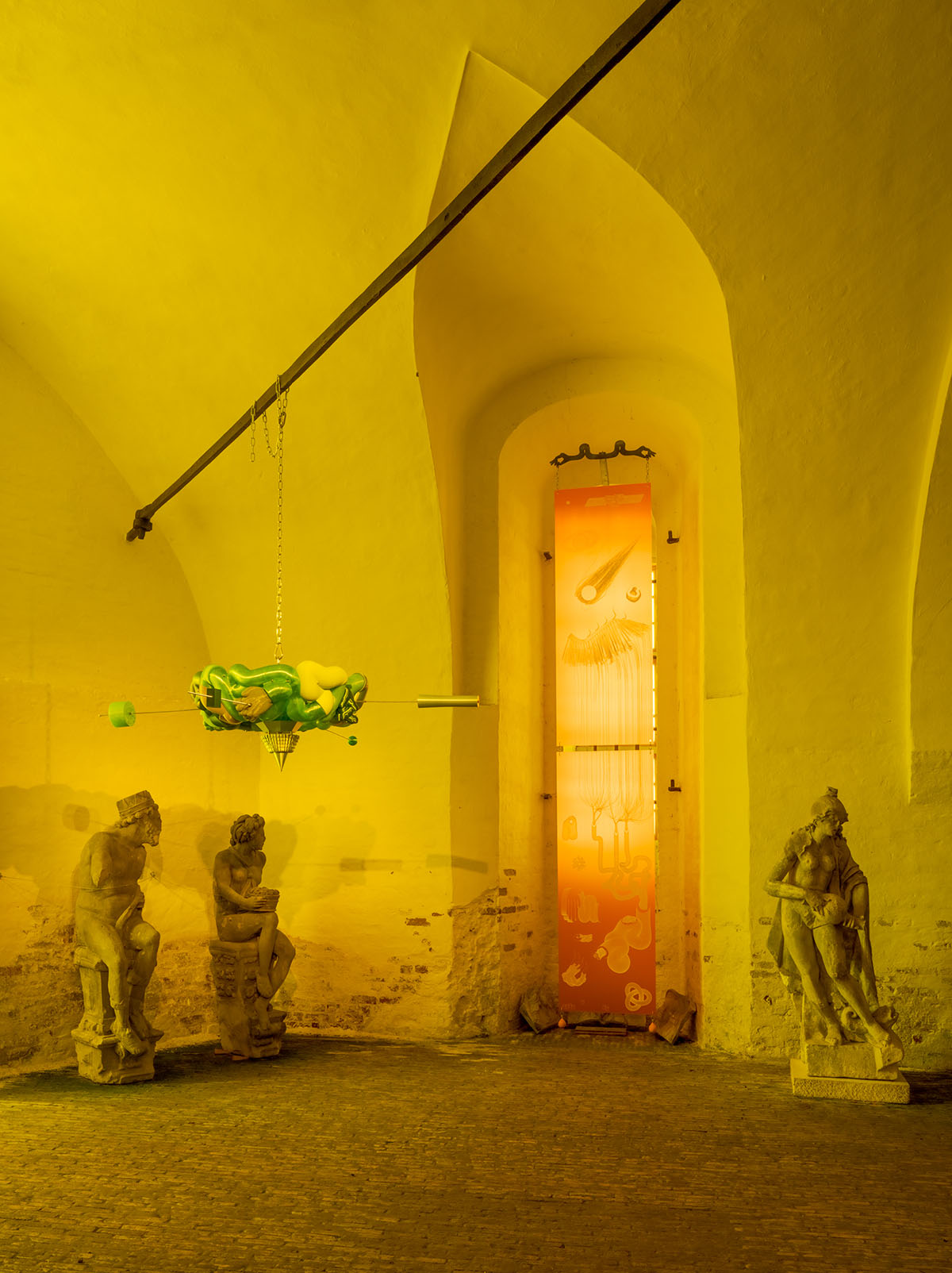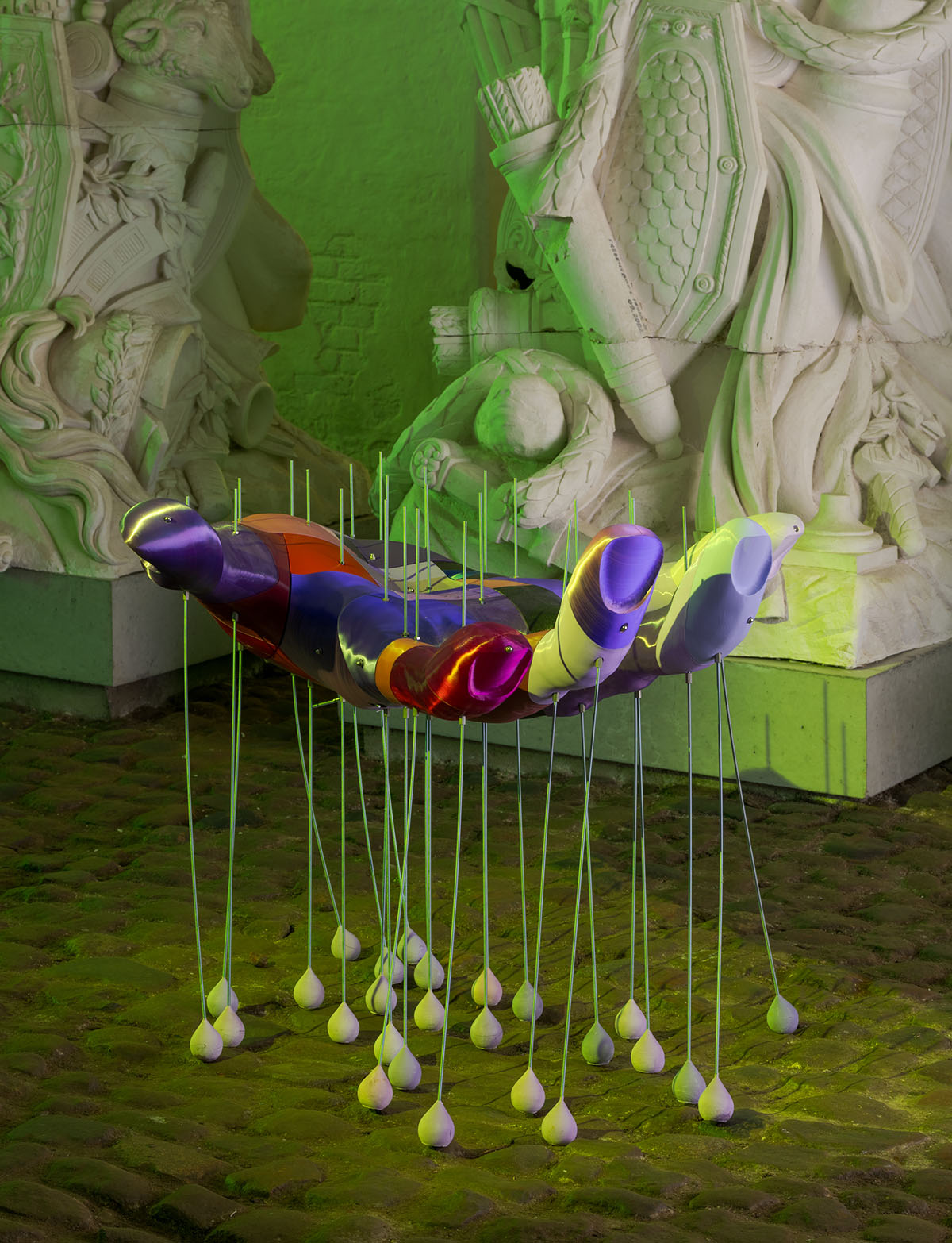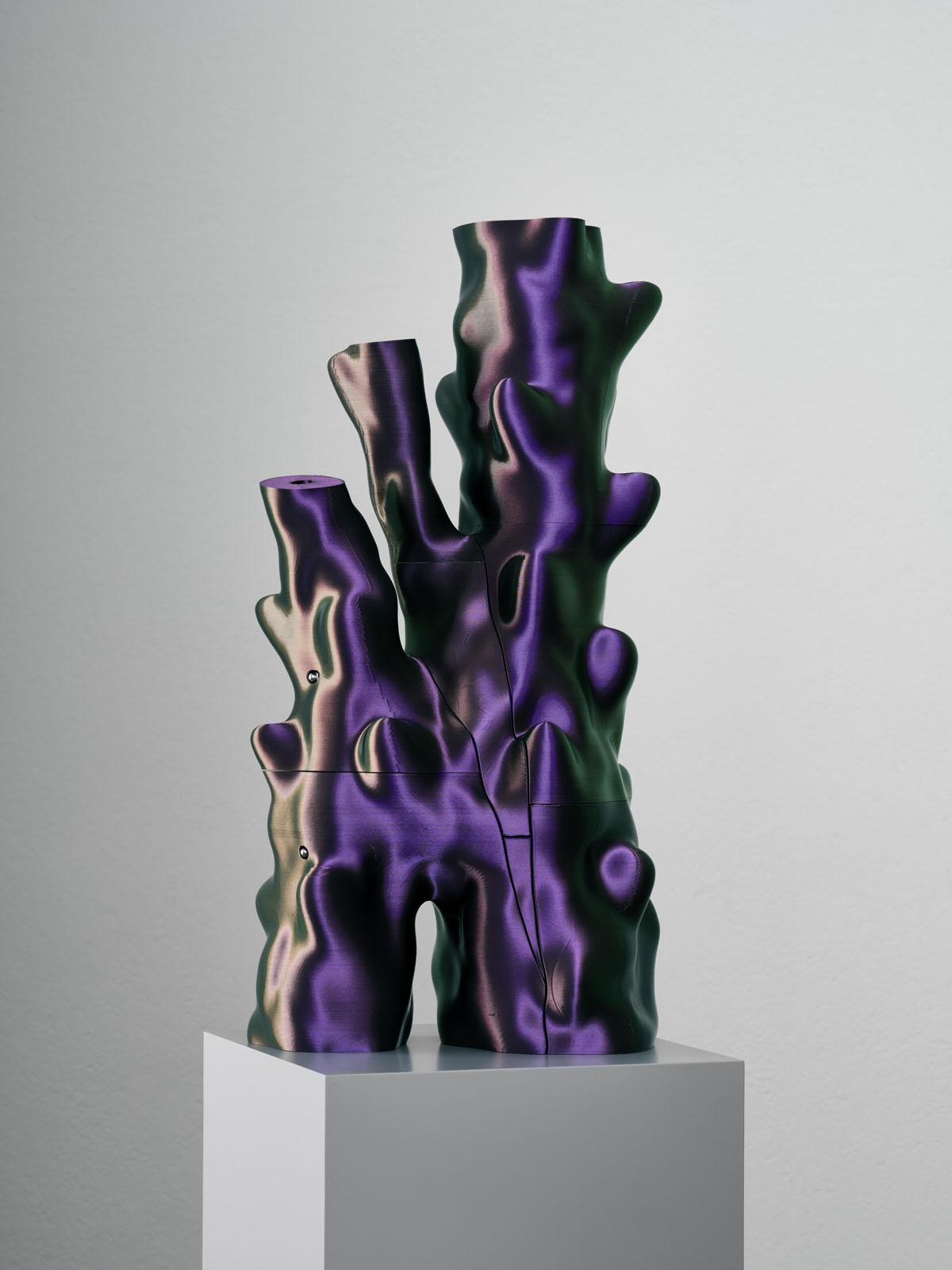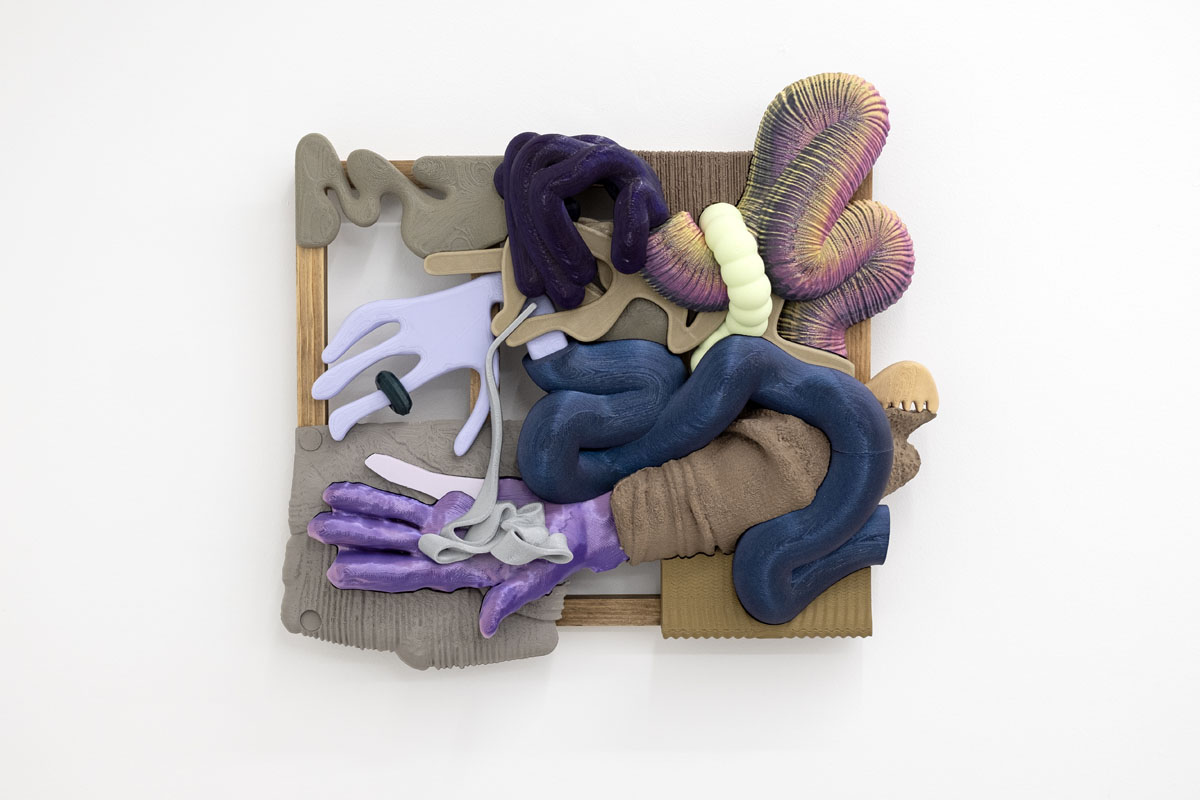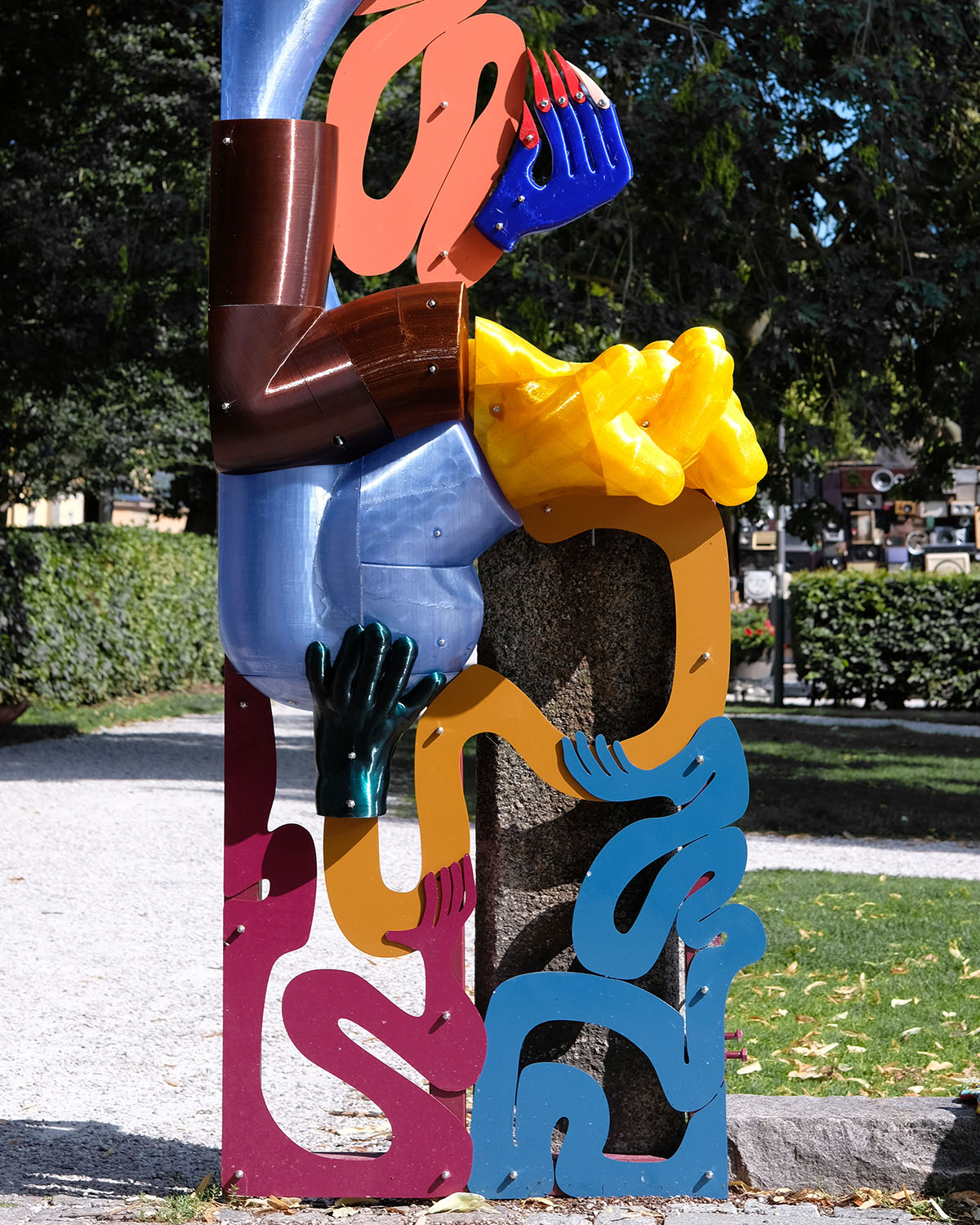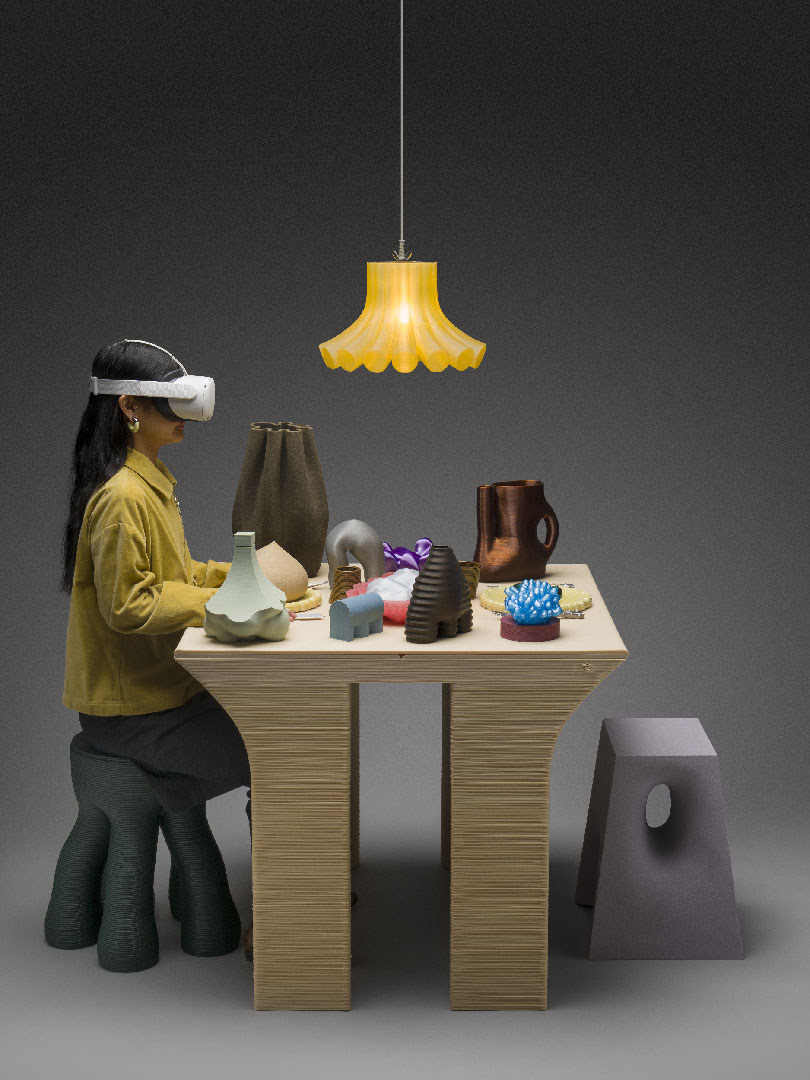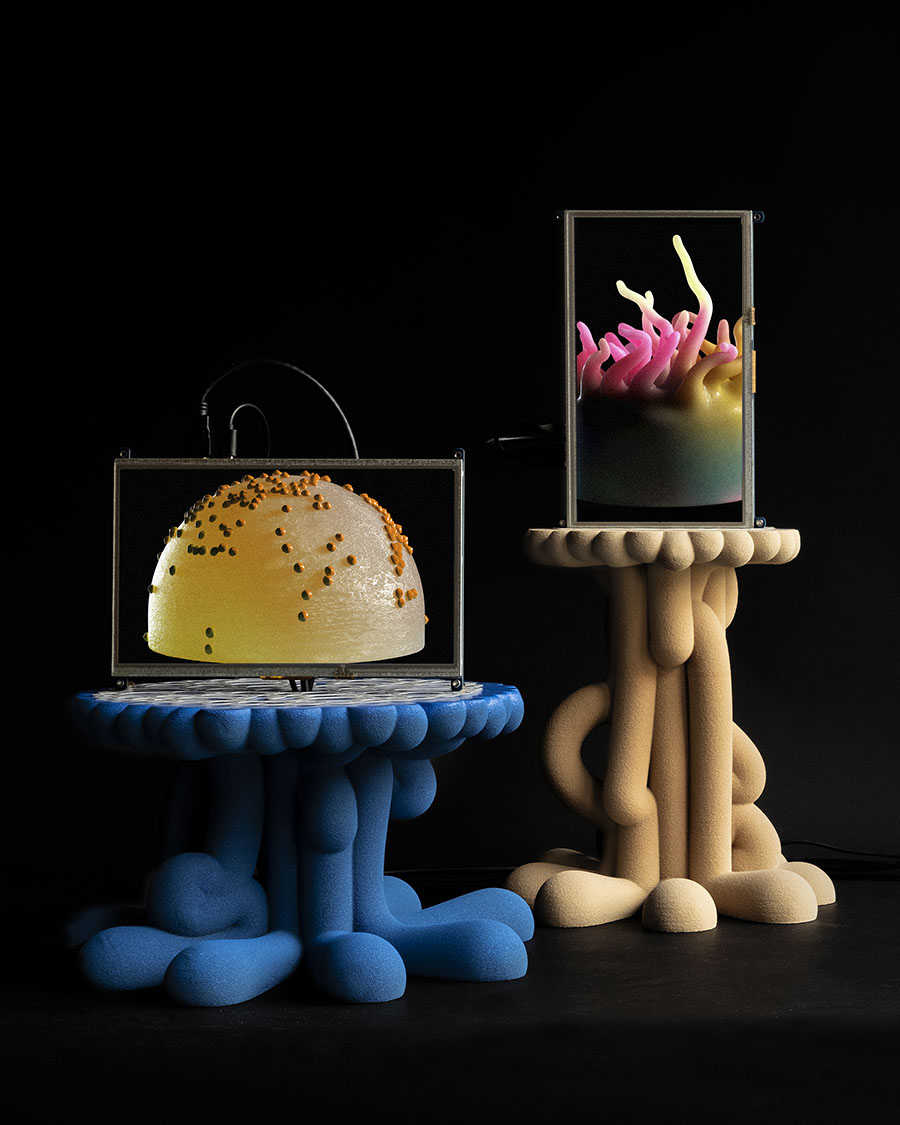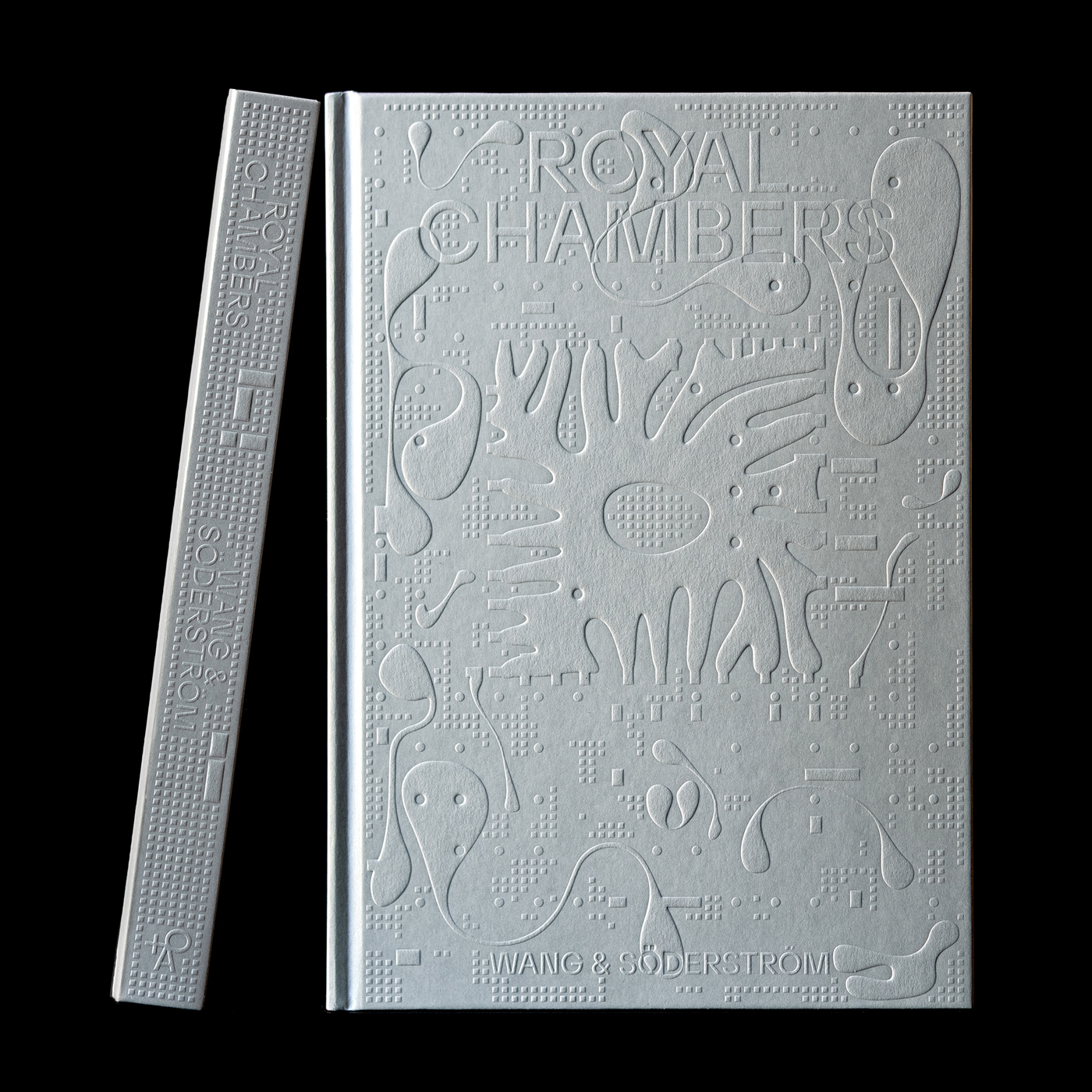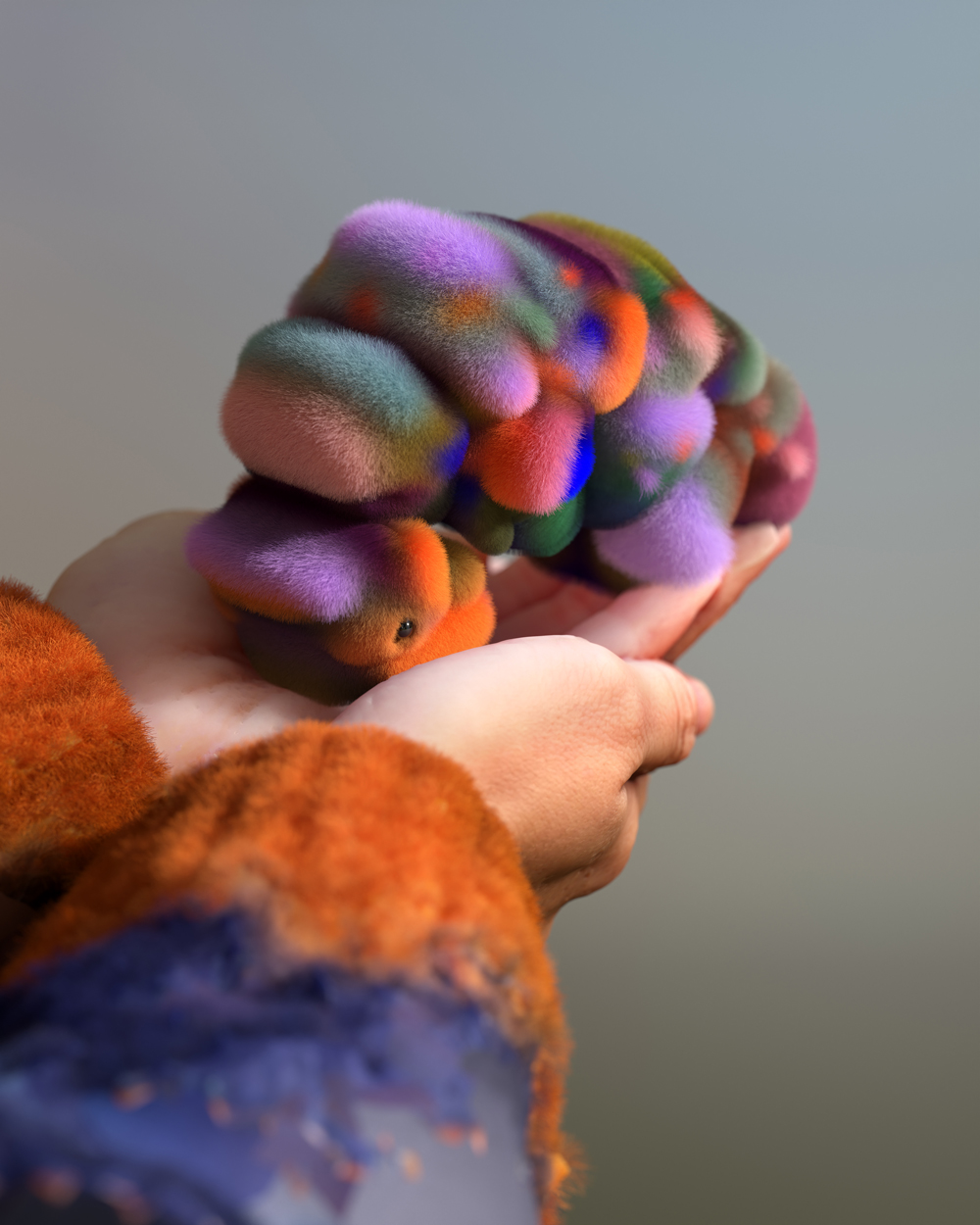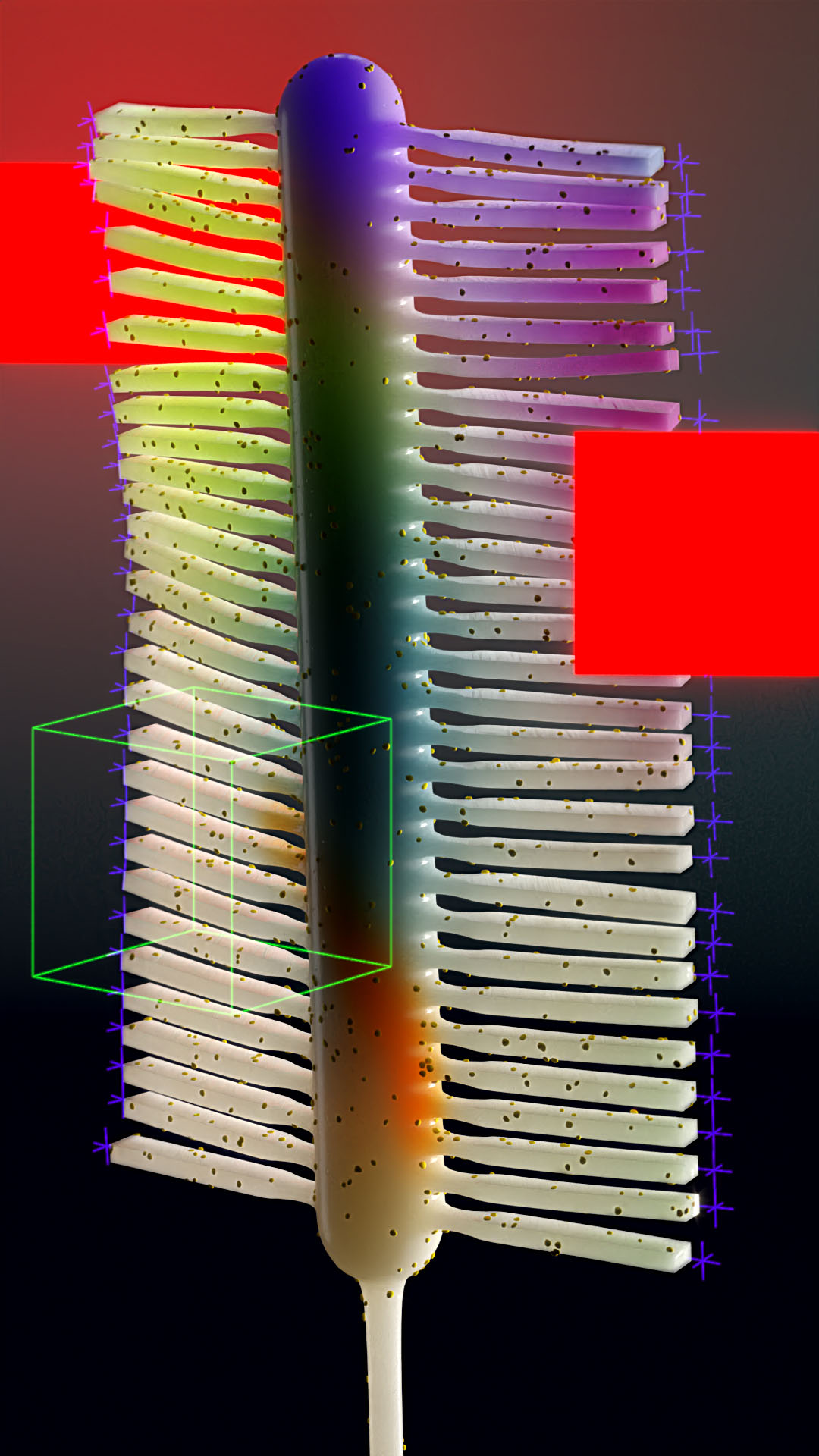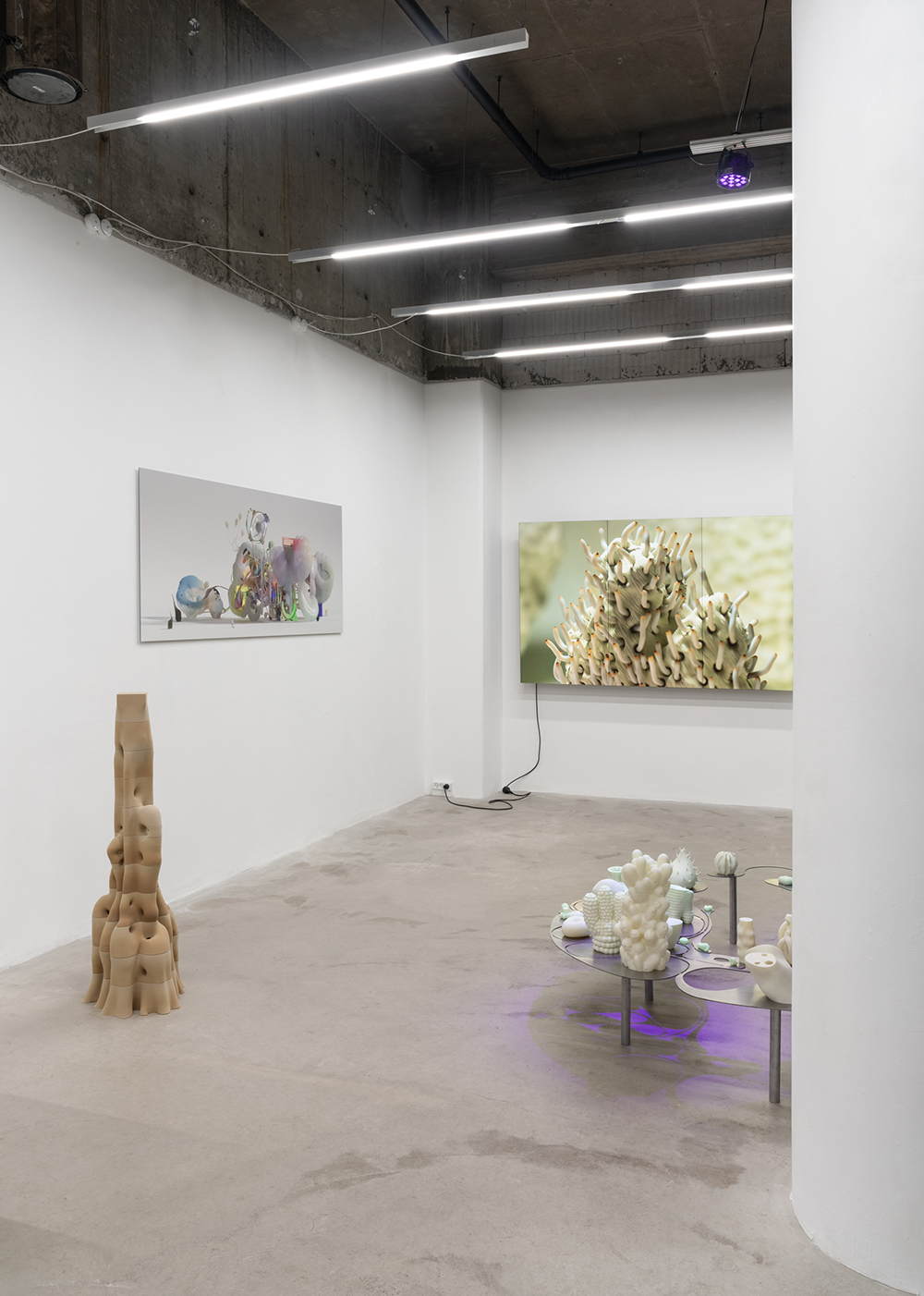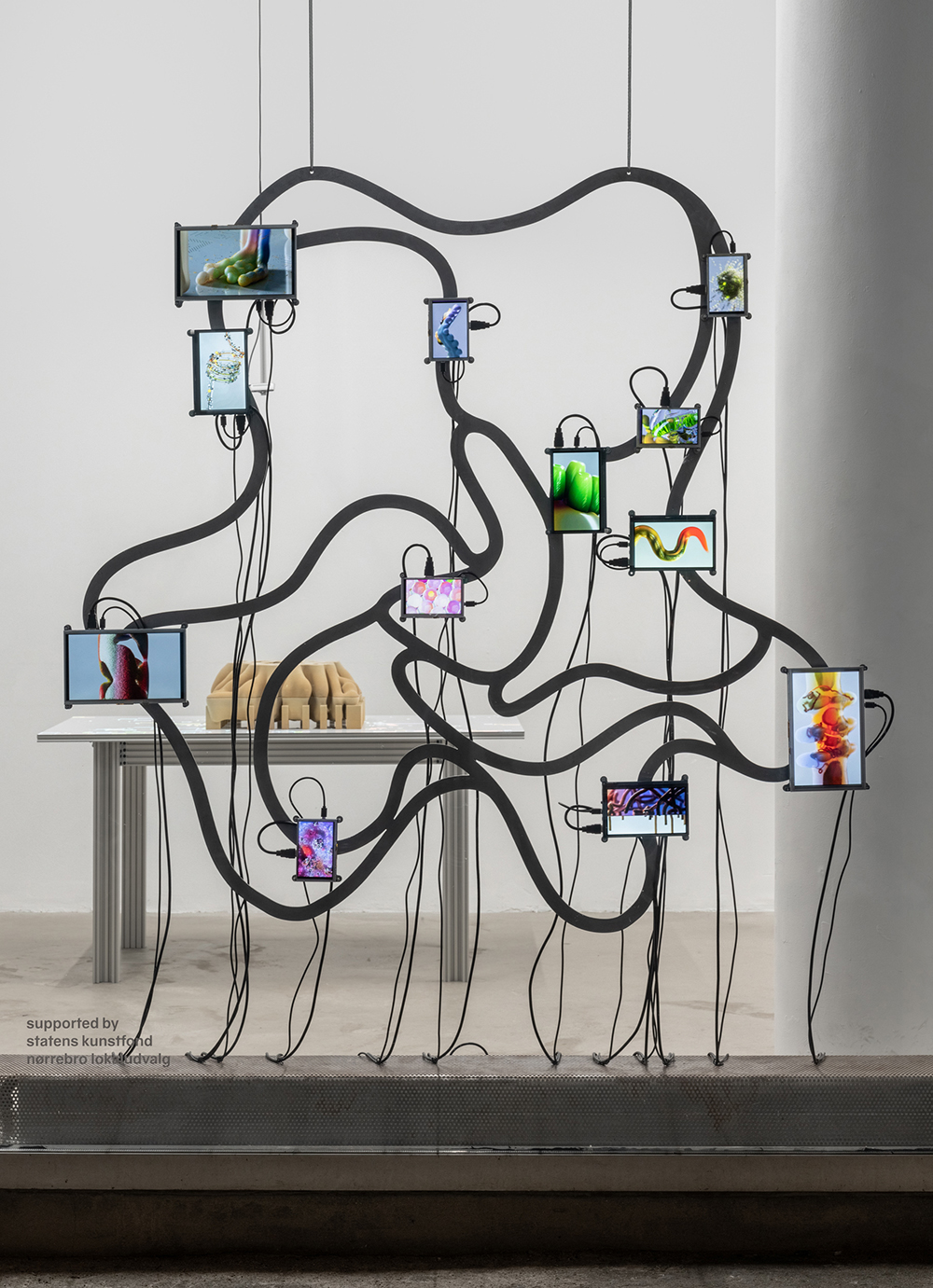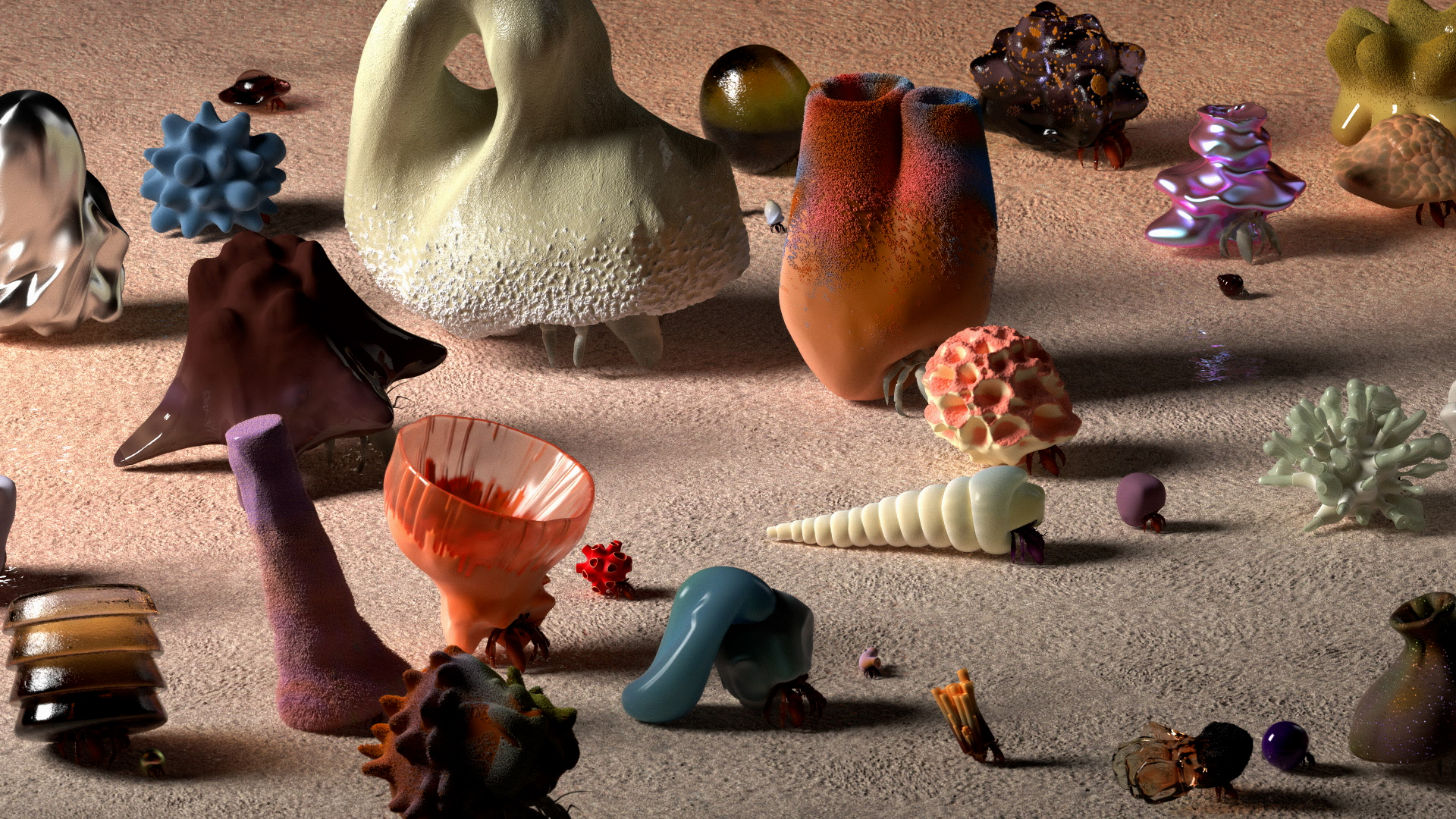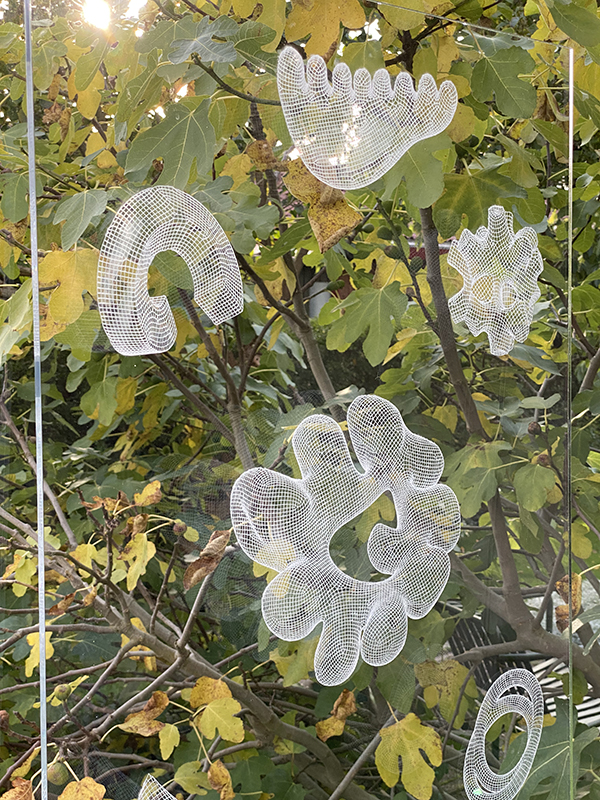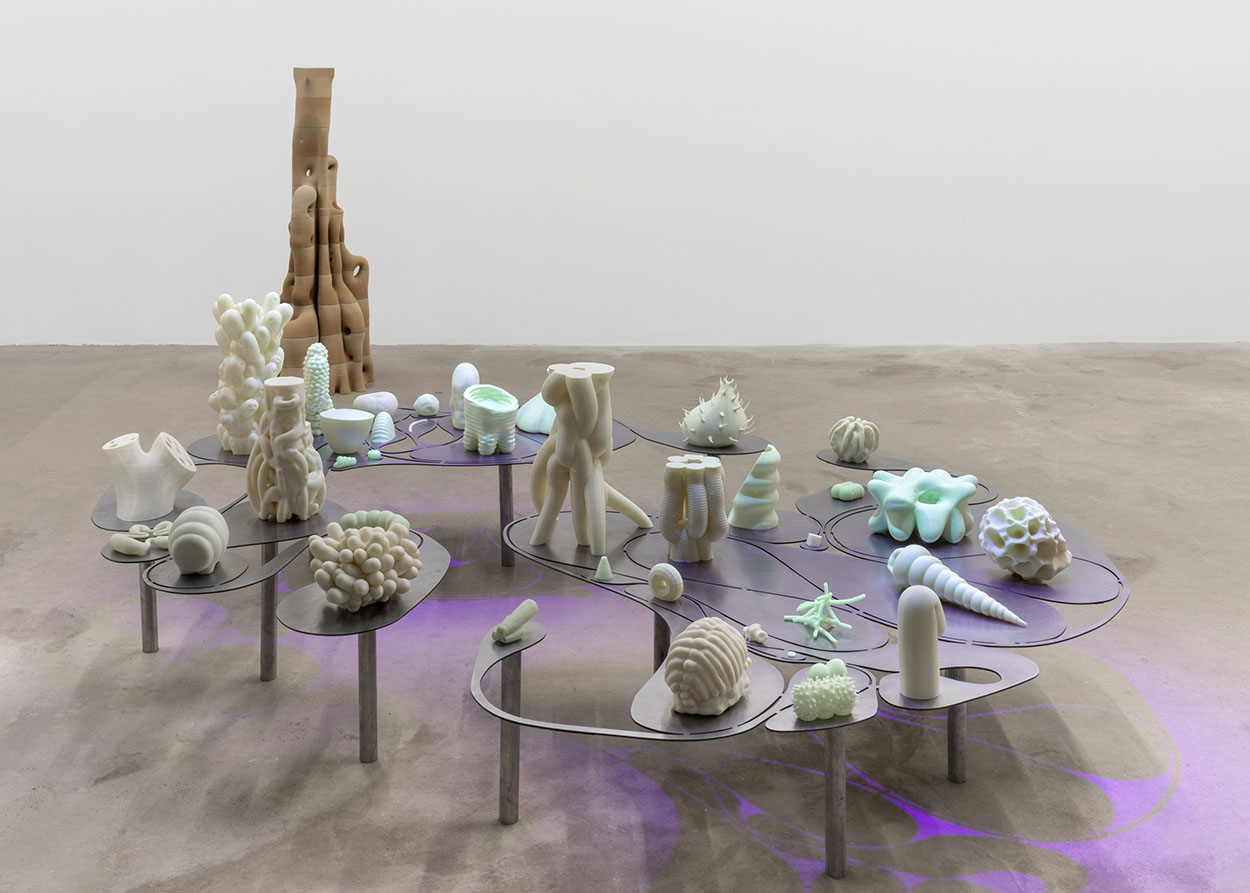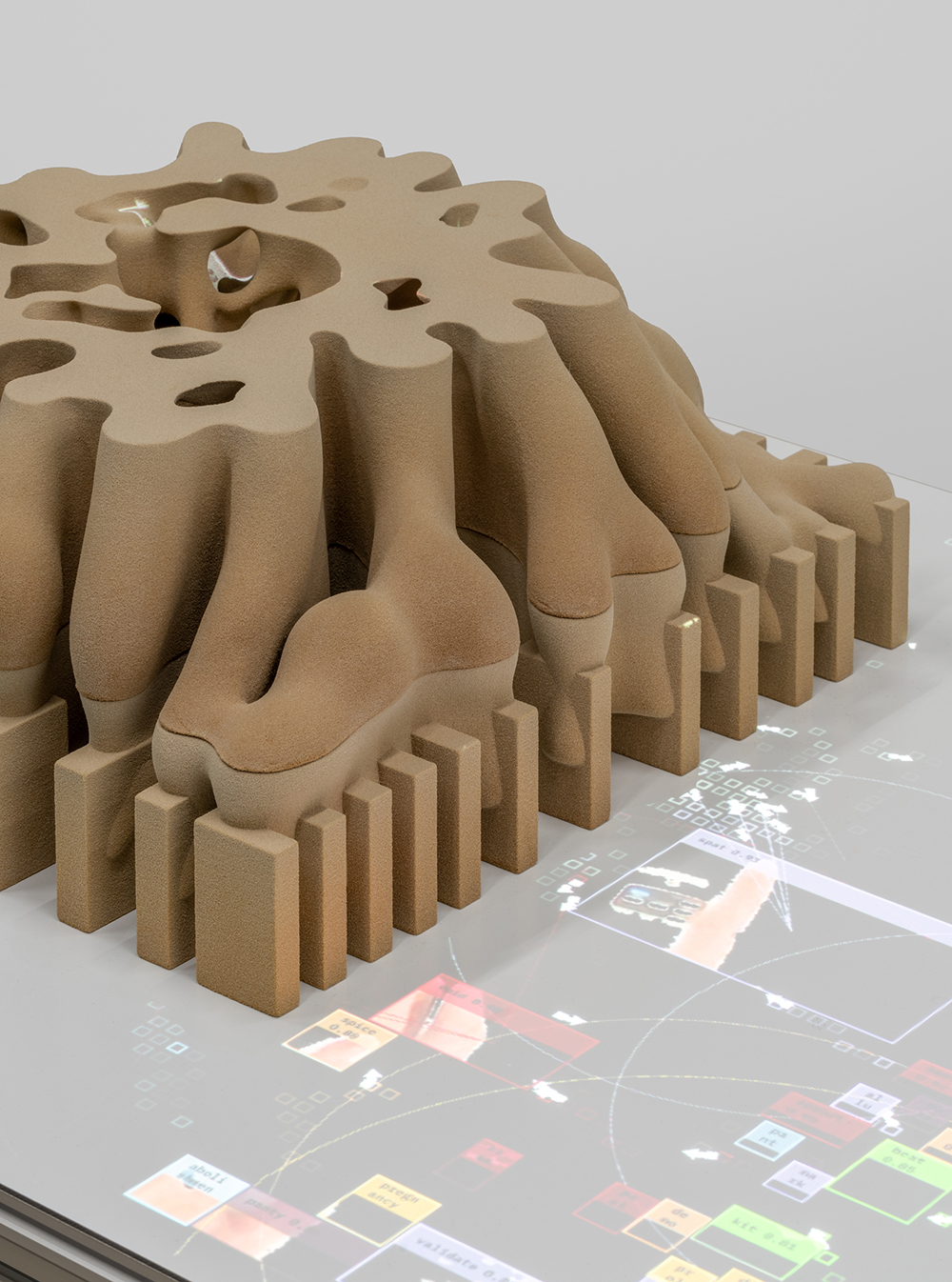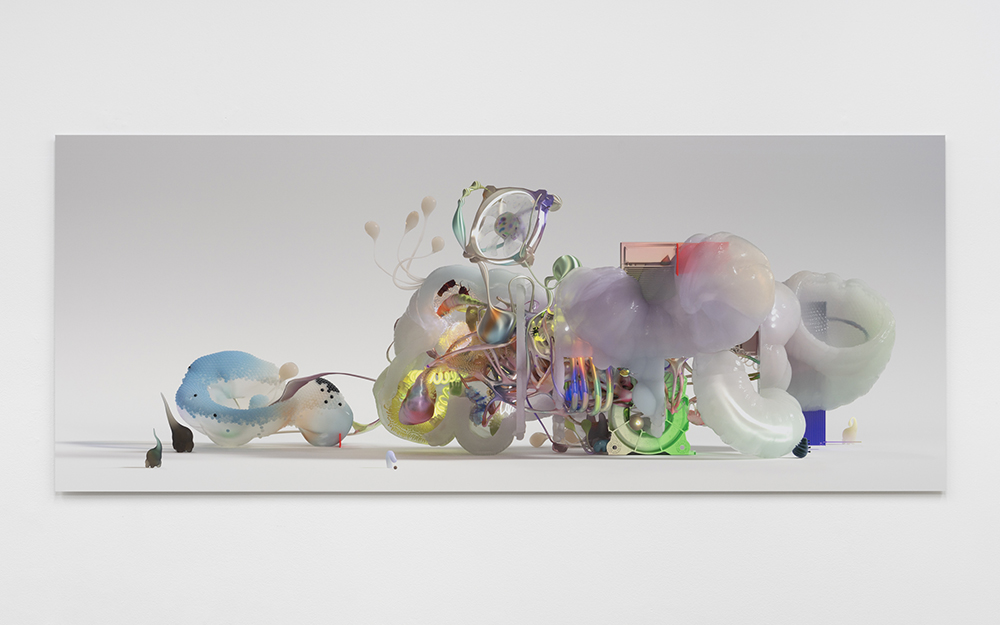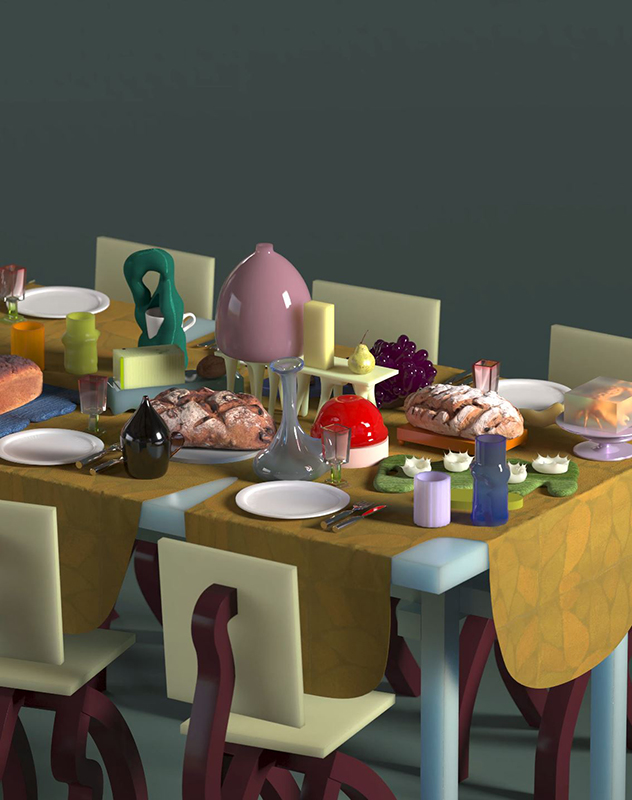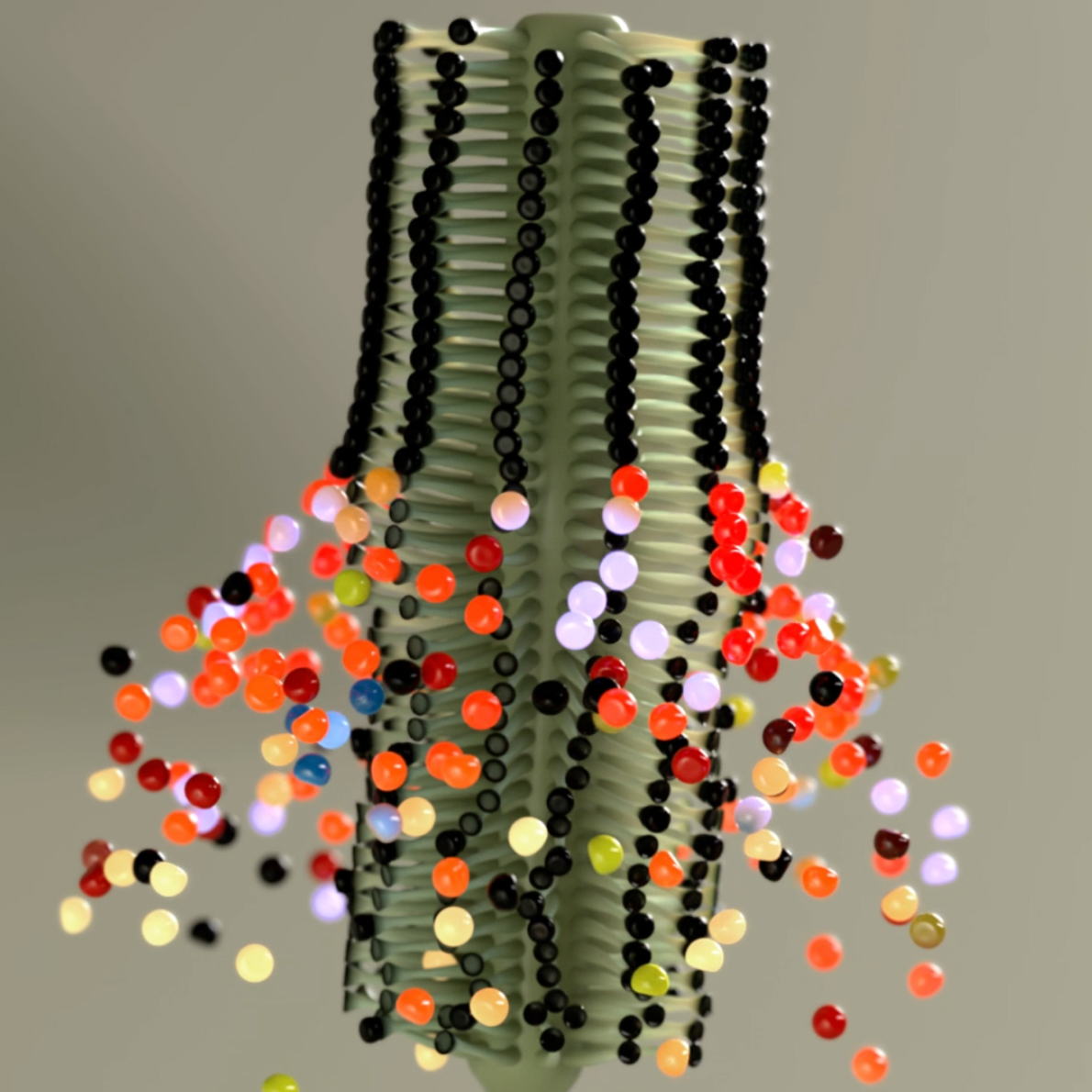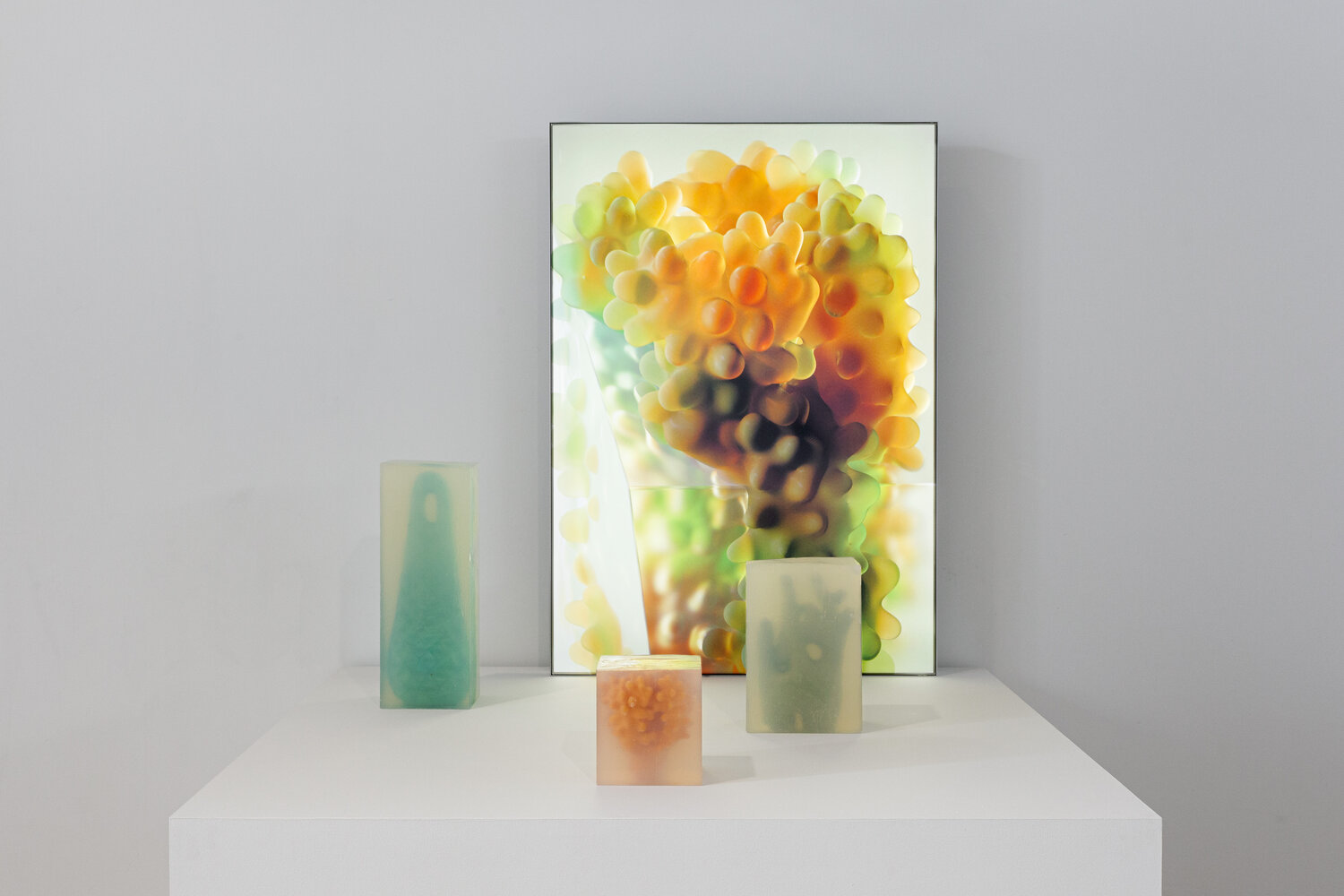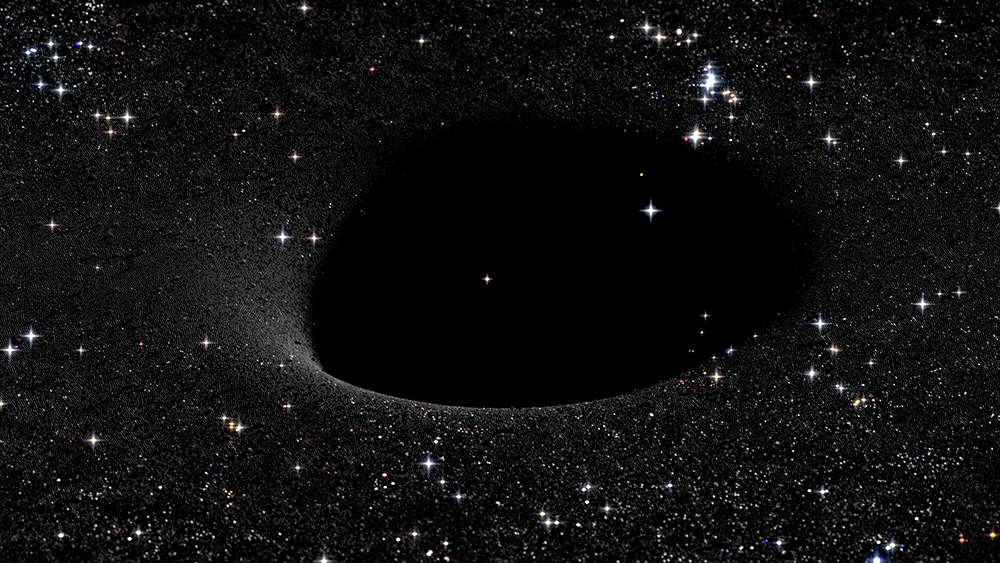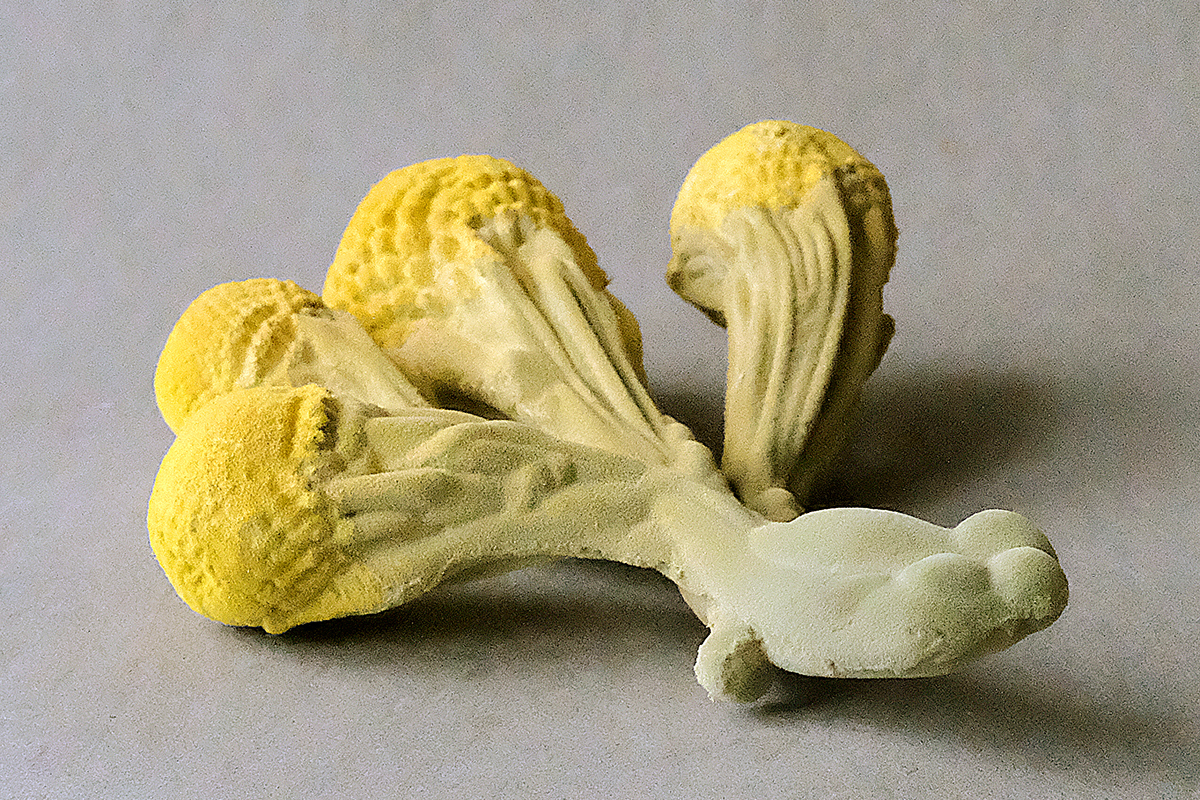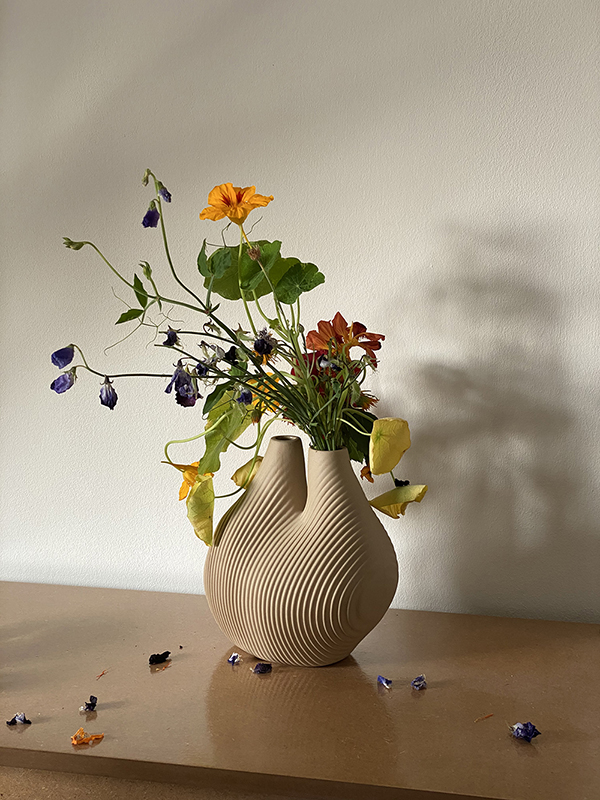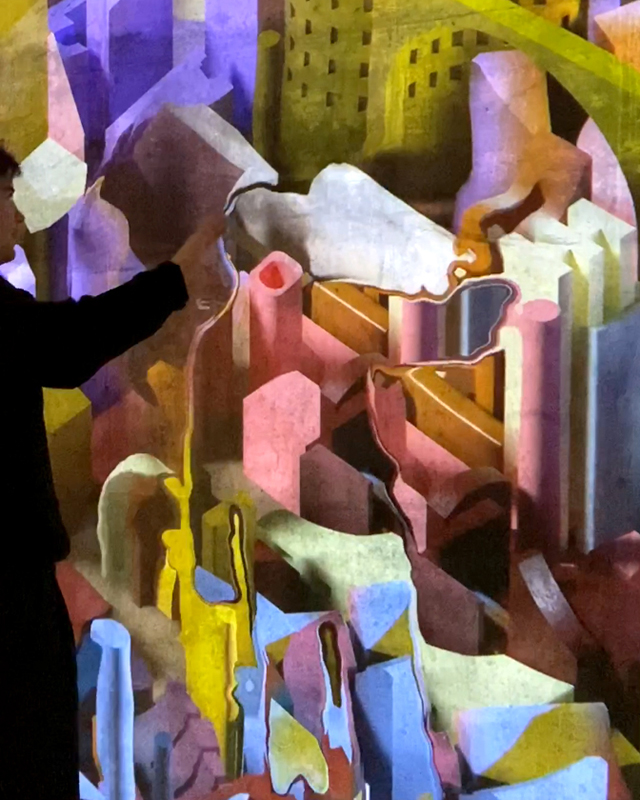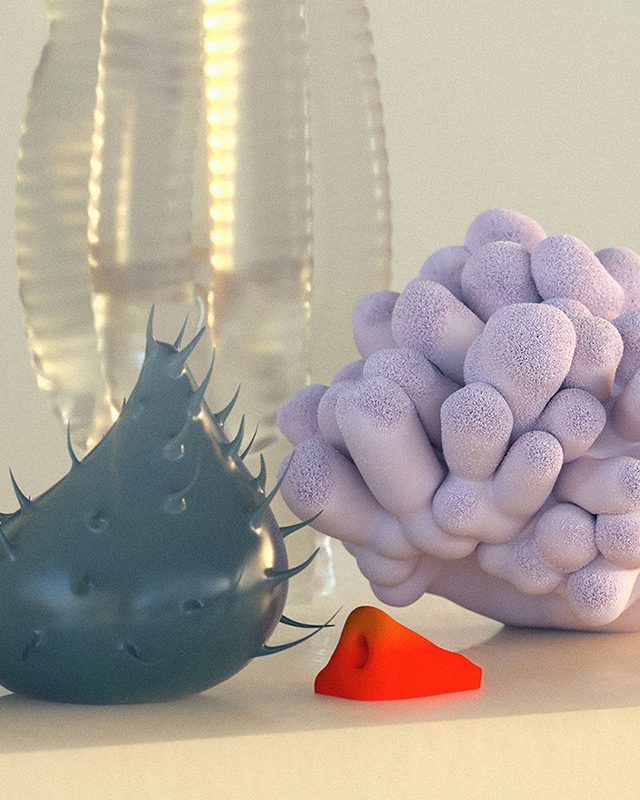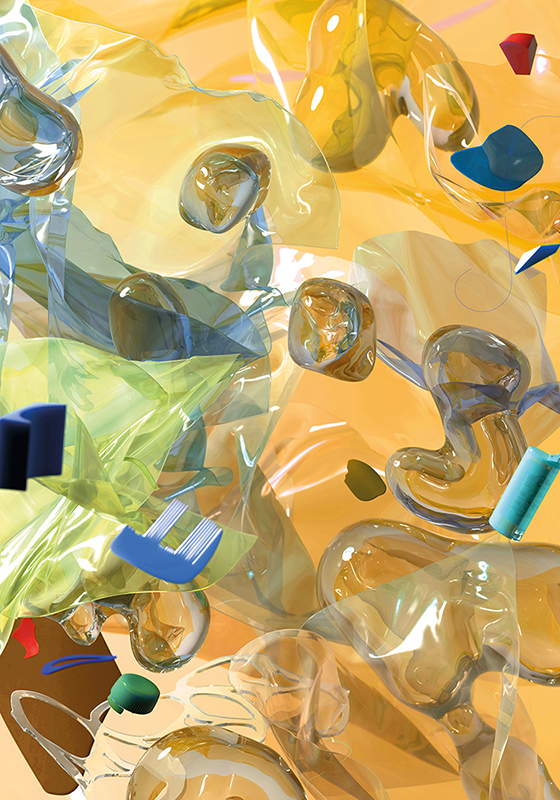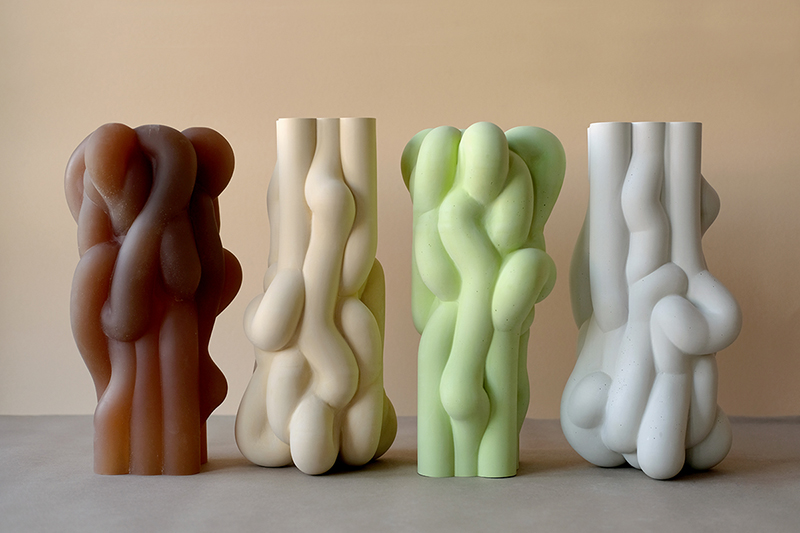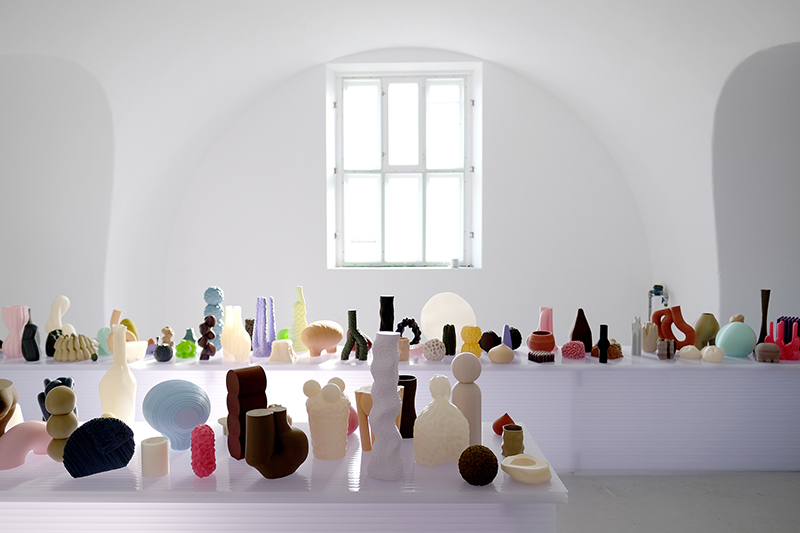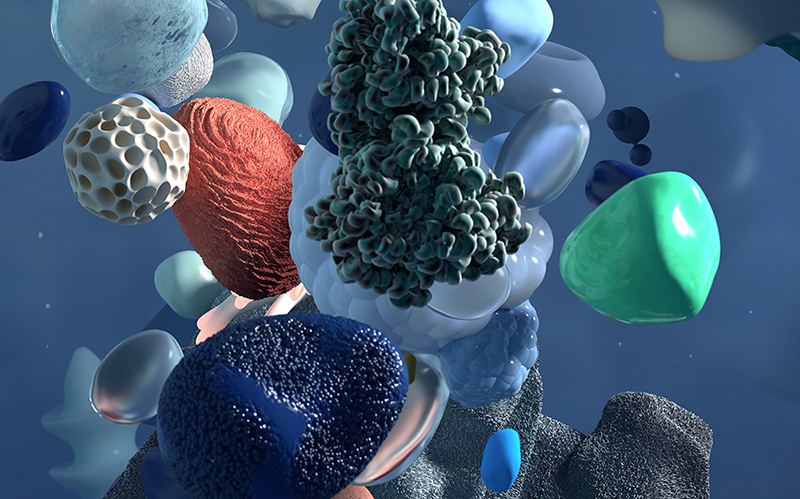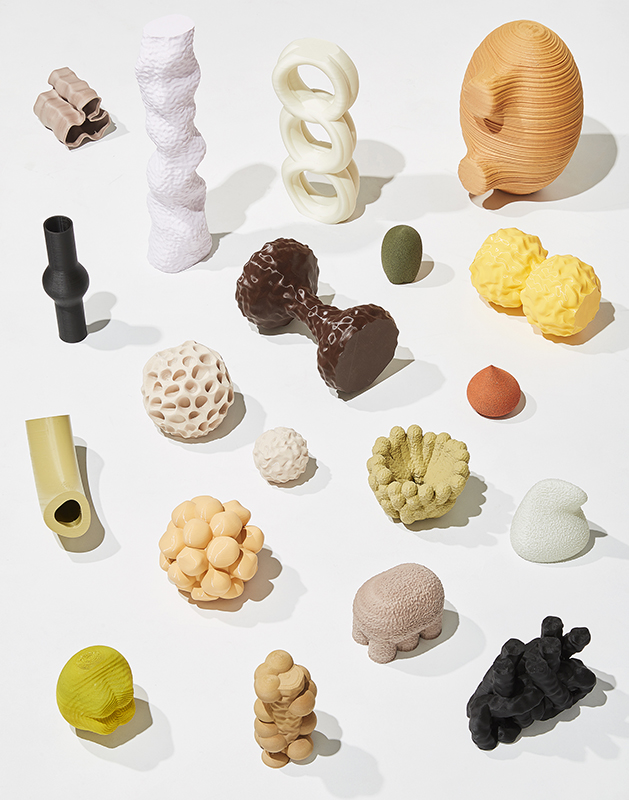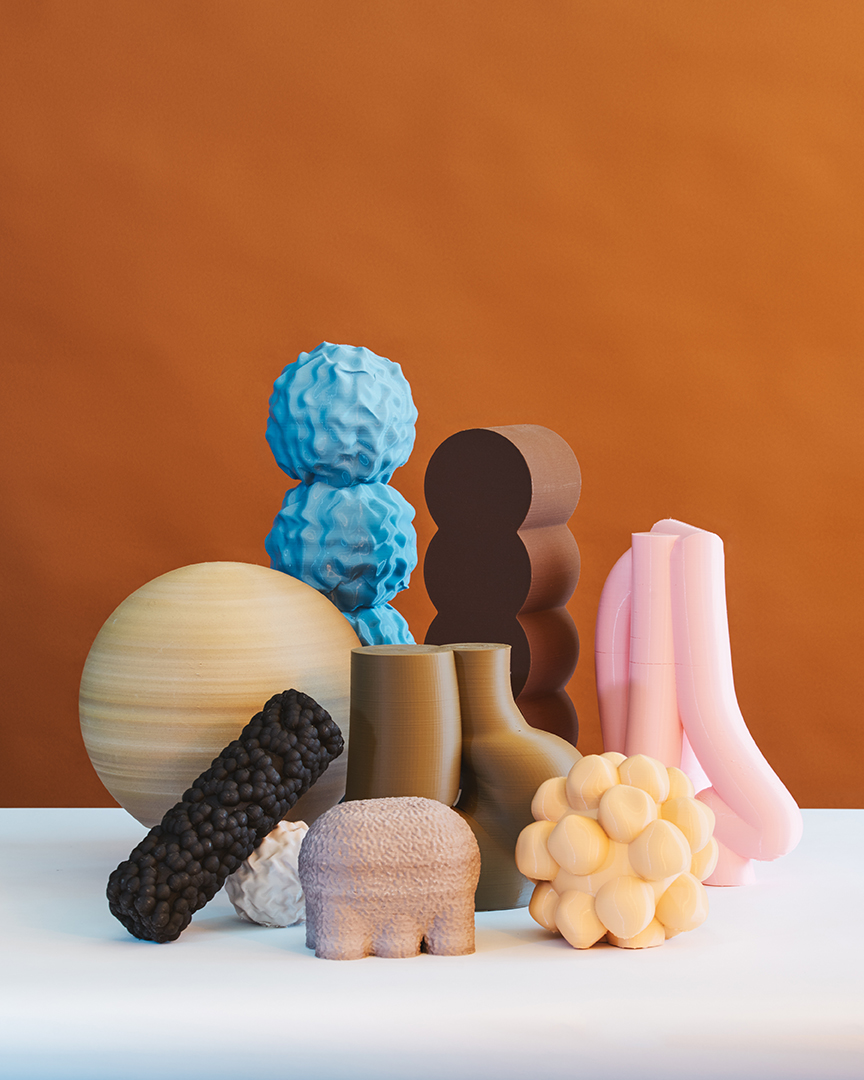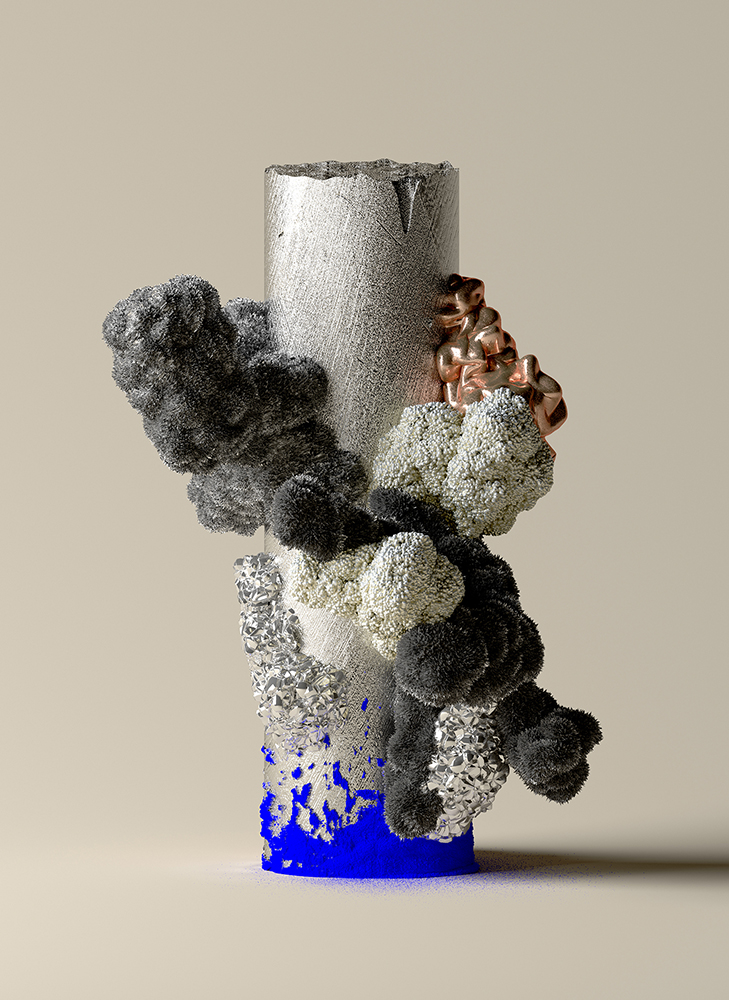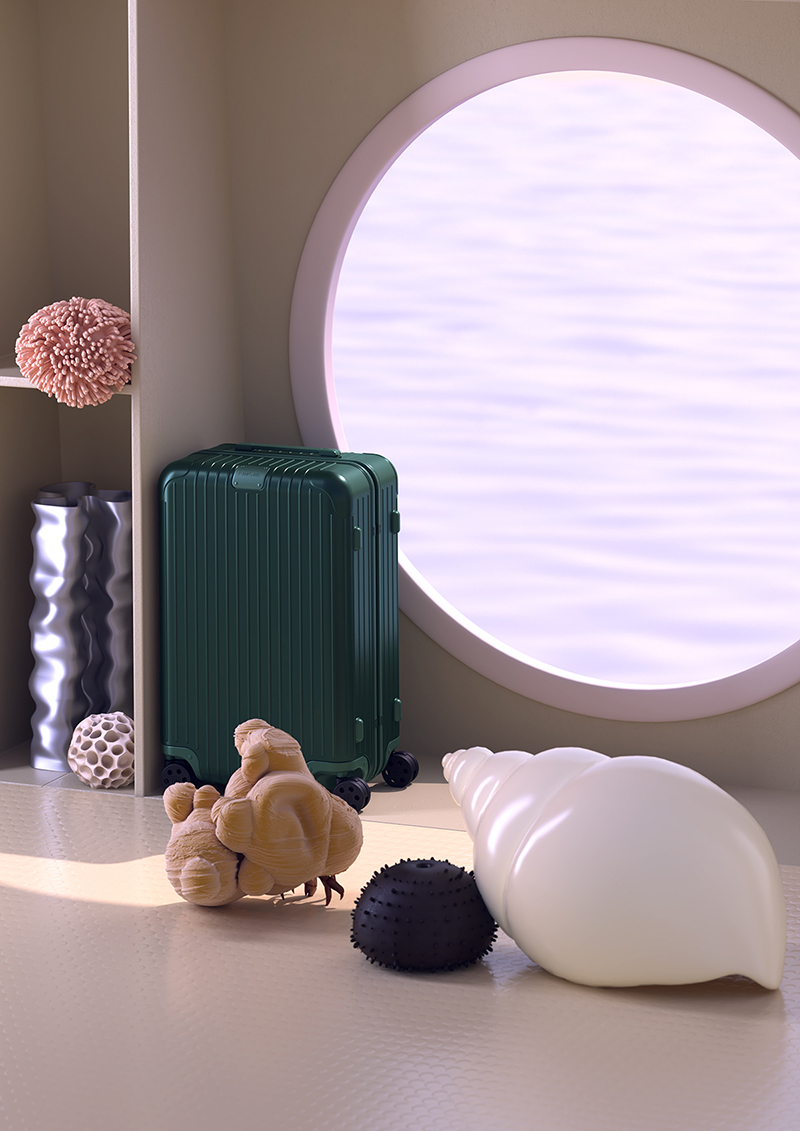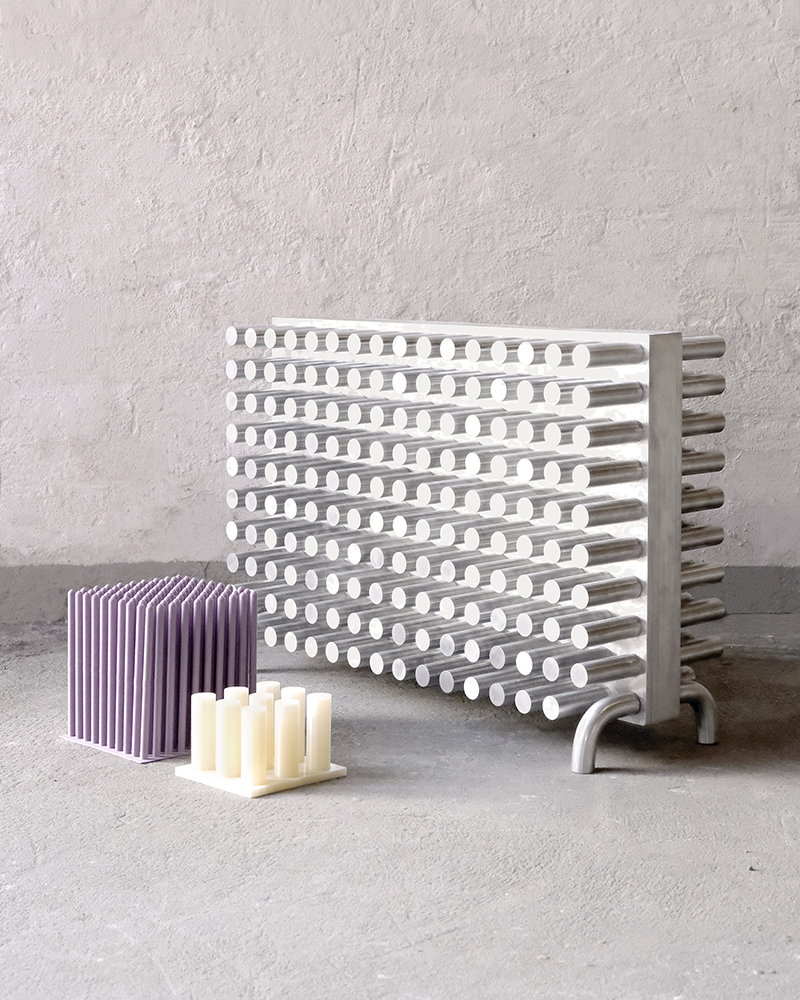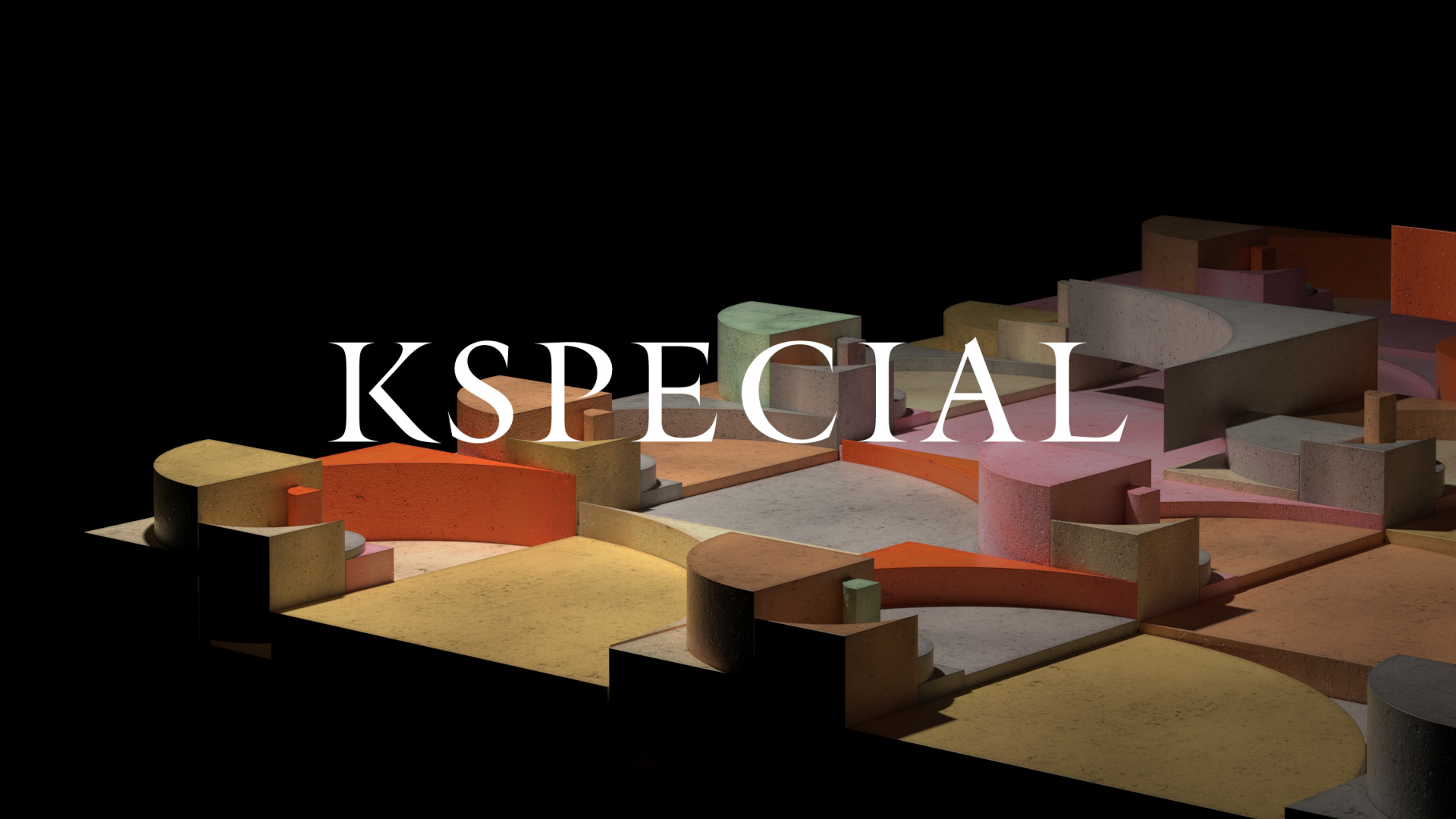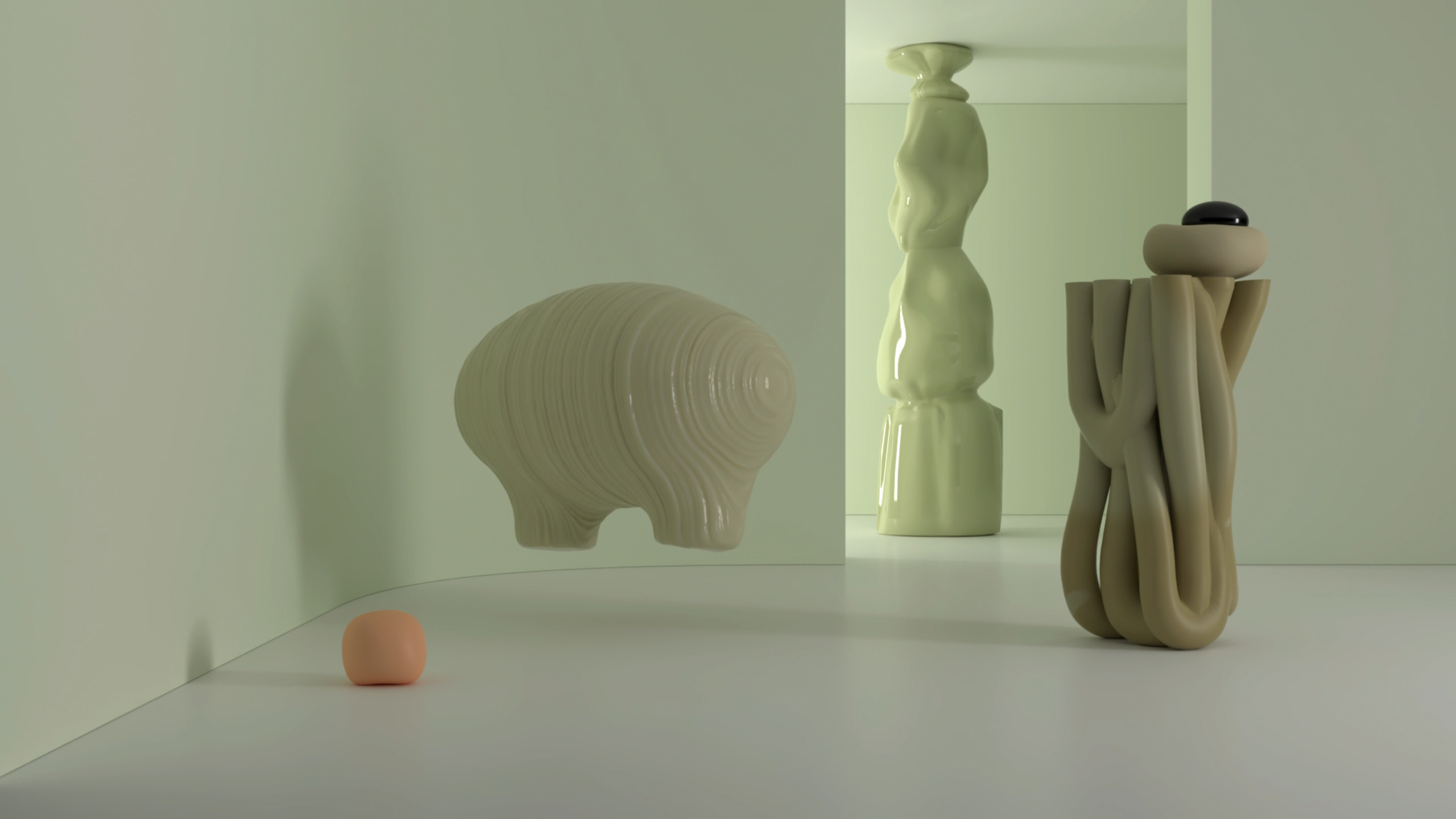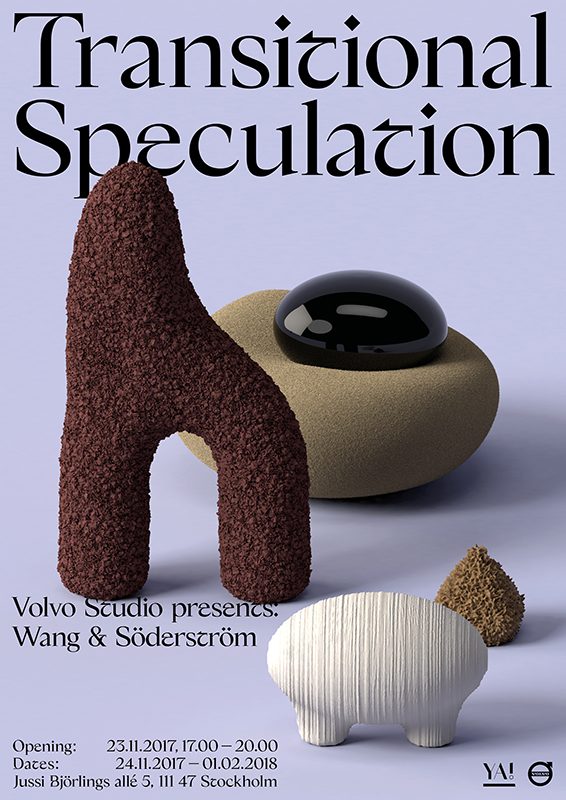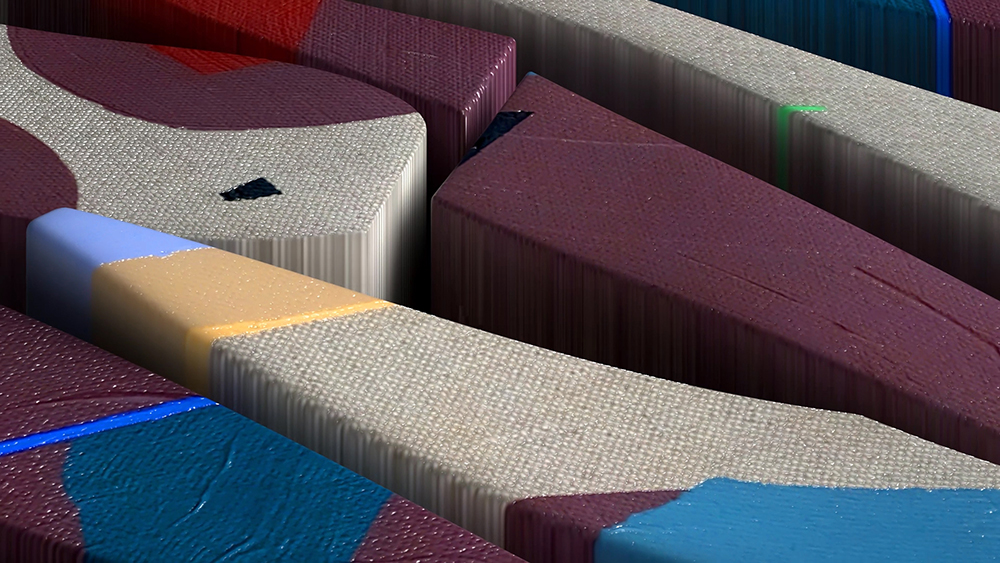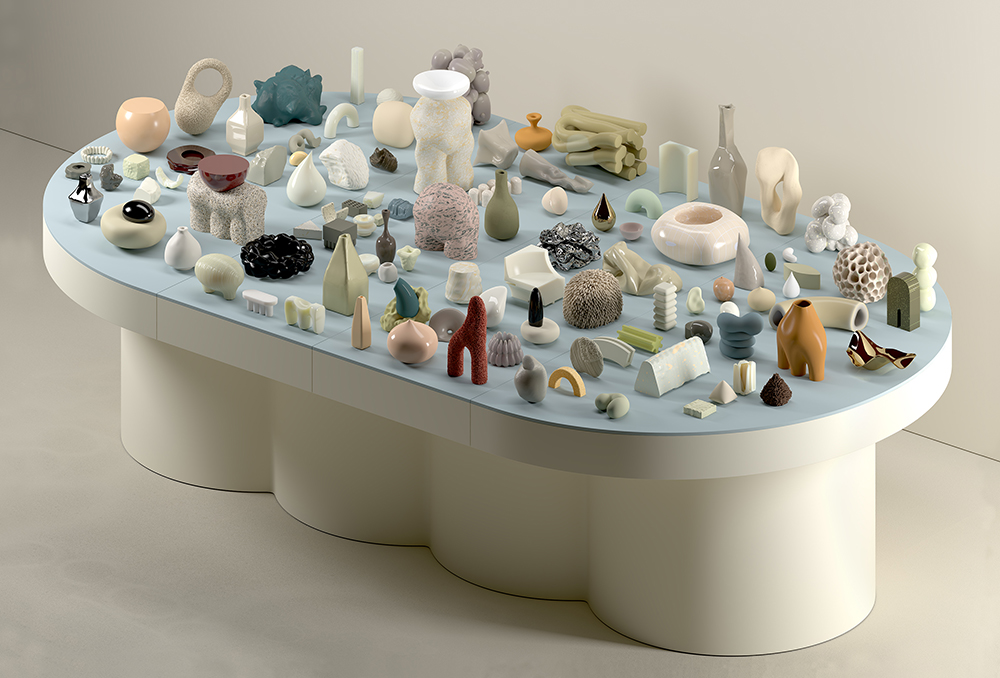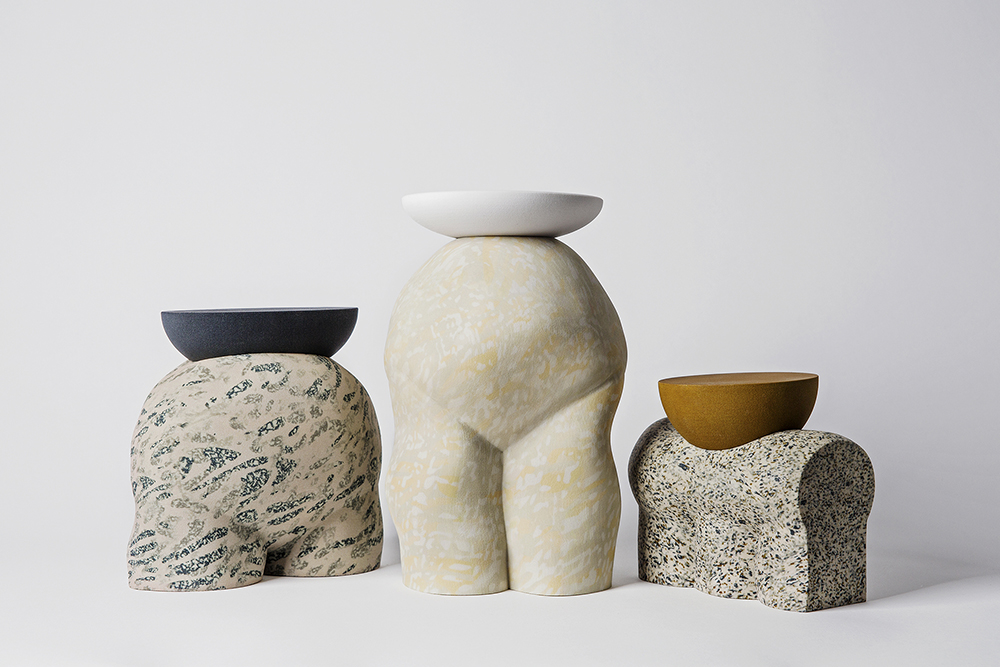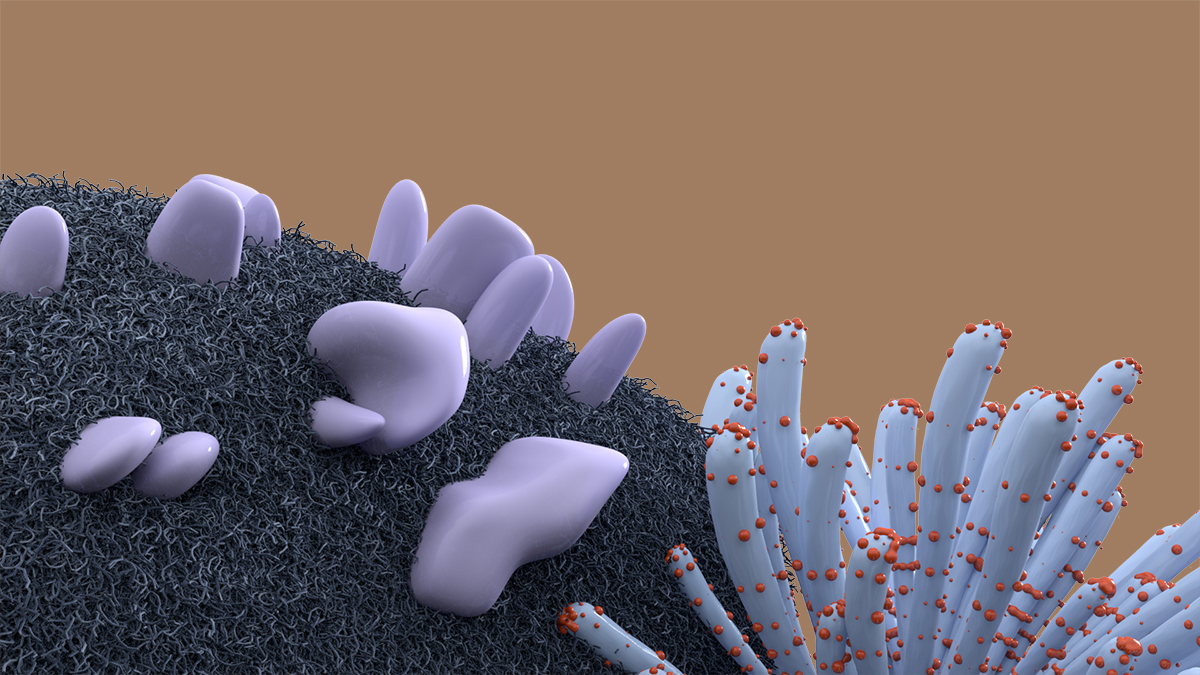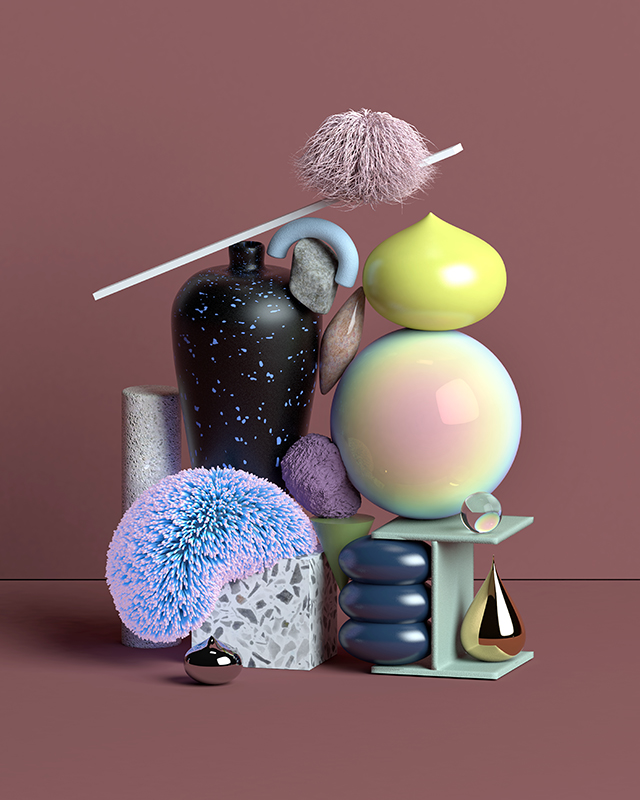Sharp Feelers – Soft Antennas
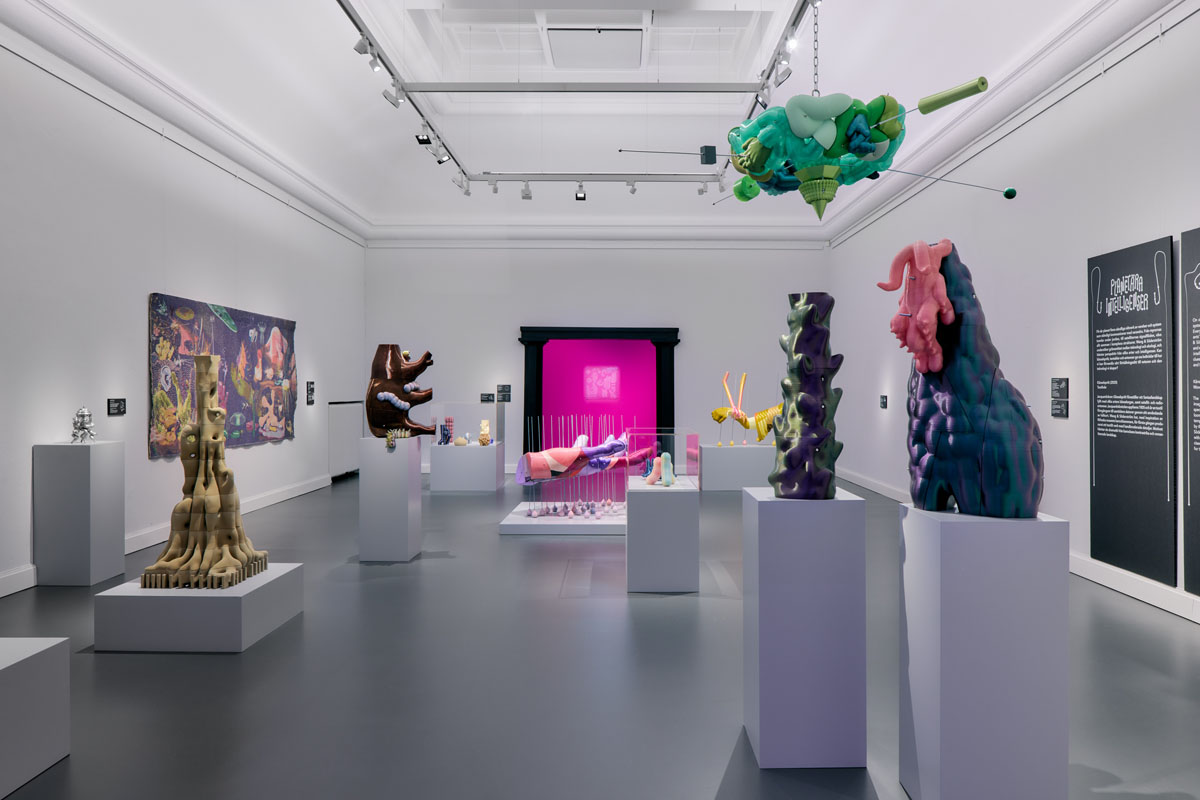
Year: 2025
Solo exhibition
Röhsska Museum, Gothenburg
Exhibition period: Mar 29 — Oct 19. 2025
Technique & Material: r3D printed PLA, PLA, Aluminium, 3D animation, projections, UV-print, Augmented Reality (AR), metal, scent, sound. (various dimensions)
Installation photo by: Carl Ander
Curator: Olivia Berkowicz
Exhibition concept & Visual Identity: Wang & Söderström
Graphic Design: Jonathan Sahlin
Solo exhibition
Röhsska Museum, Gothenburg
Exhibition period: Mar 29 — Oct 19. 2025
Technique & Material: r3D printed PLA, PLA, Aluminium, 3D animation, projections, UV-print, Augmented Reality (AR), metal, scent, sound. (various dimensions)
Installation photo by: Carl Ander
Curator: Olivia Berkowicz
Exhibition concept & Visual Identity: Wang & Söderström
Graphic Design: Jonathan Sahlin
We live on a planet where the physical and digital have merged. New technological networks allow for a rapid exchange of information and knowledge, but also drain
the planet’s resources. In the exhibition Sharp Feelers – Soft Antennas, Wang & Söderström navigate the intersections of speculative design, art, and craft. The duo reflects upon how we relate to each other and coexist in spaces that
are both digital and physical.
By engaging with different forms of intelligences, such as plant, animal, human, and artificial, they seek to broaden our view of design, technology, and craft. The exhibition explores how we can soften technological realities and sharpen our senses.
Here, you will encounter sculpture, film, sound, scent, and interactive installations. Wang & Söderström have immersed themselves in the museum’s collections from the 17th and 18th centuries, resulting in two newly commissioned pieces Känselspröt (Feelers) and 5+sinnen (5+senses) where sensuousness and the systems of nature are in focus.
By engaging with different forms of intelligences, such as plant, animal, human, and artificial, they seek to broaden our view of design, technology, and craft. The exhibition explores how we can soften technological realities and sharpen our senses.
Here, you will encounter sculpture, film, sound, scent, and interactive installations. Wang & Söderström have immersed themselves in the museum’s collections from the 17th and 18th centuries, resulting in two newly commissioned pieces Känselspröt (Feelers) and 5+sinnen (5+senses) where sensuousness and the systems of nature are in focus.
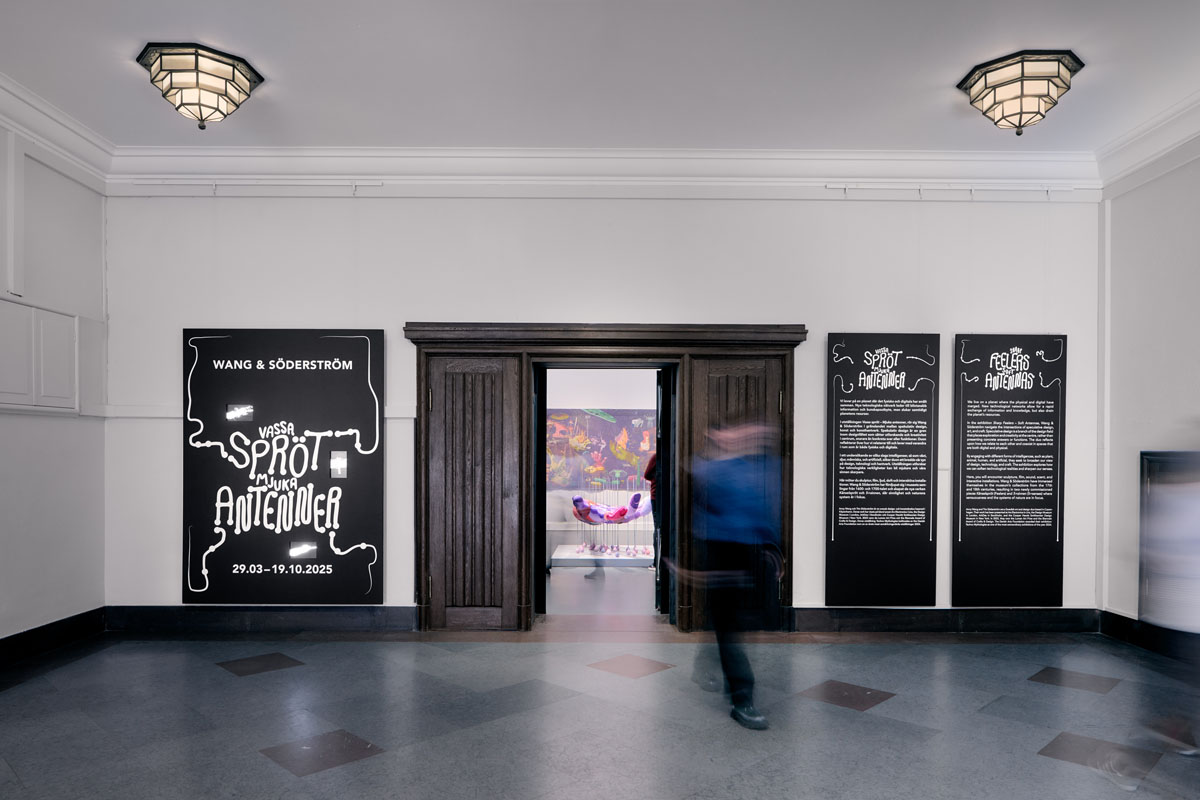
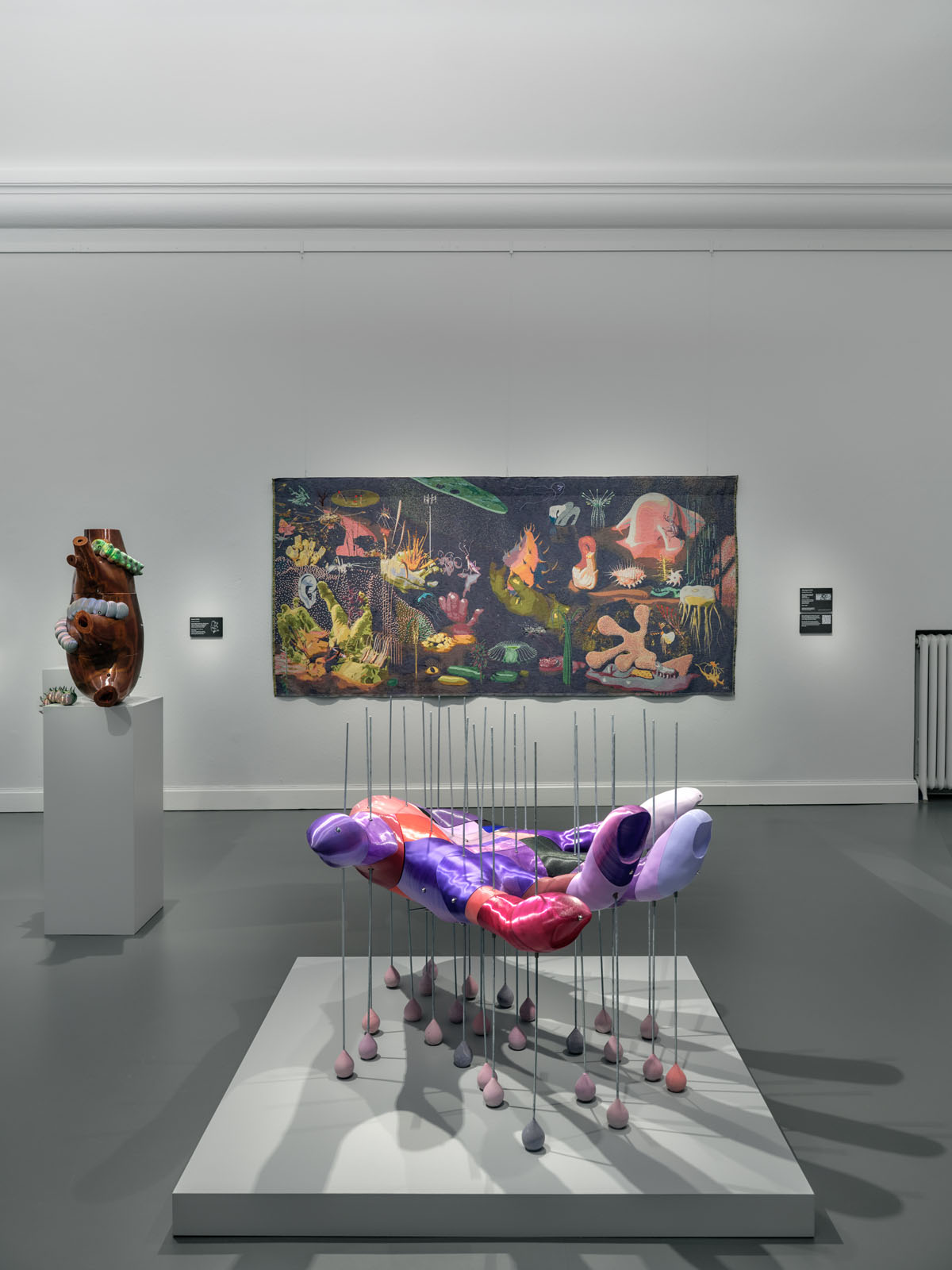
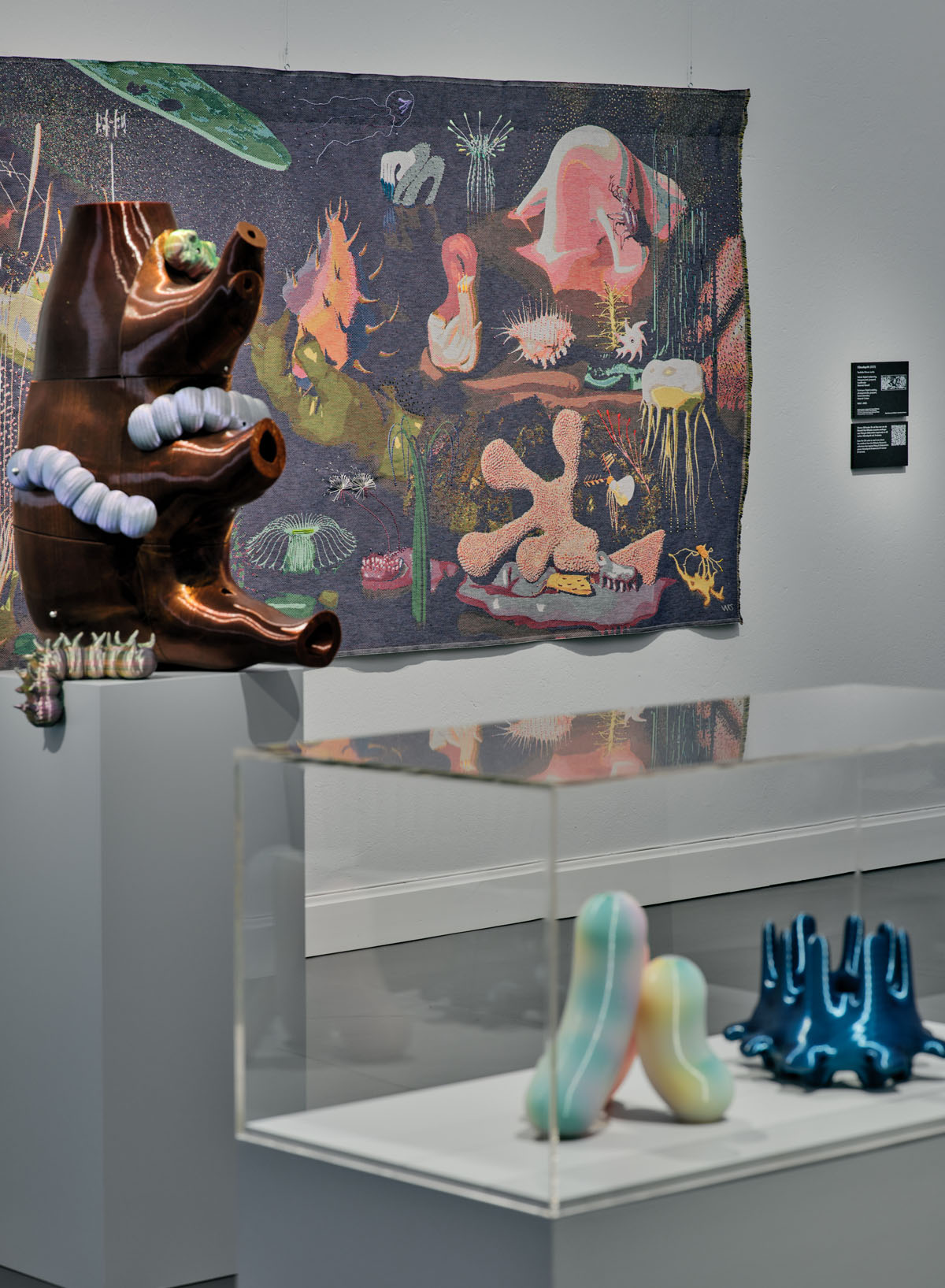
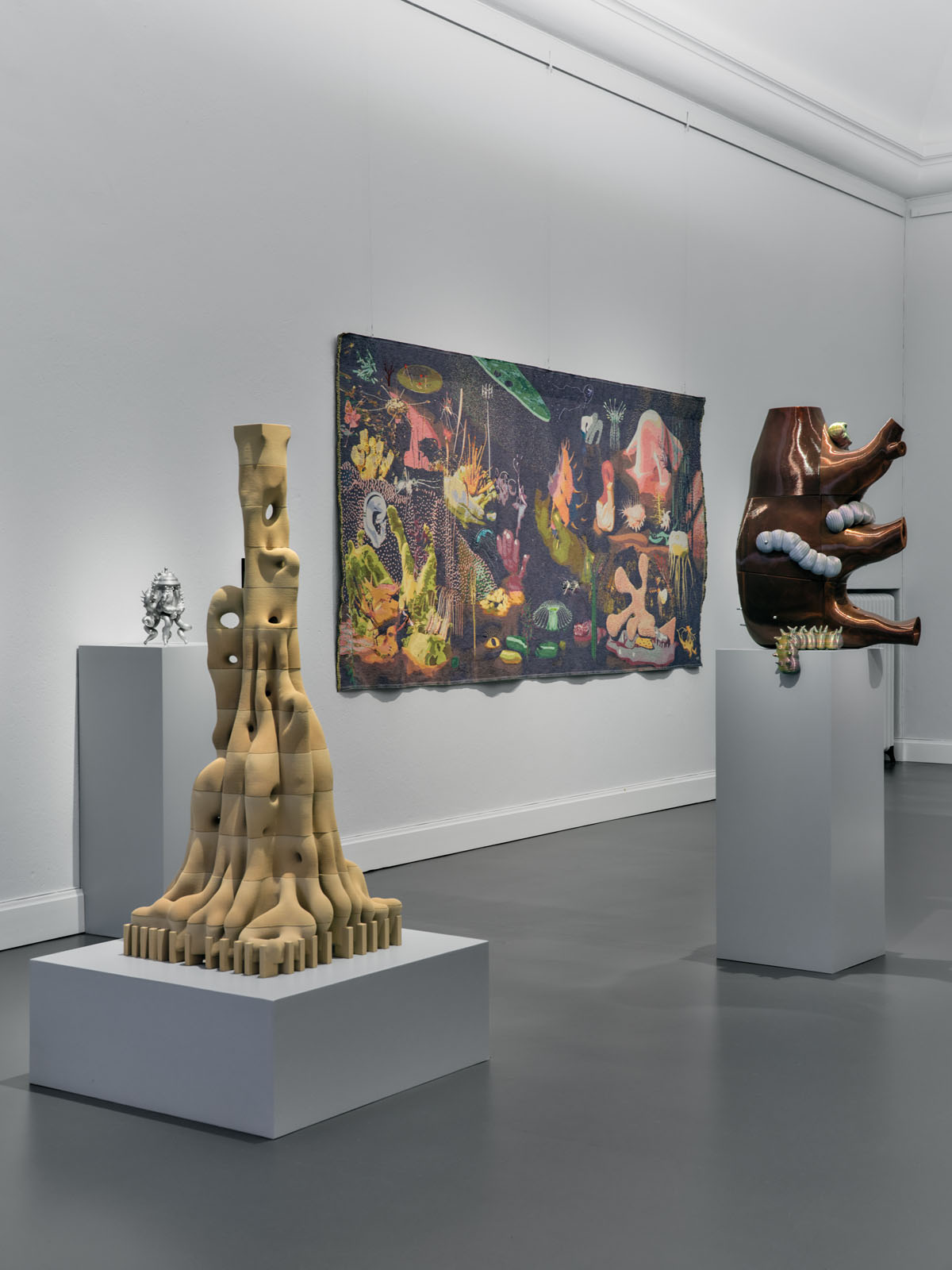
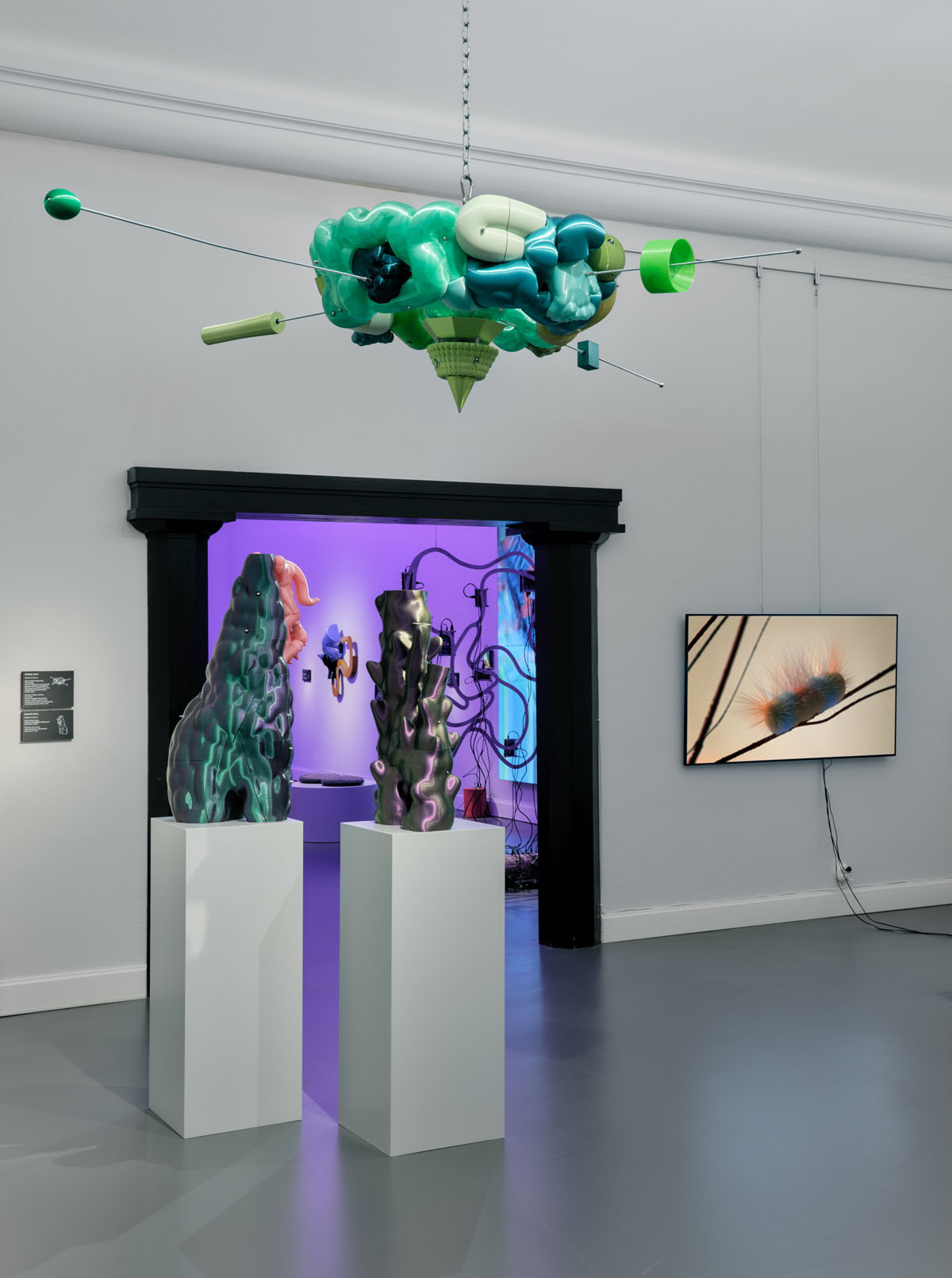
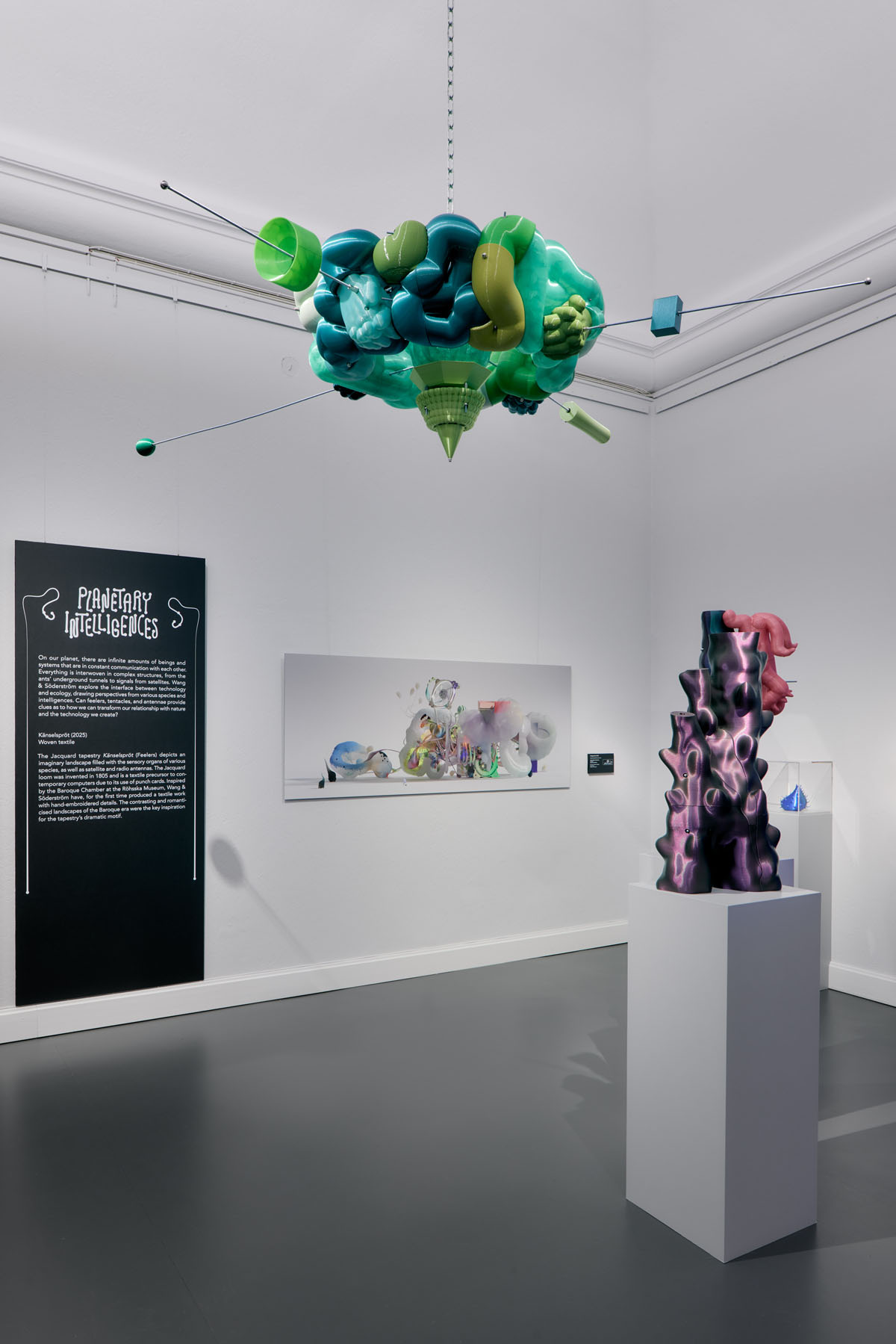
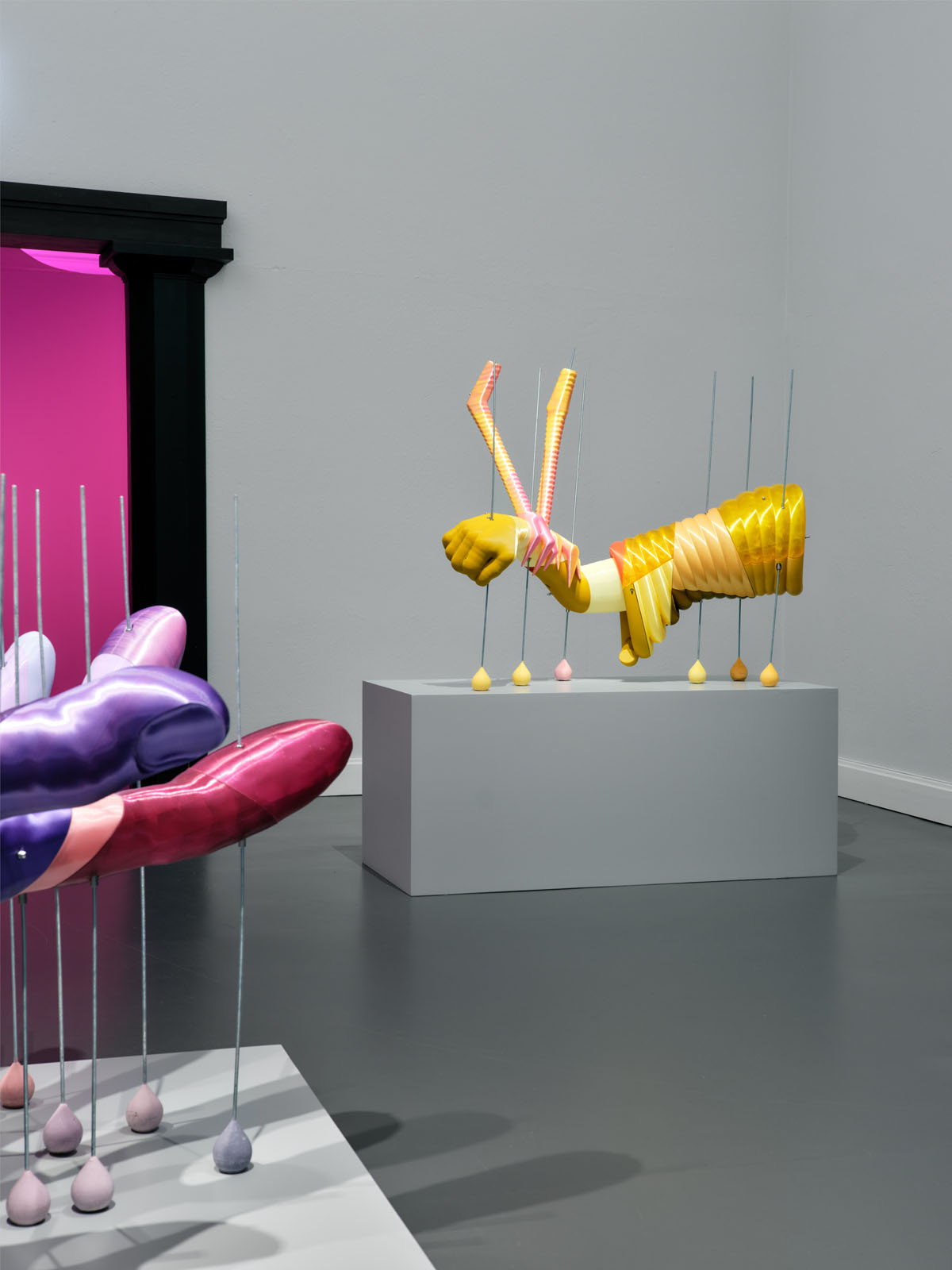
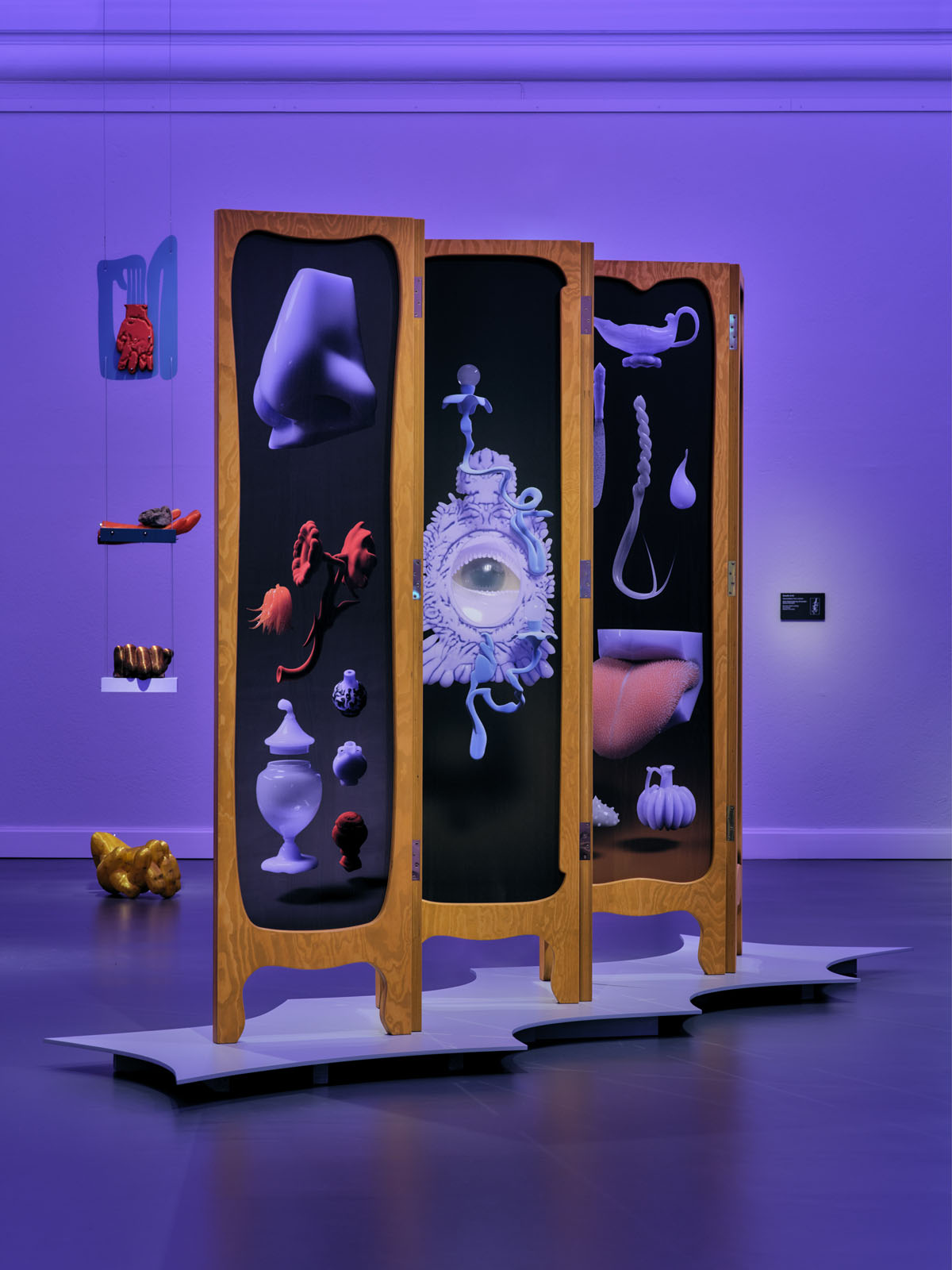
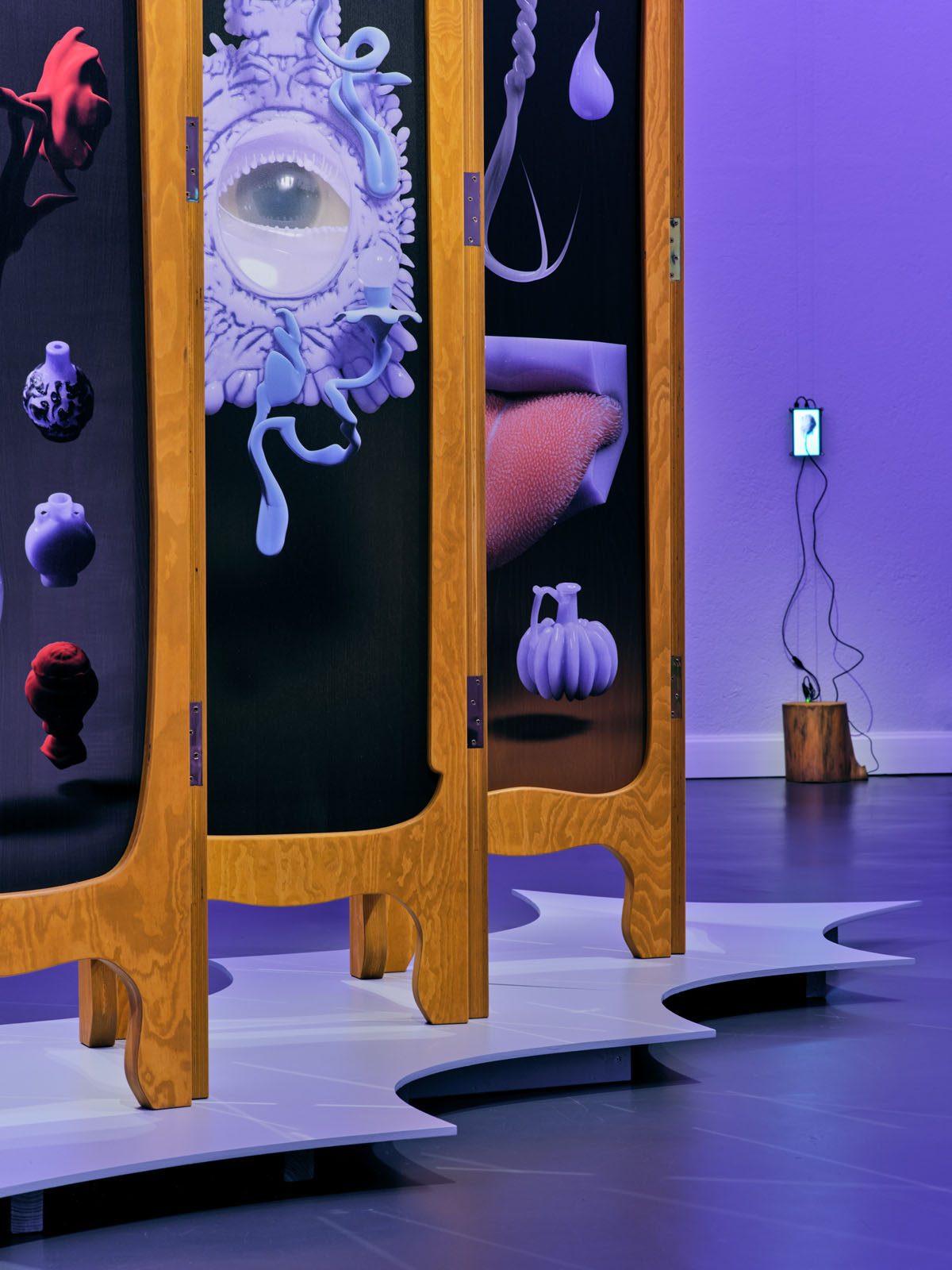
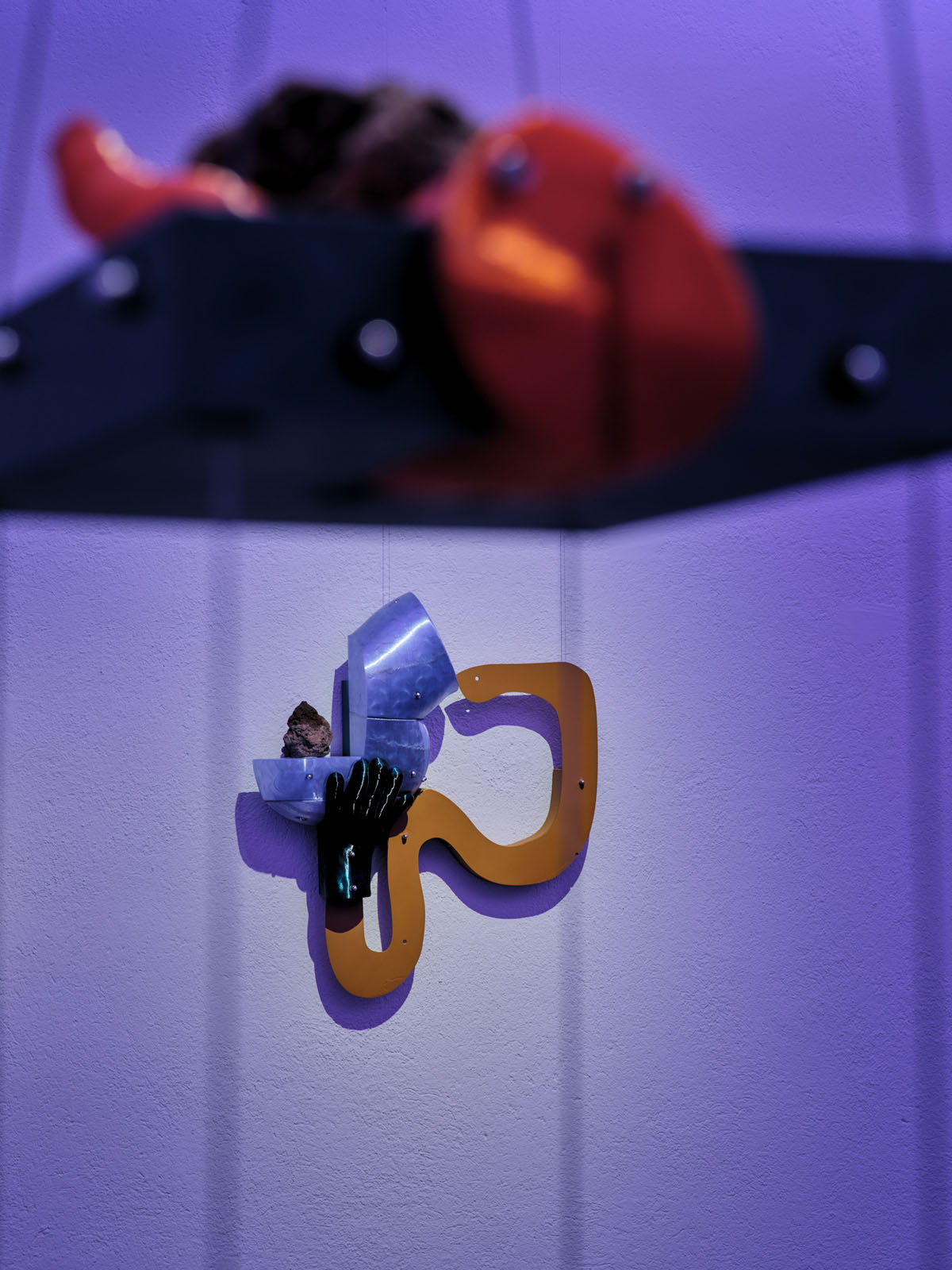
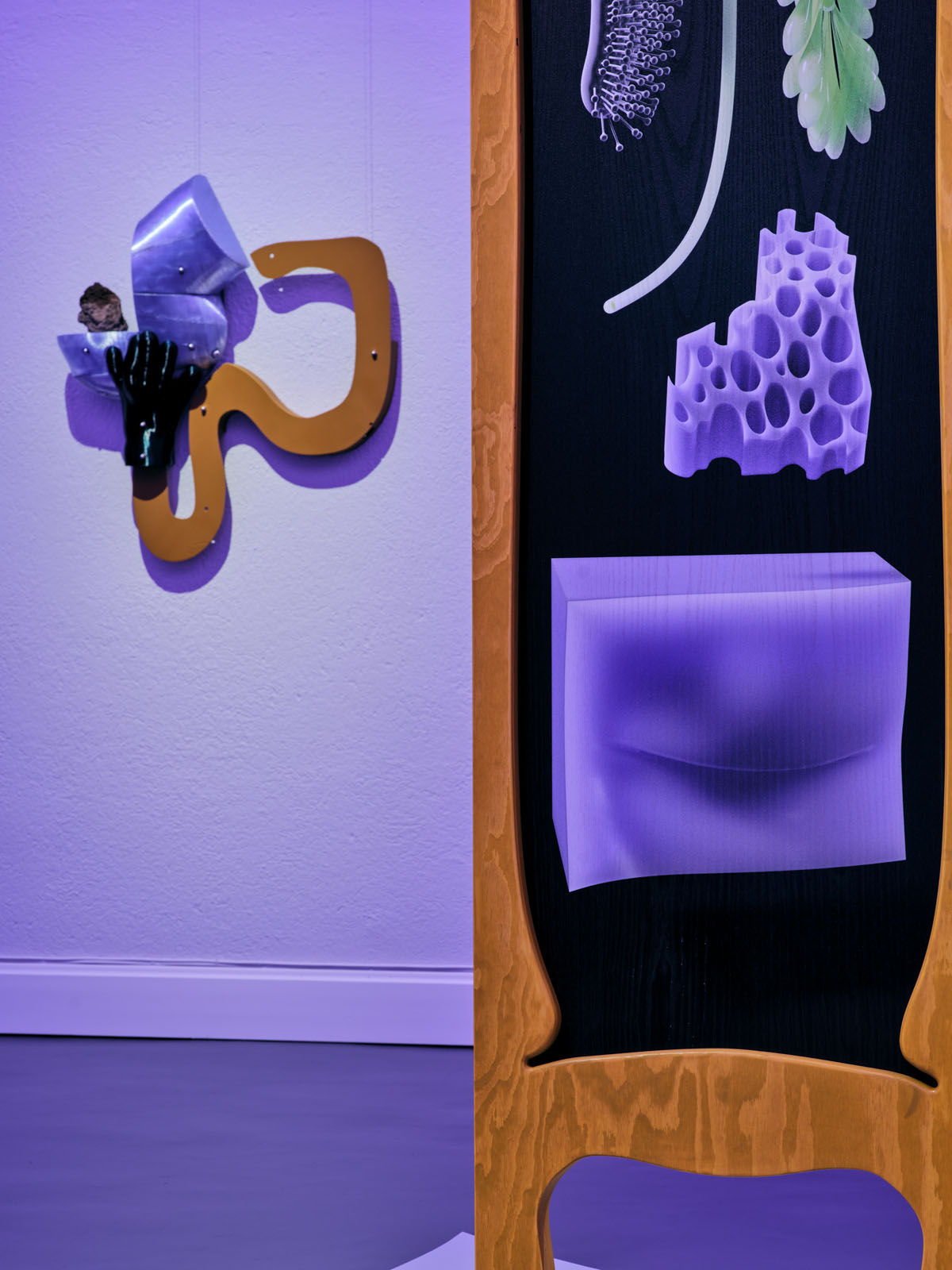
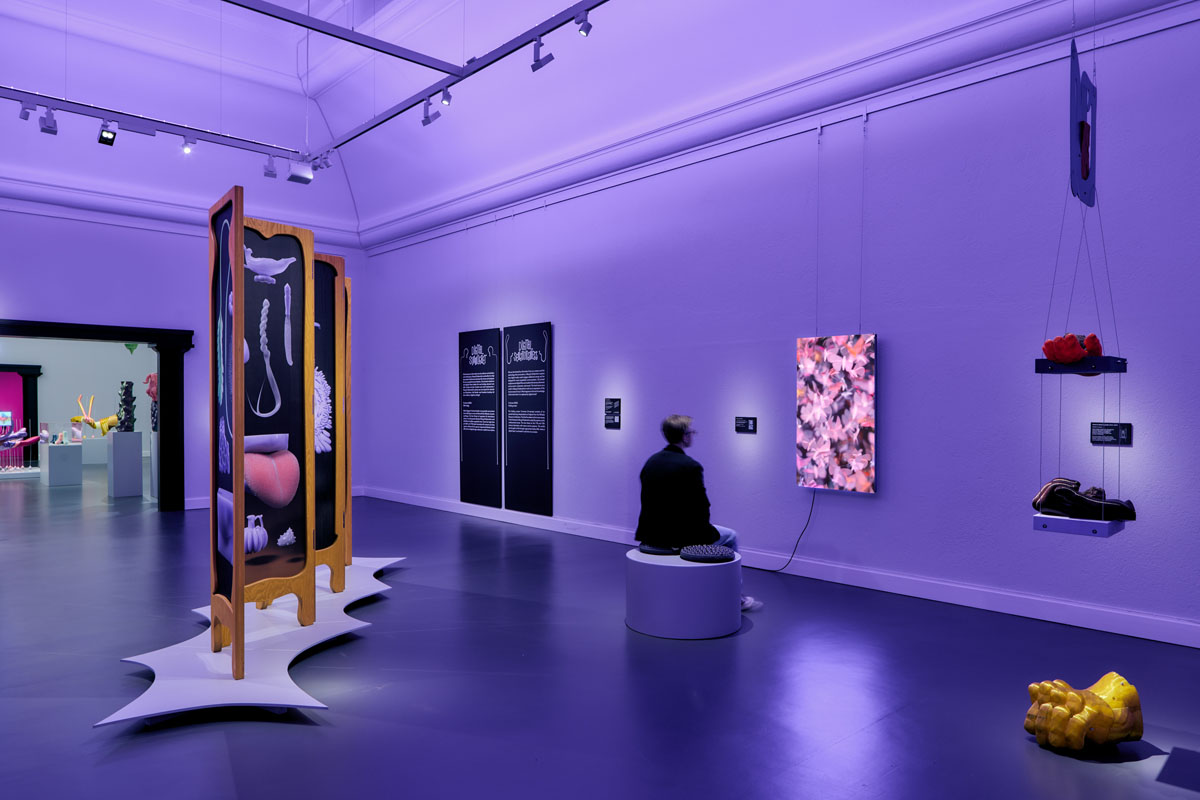
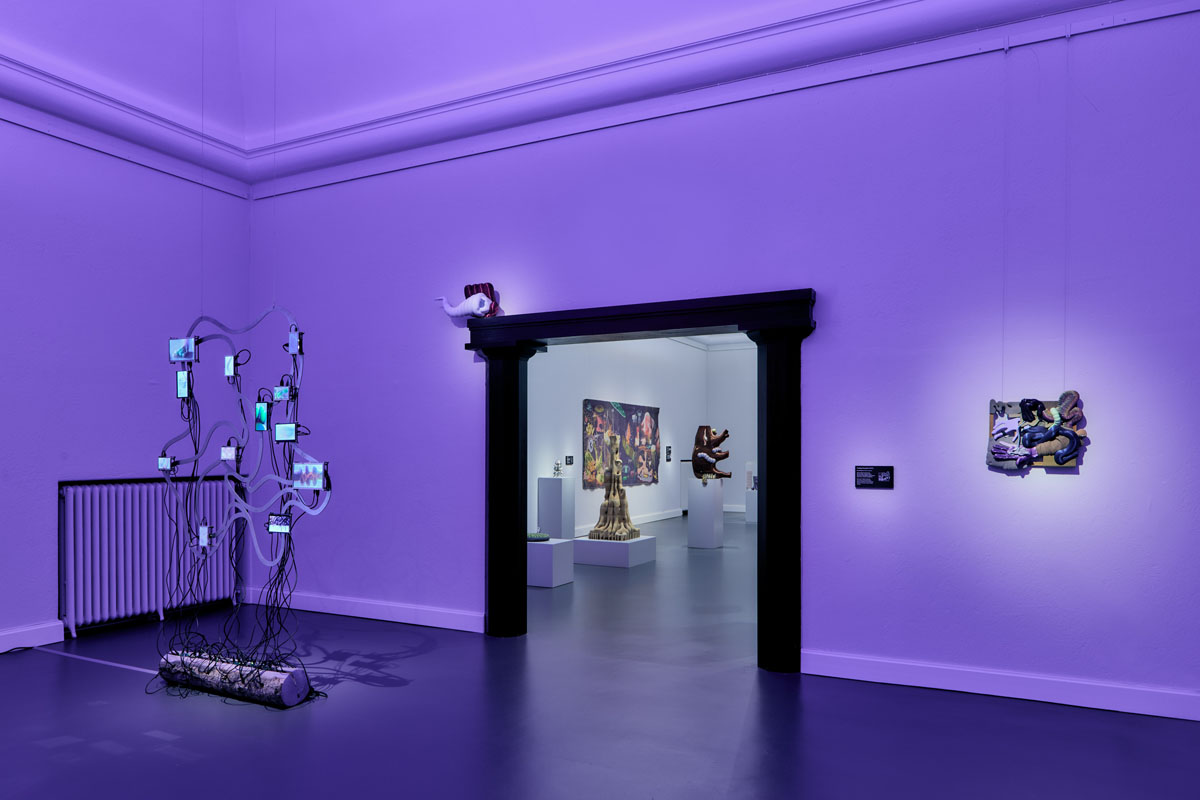
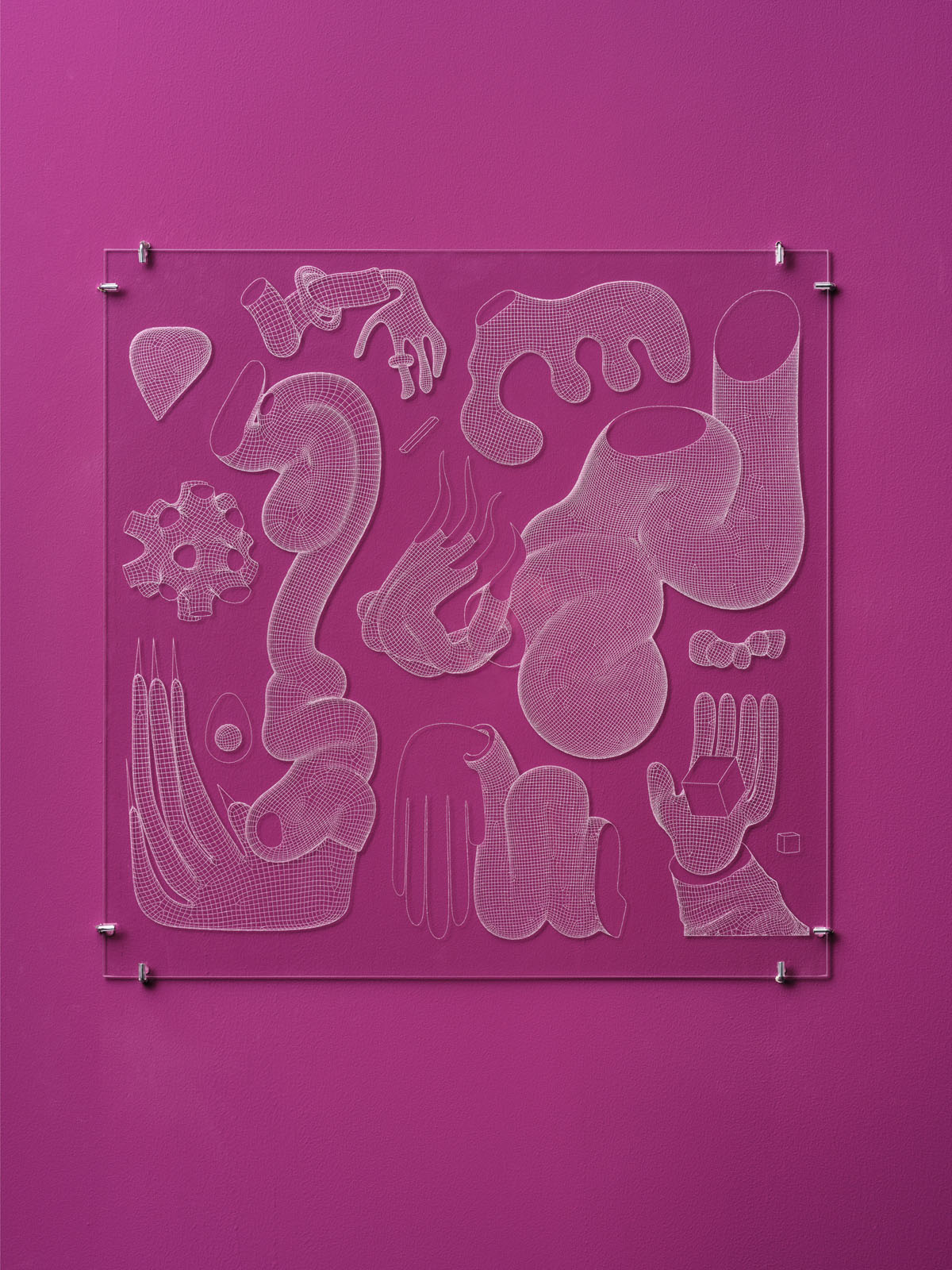
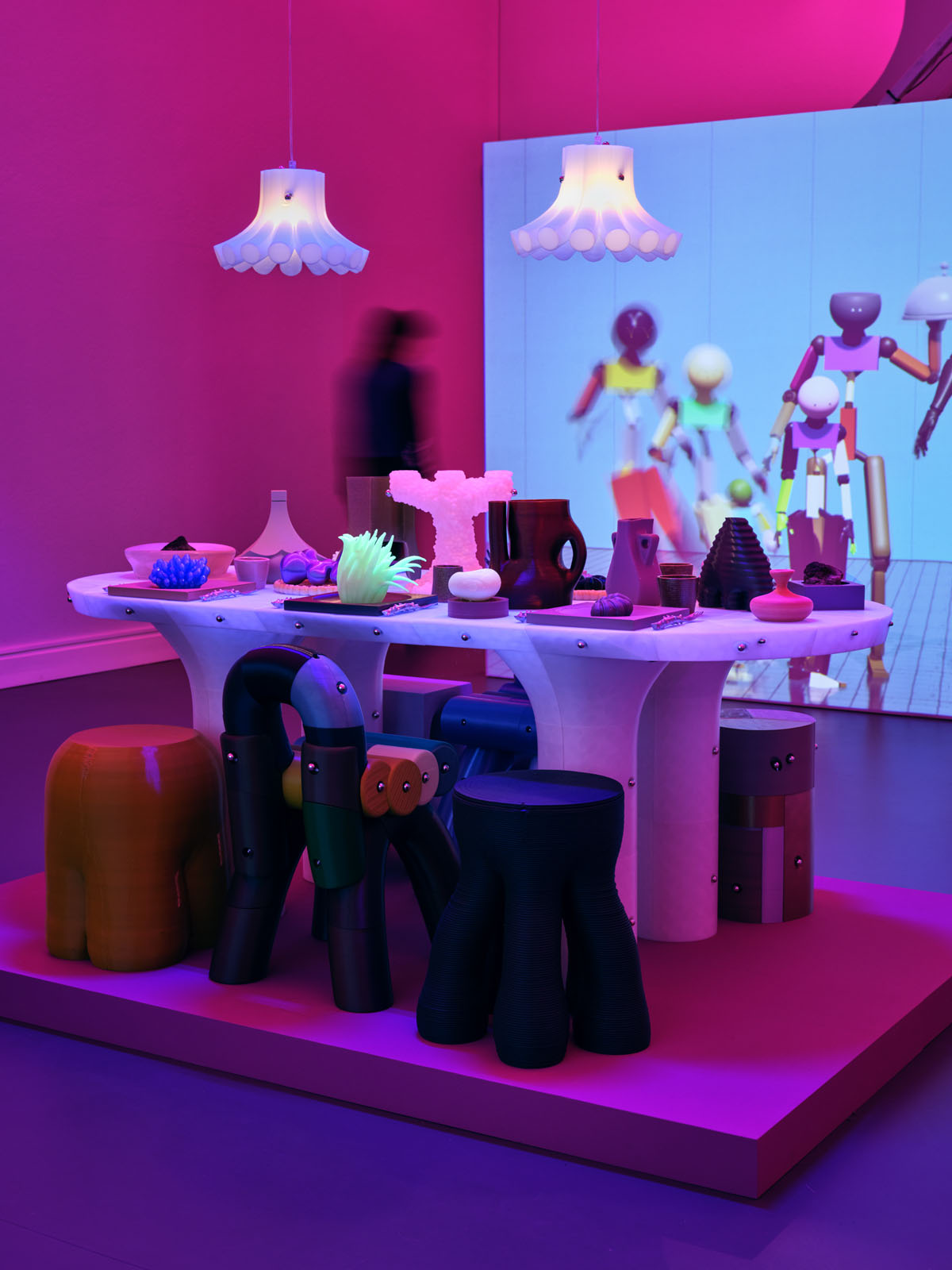
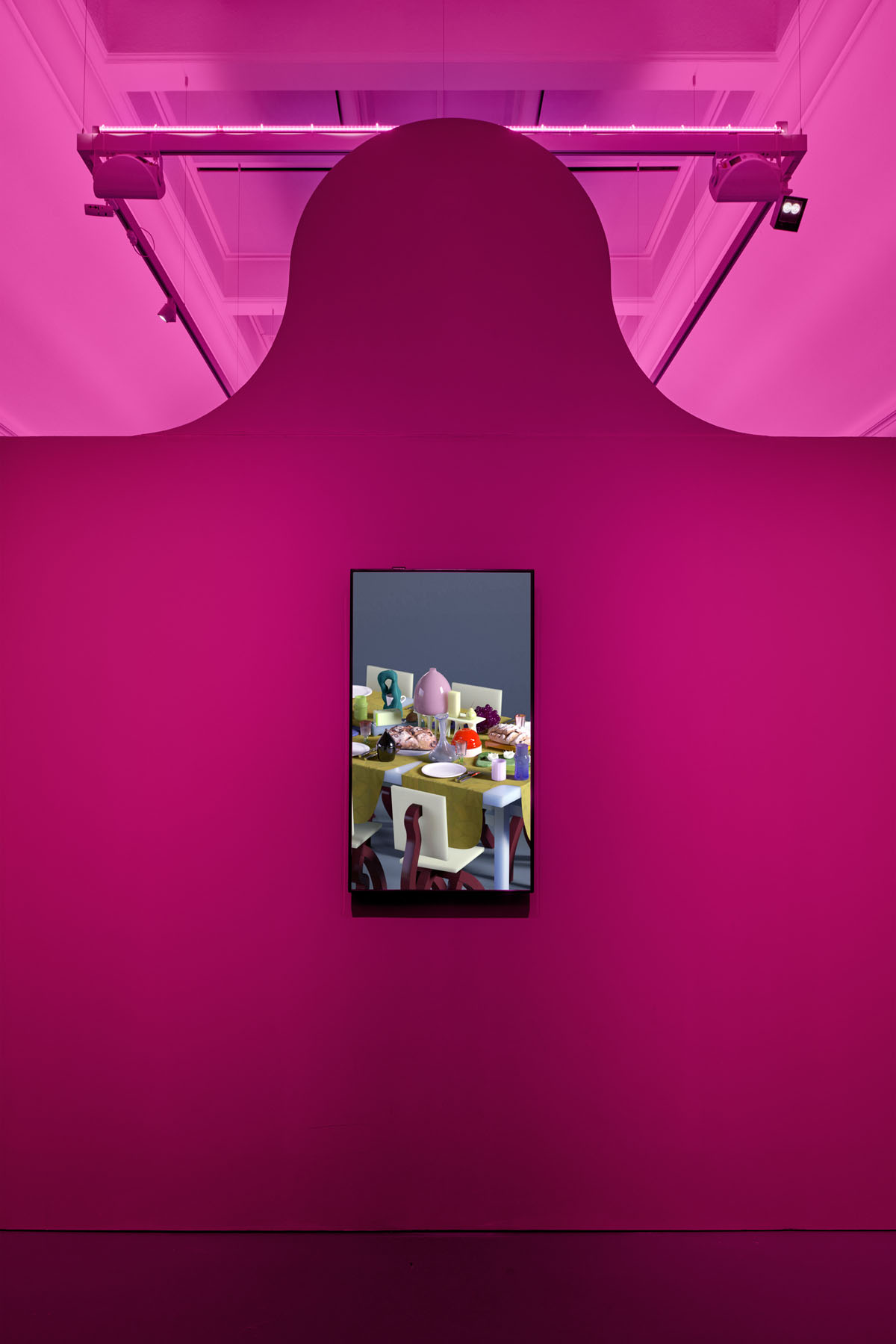
27 Antennae
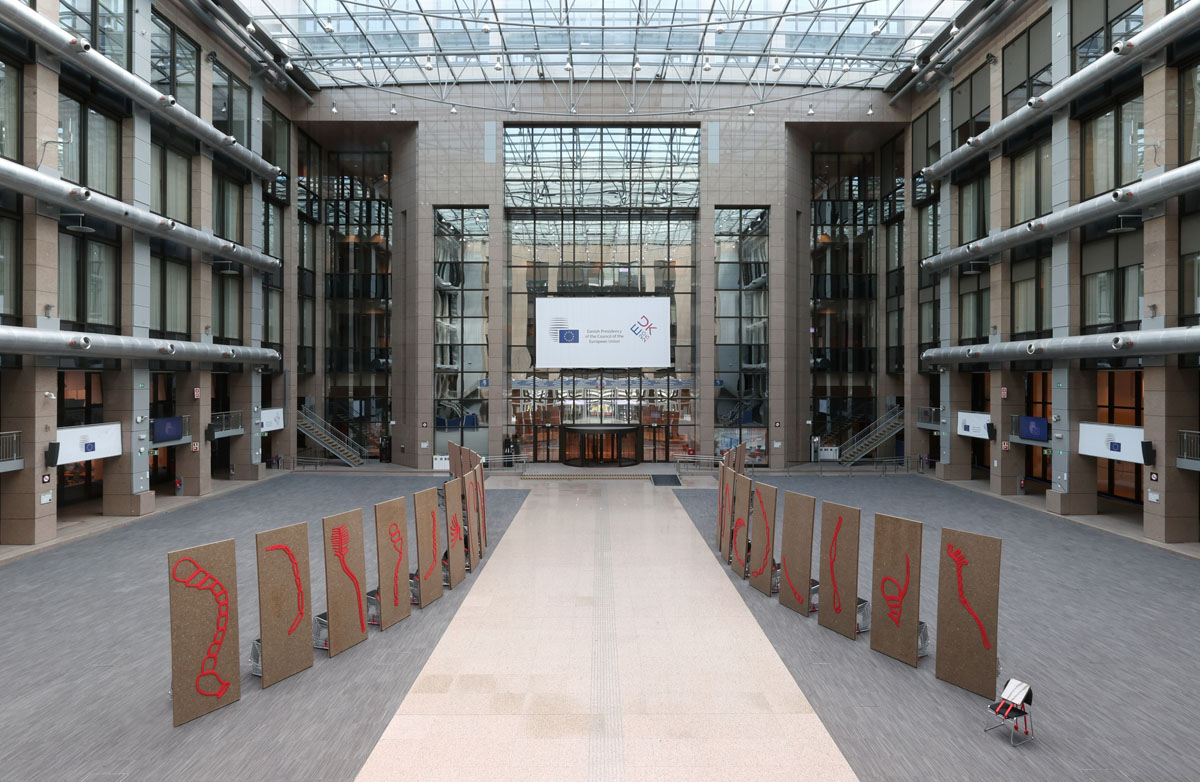
Year: 2025
Commissioned Public Art / Installation
EU Council, Justus Lipsius Building, Brussels
Exhibition period: July 16 — Dec 31. 2025
Technique: Digital sculpting, 3D printing, augmented reality (AR)
Material: 3D printed recycled plastic and woodfibers, eelgrass boards, fire retardant MDF boards, cargo straps
Photos by: EU Council + Wang & Söderström
Eelgrass boards: Søuld
Recycled plastic and woodfibers: Woodcomposite Sweden
![]()
Commissioned Public Art / Installation
EU Council, Justus Lipsius Building, Brussels
Exhibition period: July 16 — Dec 31. 2025
Technique: Digital sculpting, 3D printing, augmented reality (AR)
Material: 3D printed recycled plastic and woodfibers, eelgrass boards, fire retardant MDF boards, cargo straps
Photos by: EU Council + Wang & Söderström
Eelgrass boards: Søuld
Recycled plastic and woodfibers: Woodcomposite Sweden
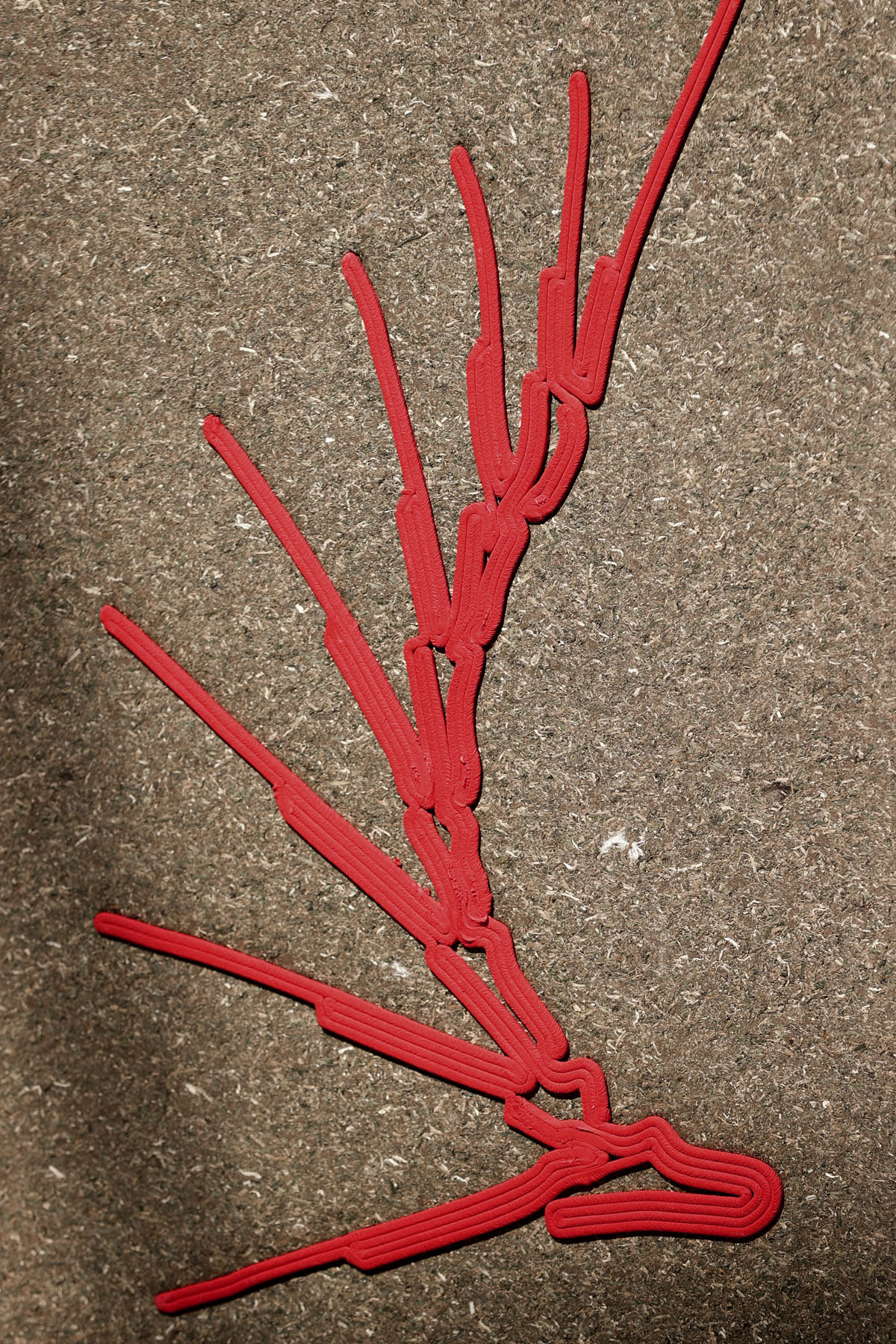
Artistic decoration commissioned by the Ministry of Foreign Affairs of Denmark for EU Council Building during the Danish Presidency of the EU Council.
Installed along the aisle, 27 panels with sculptural antennae—matching the number of EU member states—symbolise the collective sensitivity and responsibility of nations. Made from recycled 3D-printed plastic, the forms reinterpret antennae from various European insect species 1.
The decoration concept celebrates alternative ways of sensing—plant, animal, human, and artificial—highlighting the artists’ view of the need to move beyond a singular perspective in diplomacy. Set against eelgrass panels from the Danish coasts, the antennae’s vivid red colour signals urgency and their shapes ambiguity—are they biological, technological, or ancestral?
The panel formation is inspired by the curved shield-covered Viking ship or petroglyphs. Vikings were not only raiders, but skilled engineers and navigators. The panels invite the viewers to reflect on how to lead in navigating today’s climatic and technological shifts. The artists ask how do we make urgent and empathetic decisions and what do we leave behind?
Positioned within a space of power, the antennae represent both reception and transmission: decisions made here ripple outward, while each nation’s voice can influence the centre.
The project is based on a circular concept, making use of existing elements such as chairs and tables. Once the installation or artwork comes to an end, all components can be reused, repurposed, or recycled.
A speculative insects grows and evolve during the presidency via AR.
1 Based on information from the European Red List of Insect Taxonomists, 2022
Installed along the aisle, 27 panels with sculptural antennae—matching the number of EU member states—symbolise the collective sensitivity and responsibility of nations. Made from recycled 3D-printed plastic, the forms reinterpret antennae from various European insect species 1.
The decoration concept celebrates alternative ways of sensing—plant, animal, human, and artificial—highlighting the artists’ view of the need to move beyond a singular perspective in diplomacy. Set against eelgrass panels from the Danish coasts, the antennae’s vivid red colour signals urgency and their shapes ambiguity—are they biological, technological, or ancestral?
The panel formation is inspired by the curved shield-covered Viking ship or petroglyphs. Vikings were not only raiders, but skilled engineers and navigators. The panels invite the viewers to reflect on how to lead in navigating today’s climatic and technological shifts. The artists ask how do we make urgent and empathetic decisions and what do we leave behind?
Positioned within a space of power, the antennae represent both reception and transmission: decisions made here ripple outward, while each nation’s voice can influence the centre.
The project is based on a circular concept, making use of existing elements such as chairs and tables. Once the installation or artwork comes to an end, all components can be reused, repurposed, or recycled.
A speculative insects grows and evolve during the presidency via AR.
1 Based on information from the European Red List of Insect Taxonomists, 2022
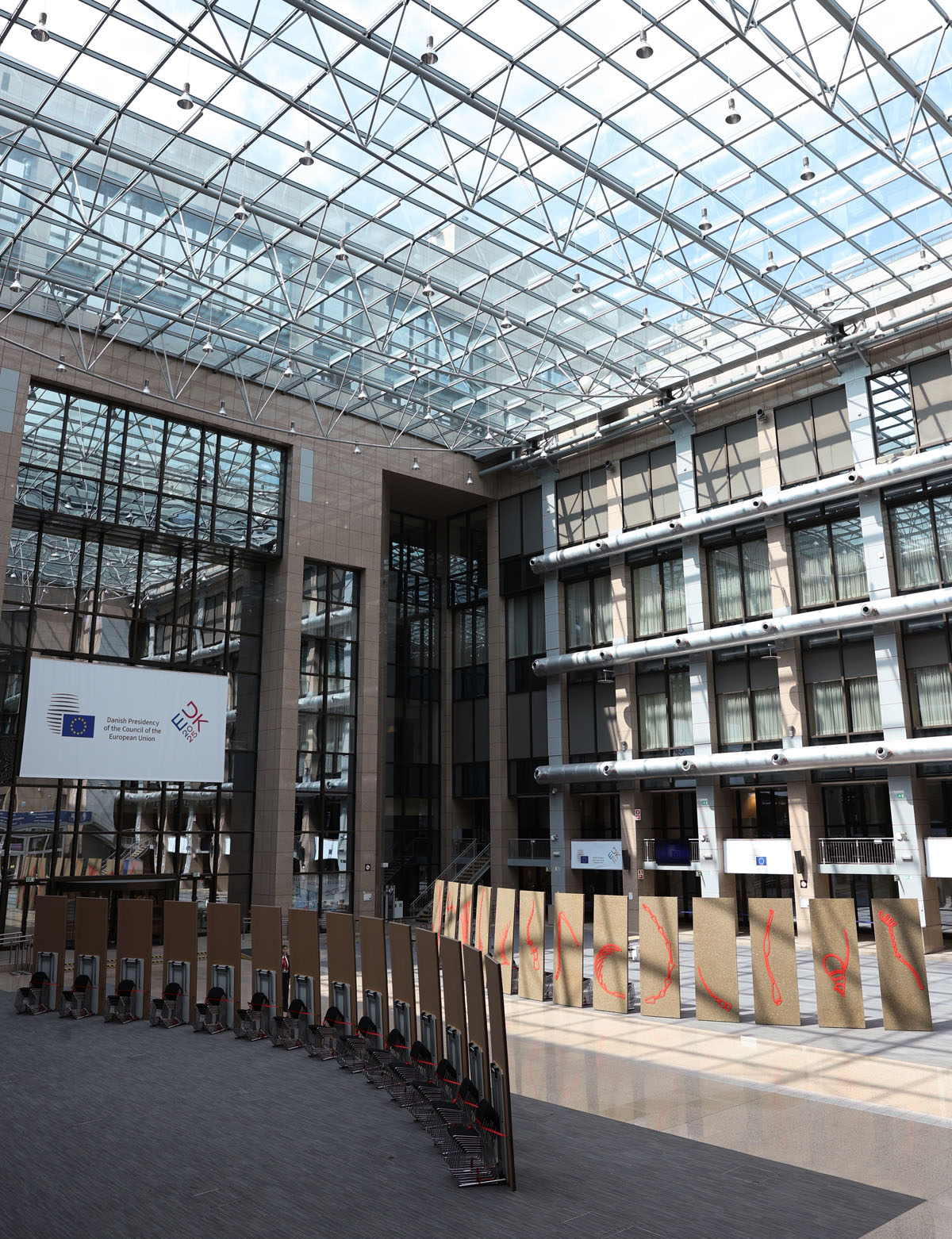
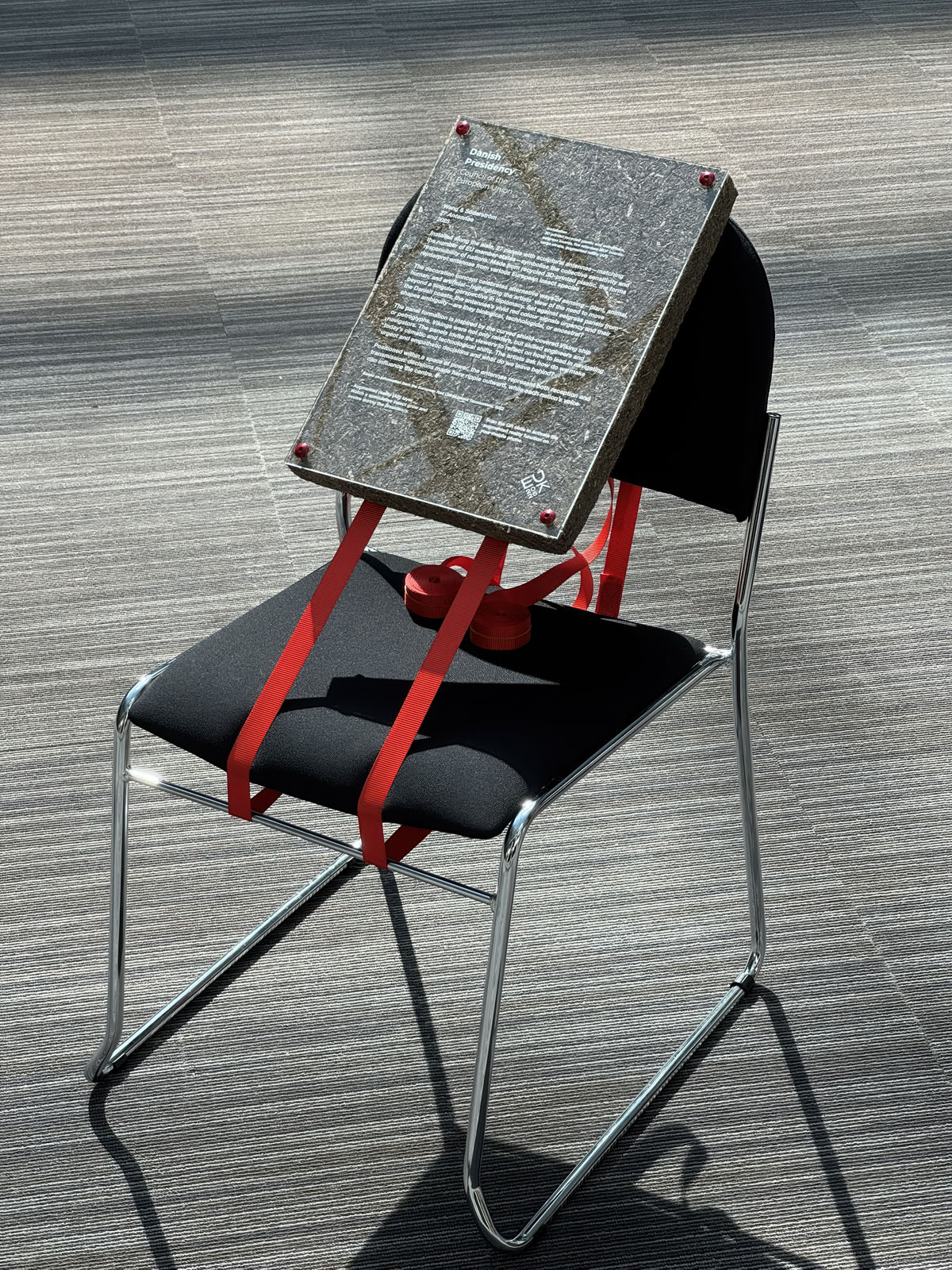
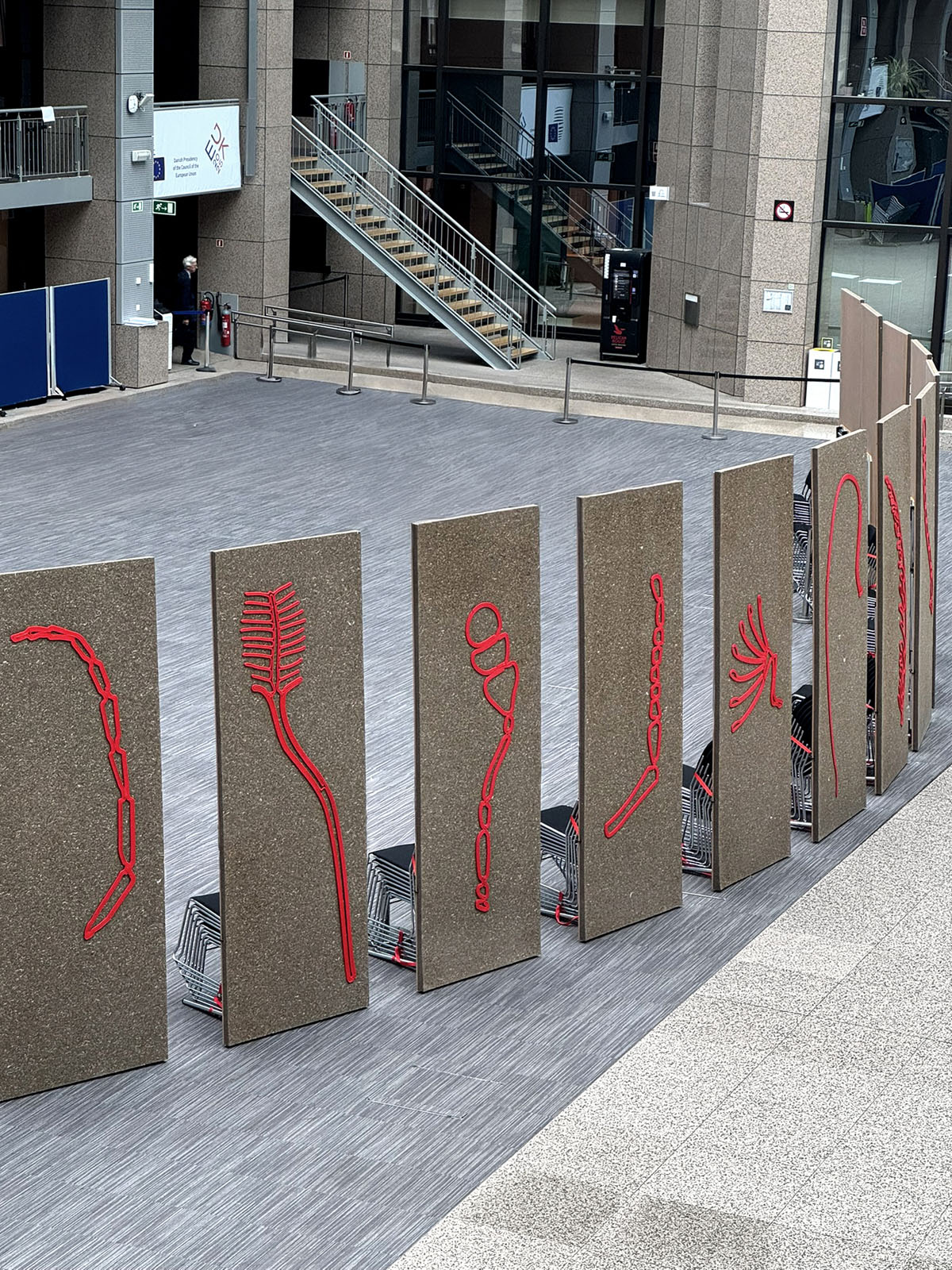
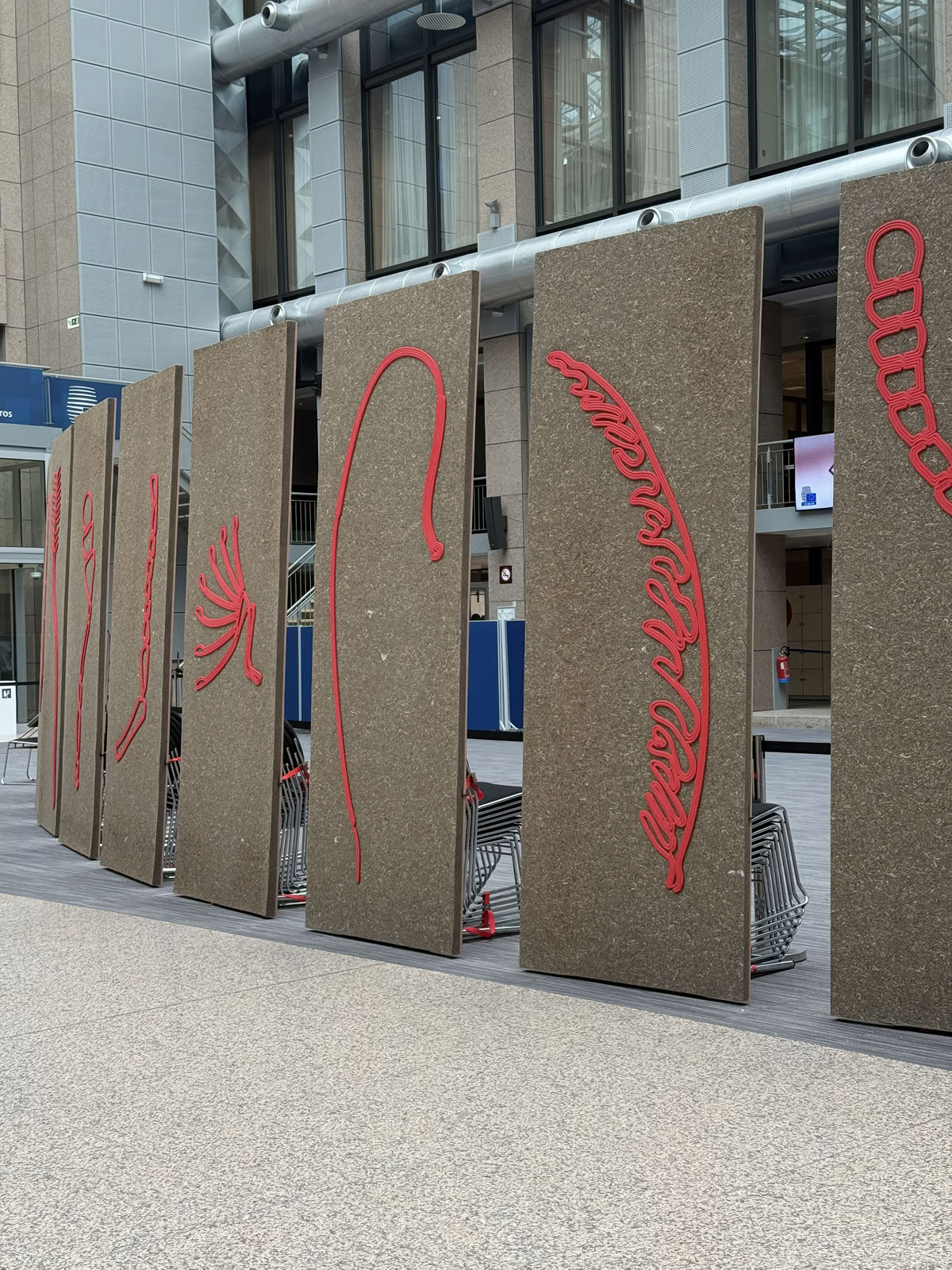
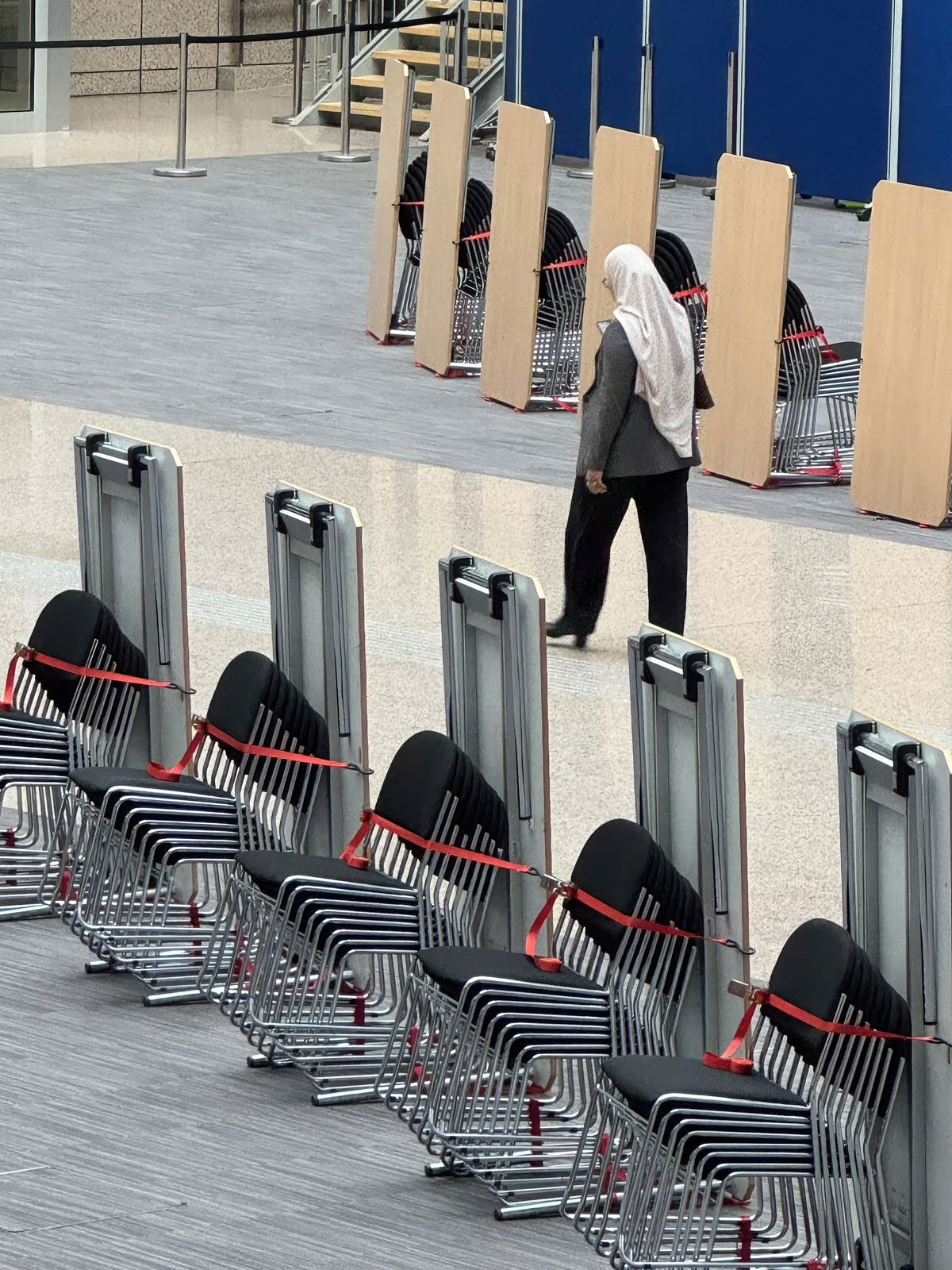
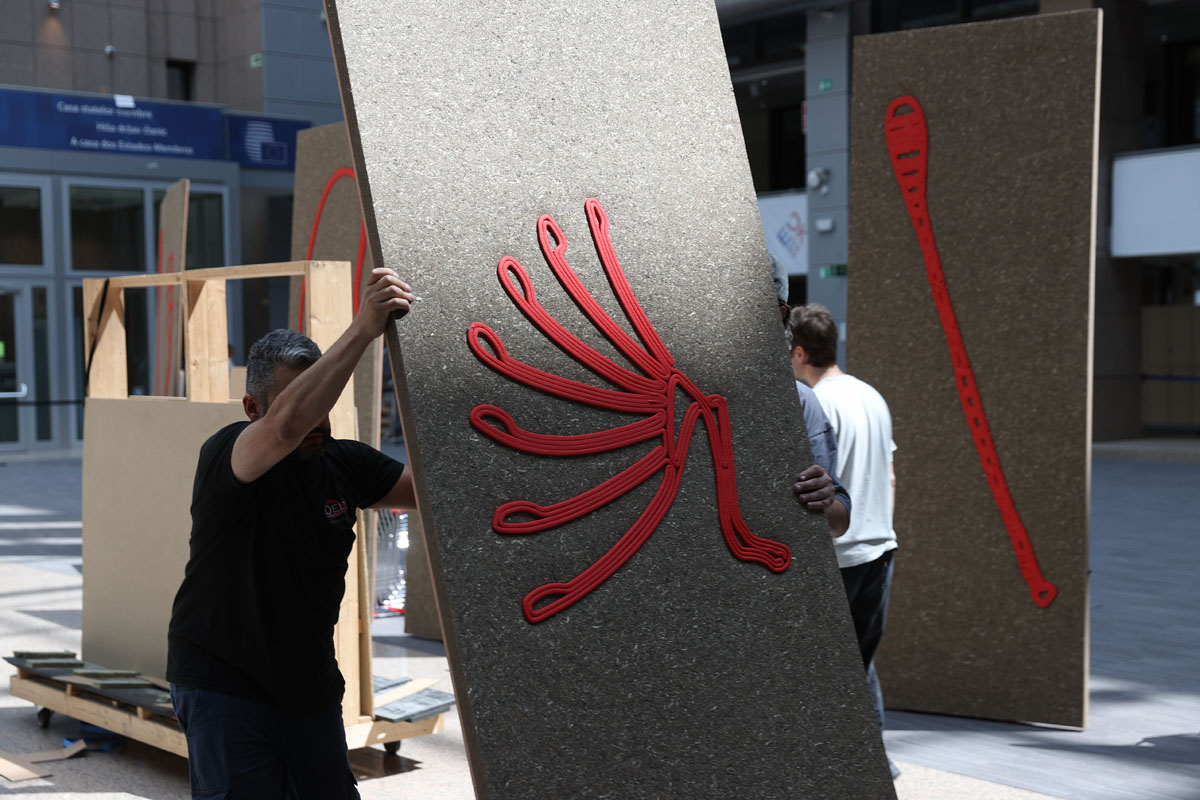
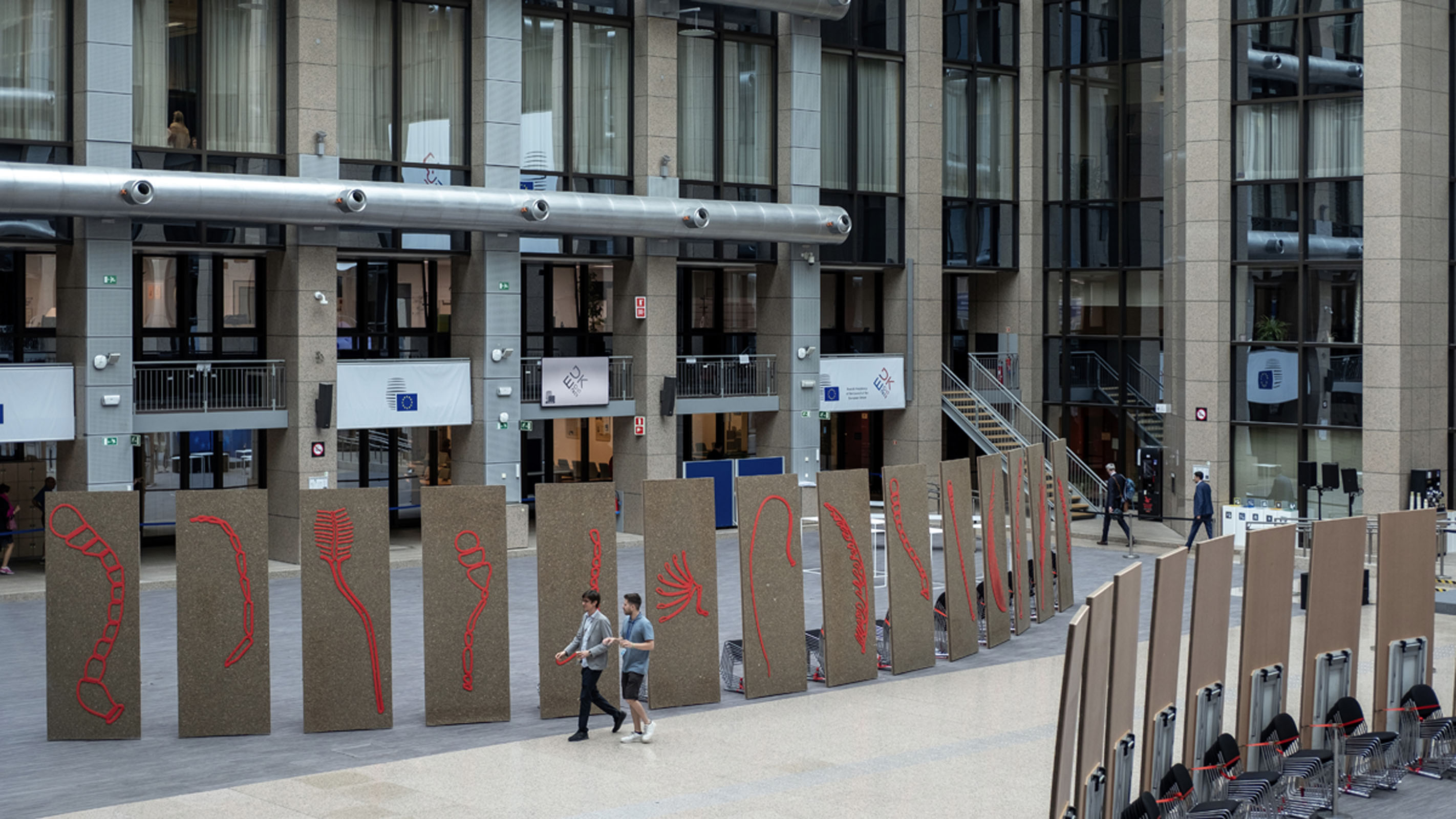
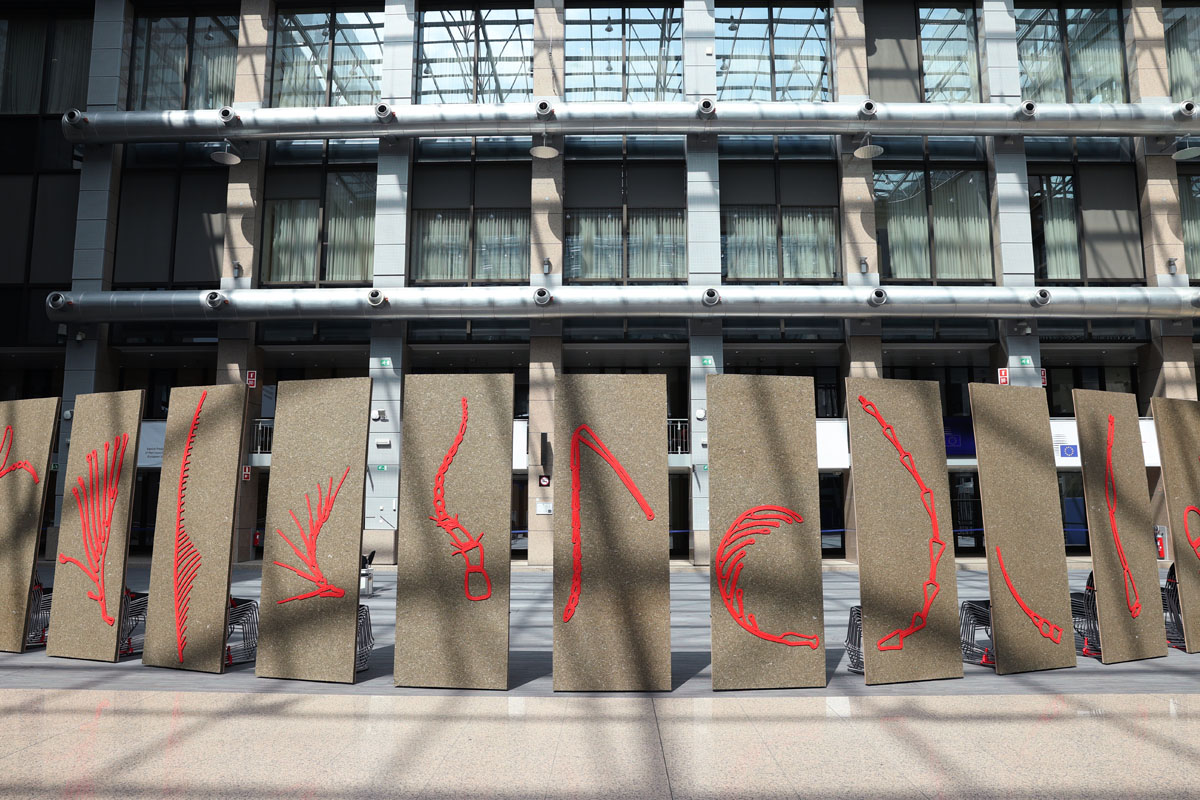
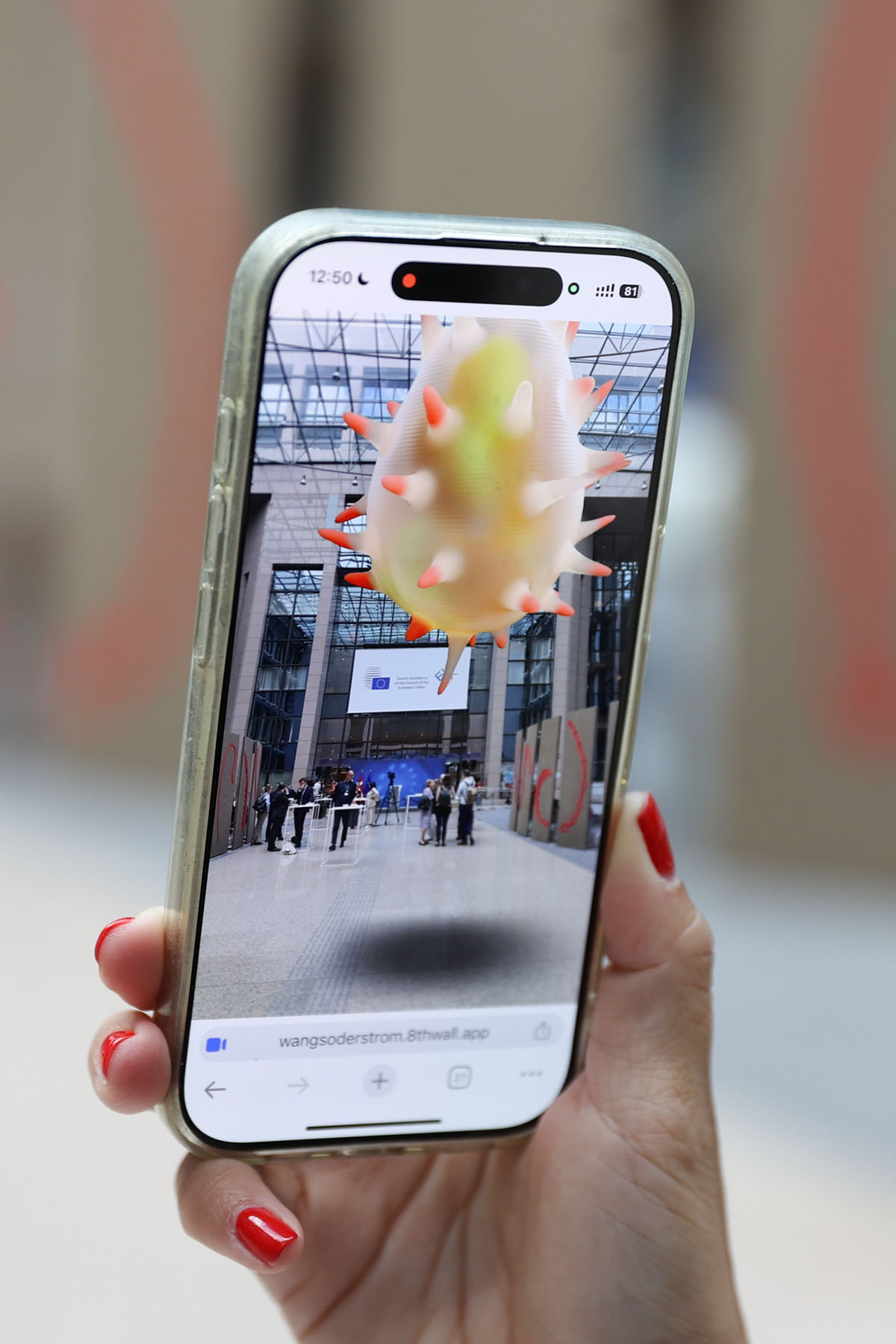
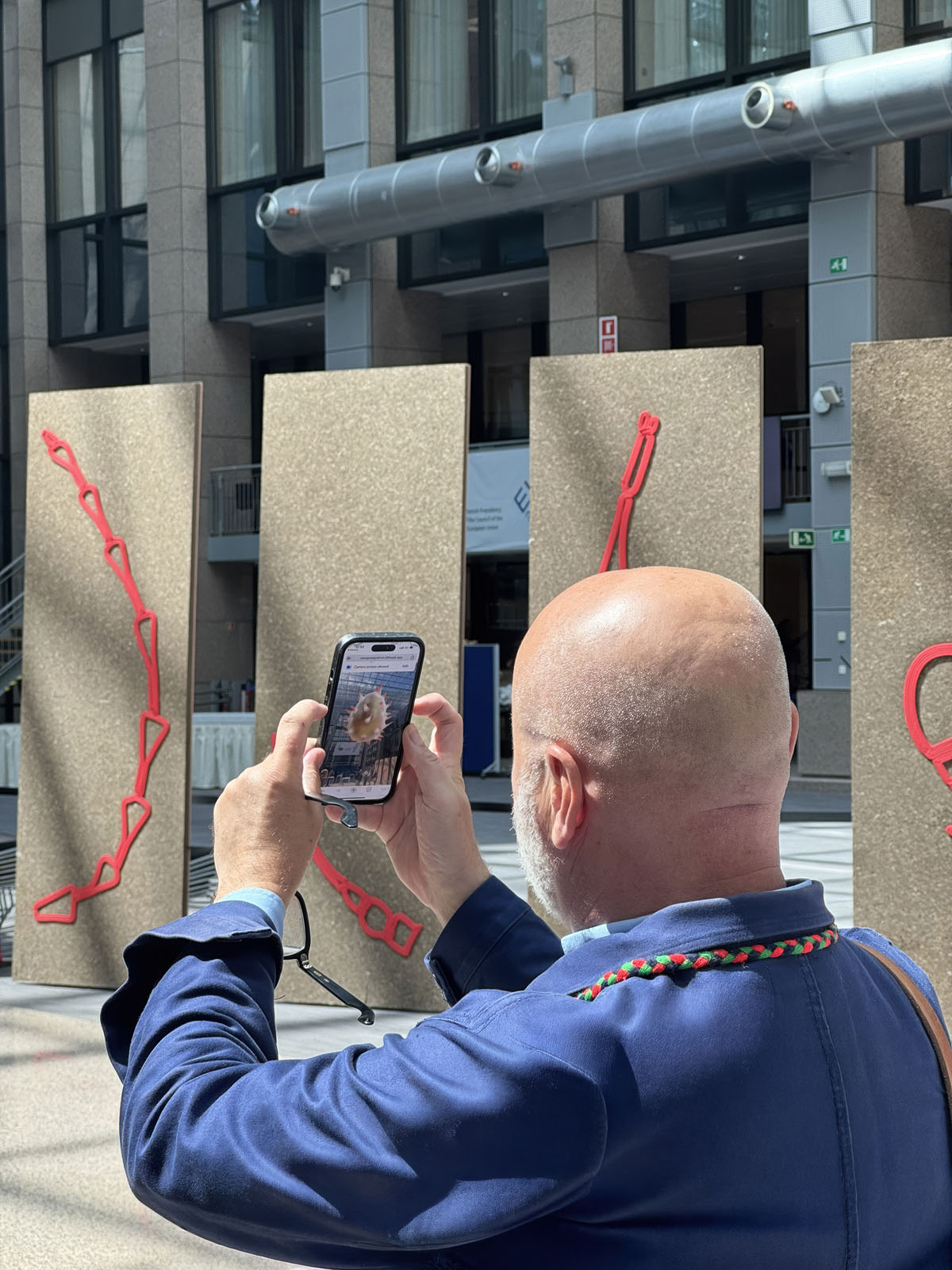
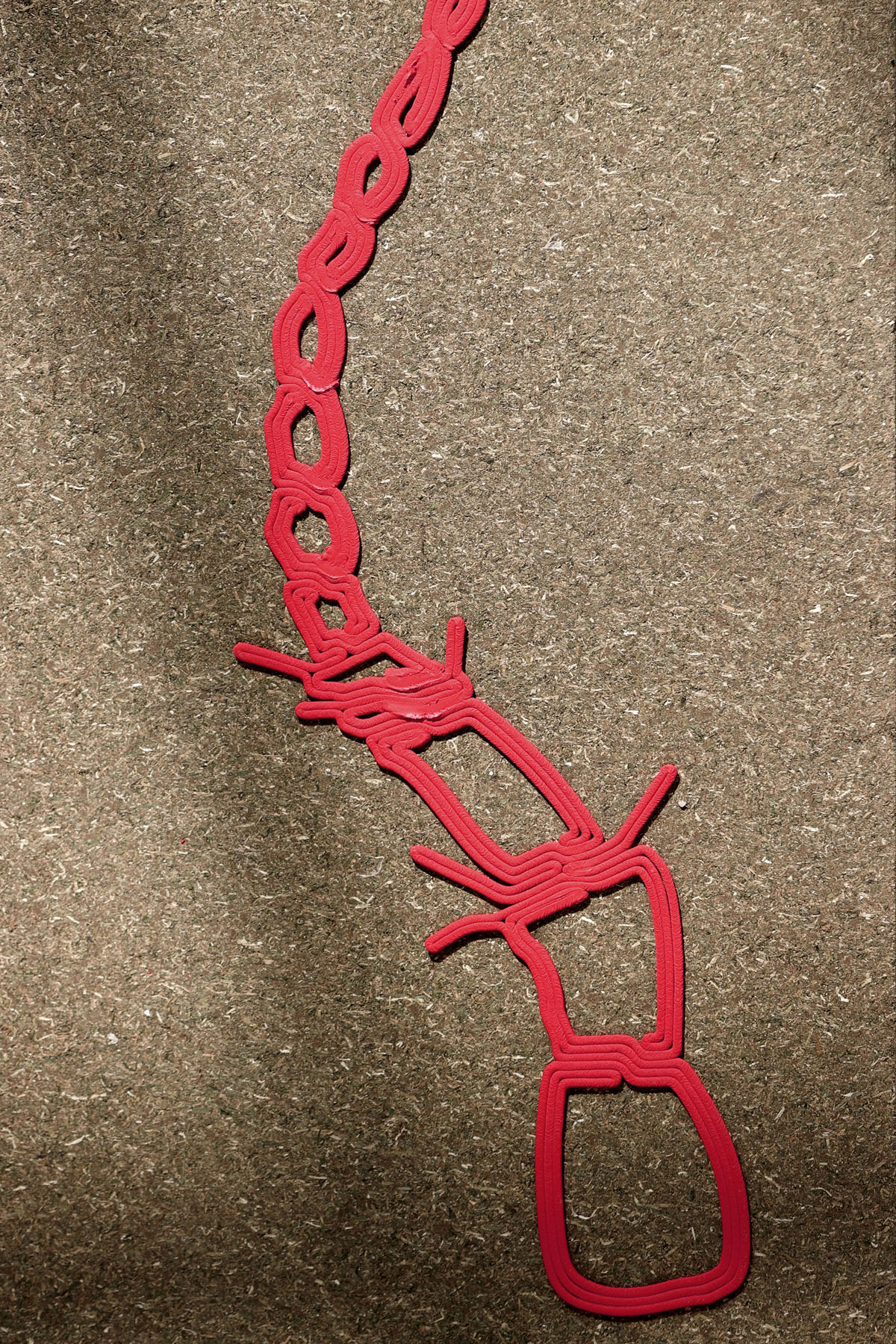
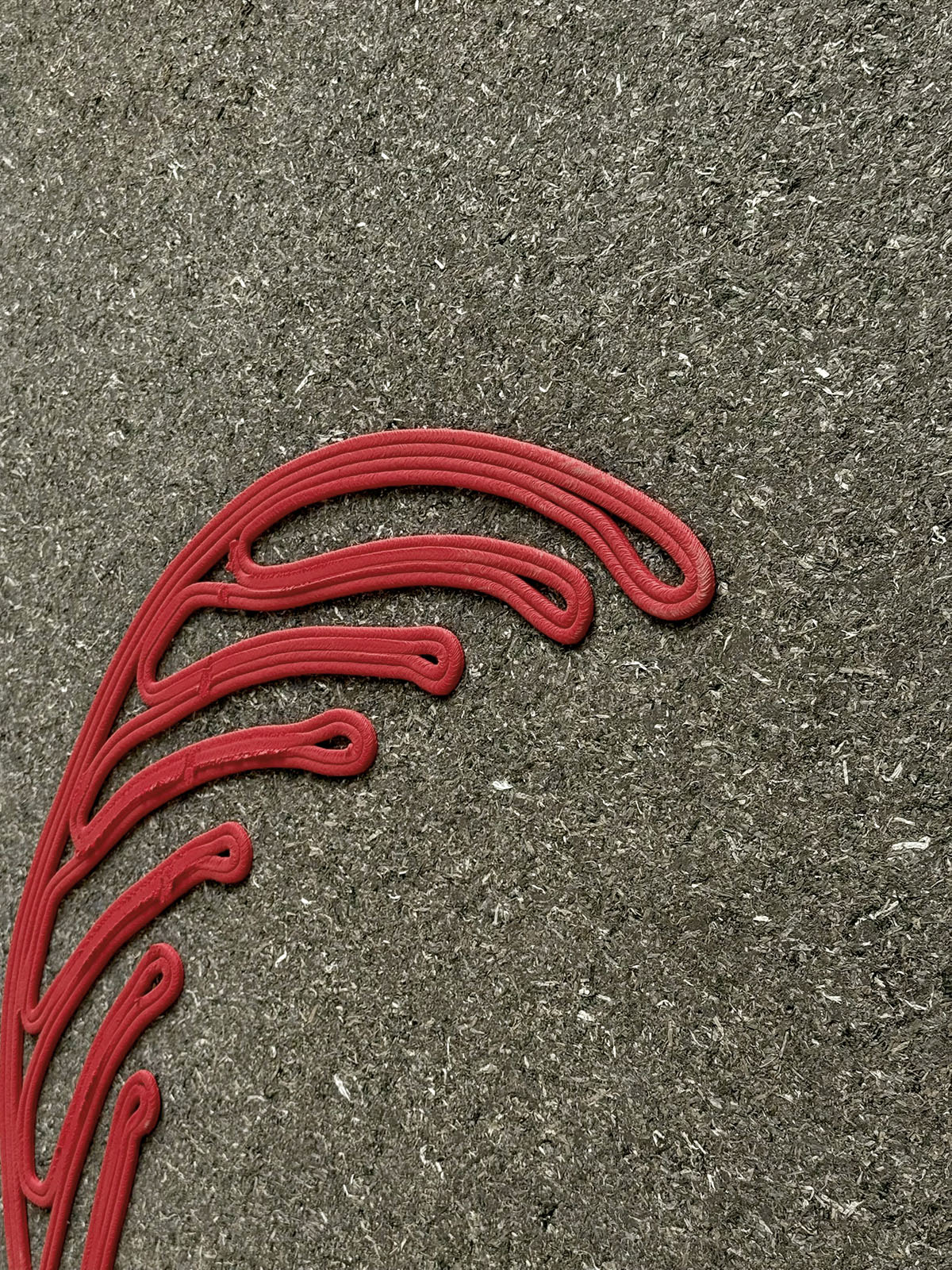
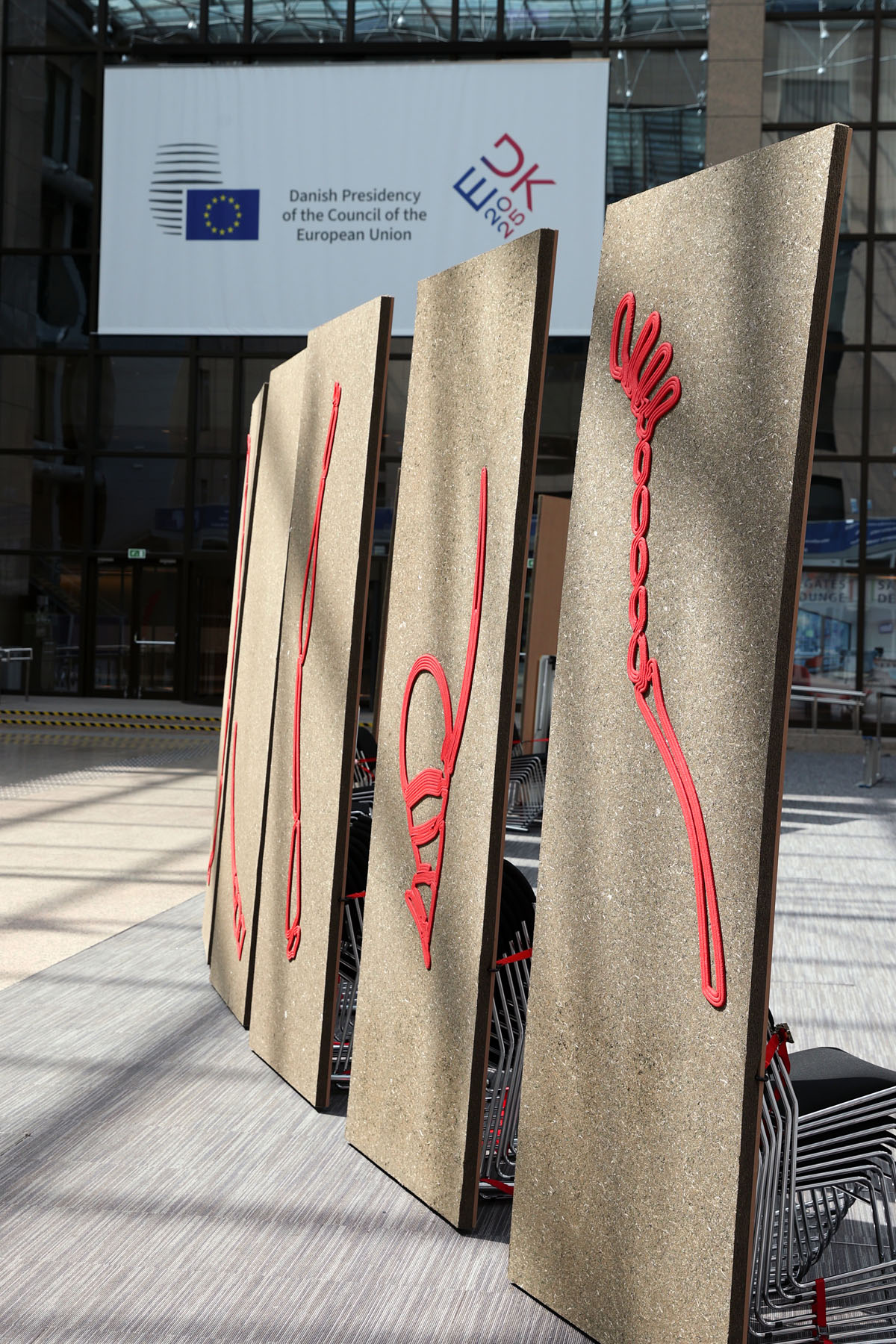
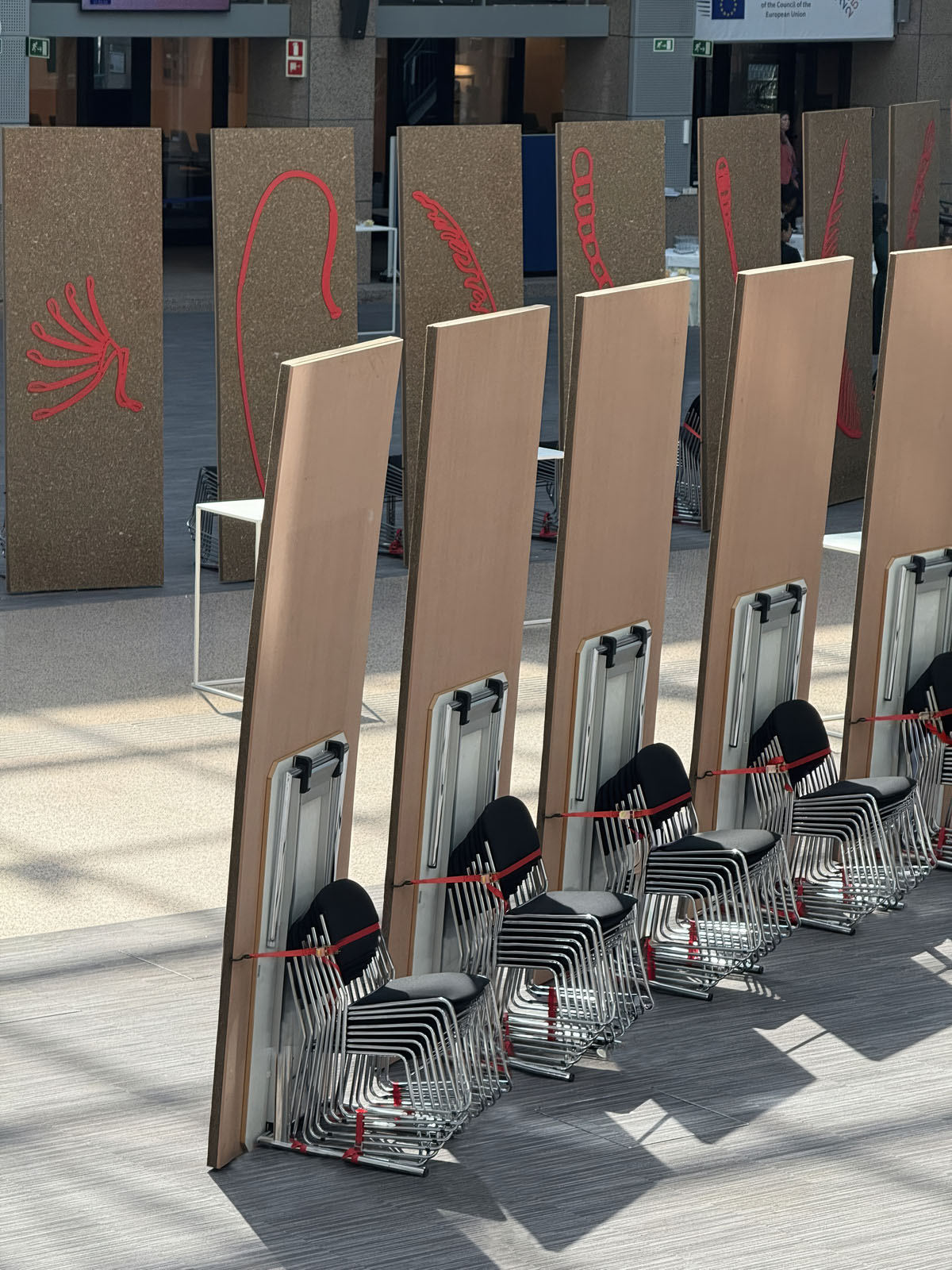
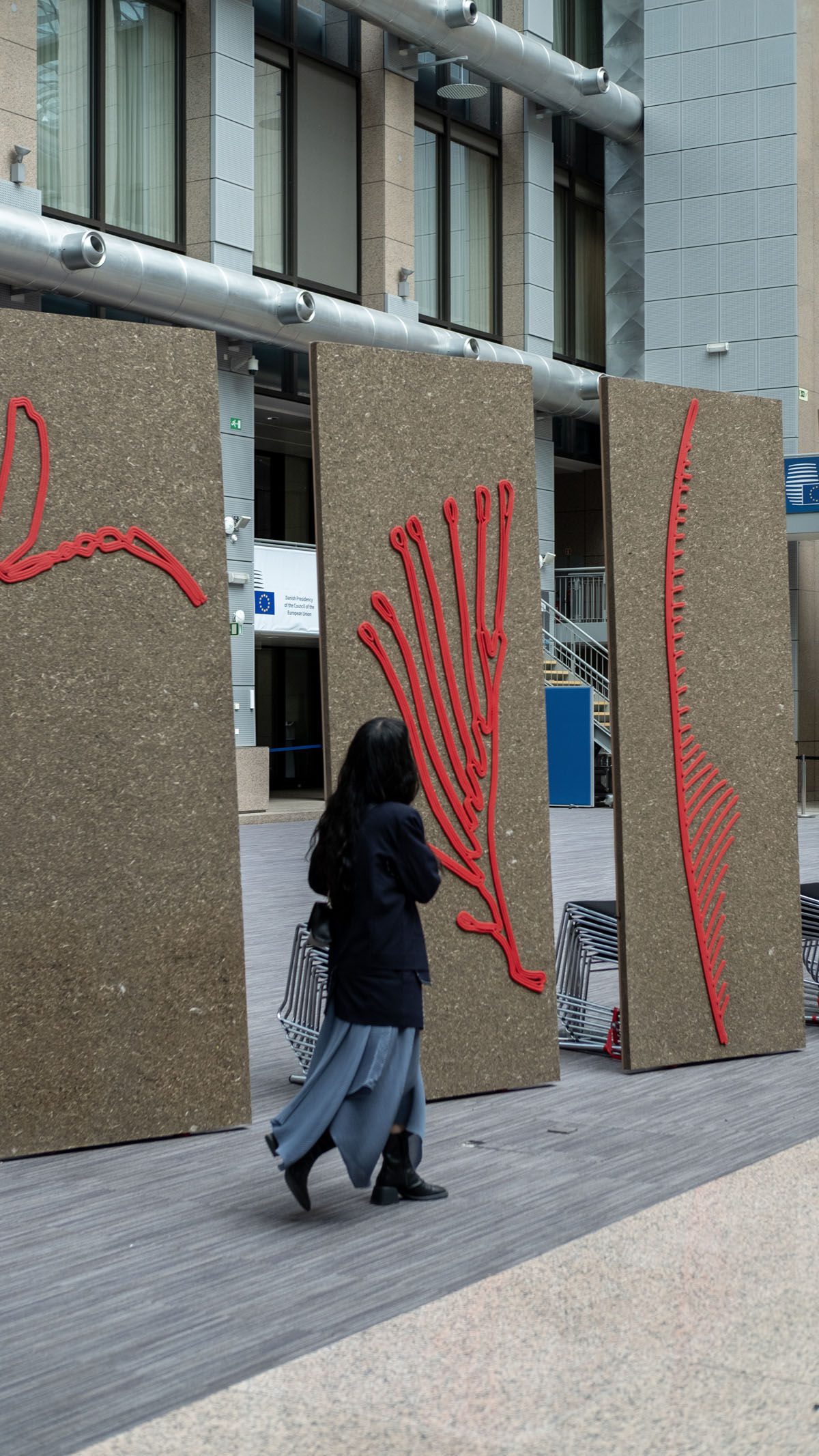
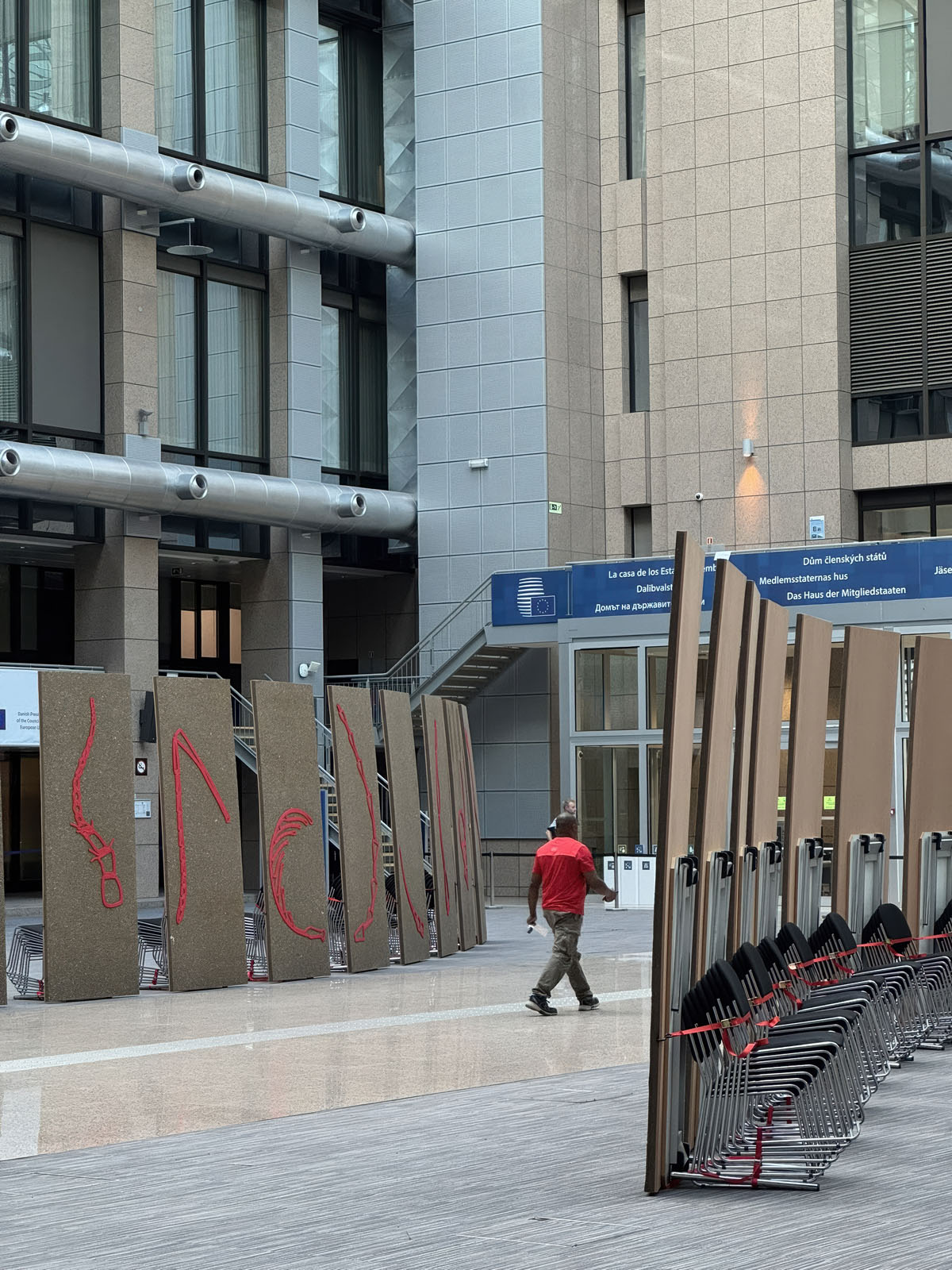
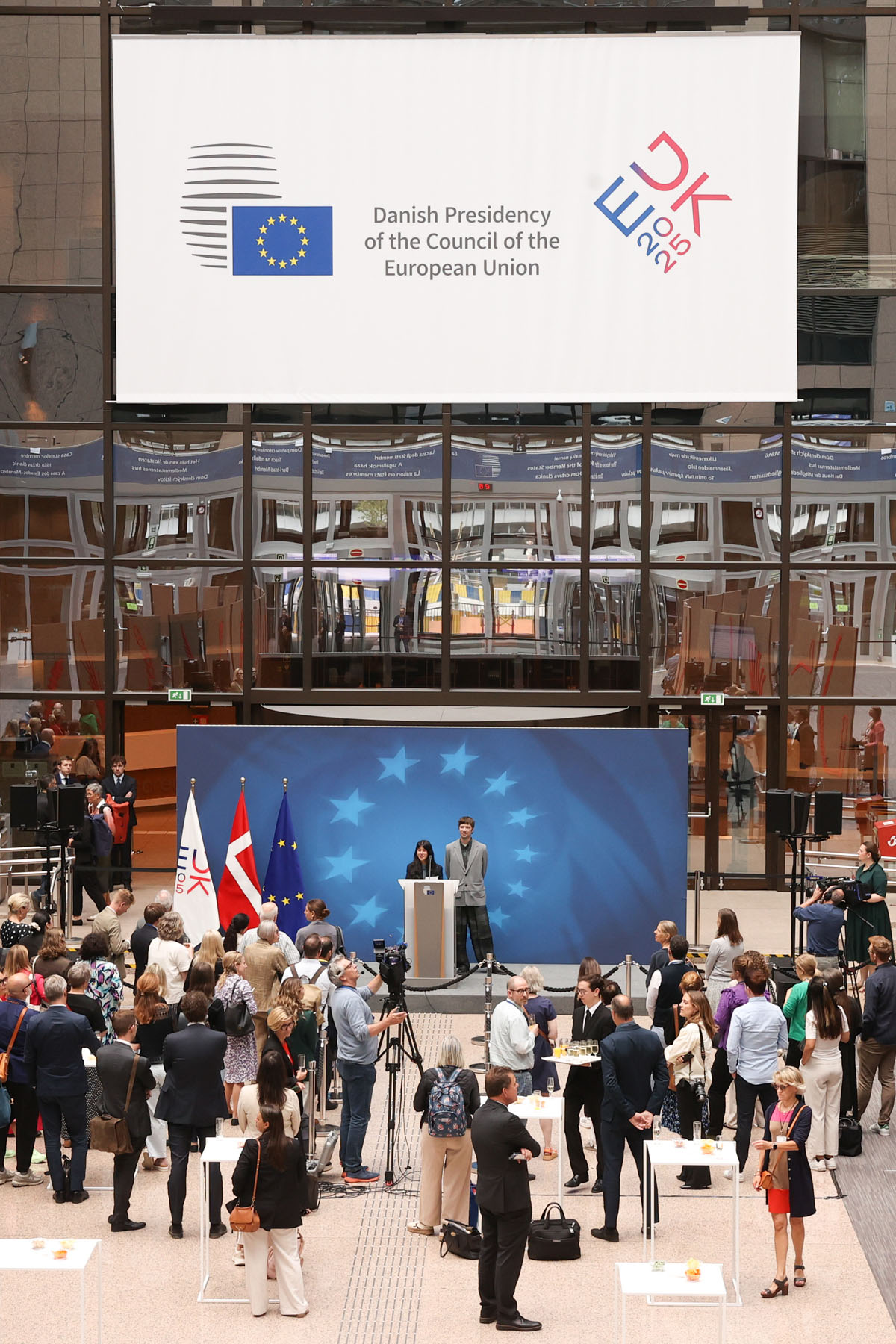
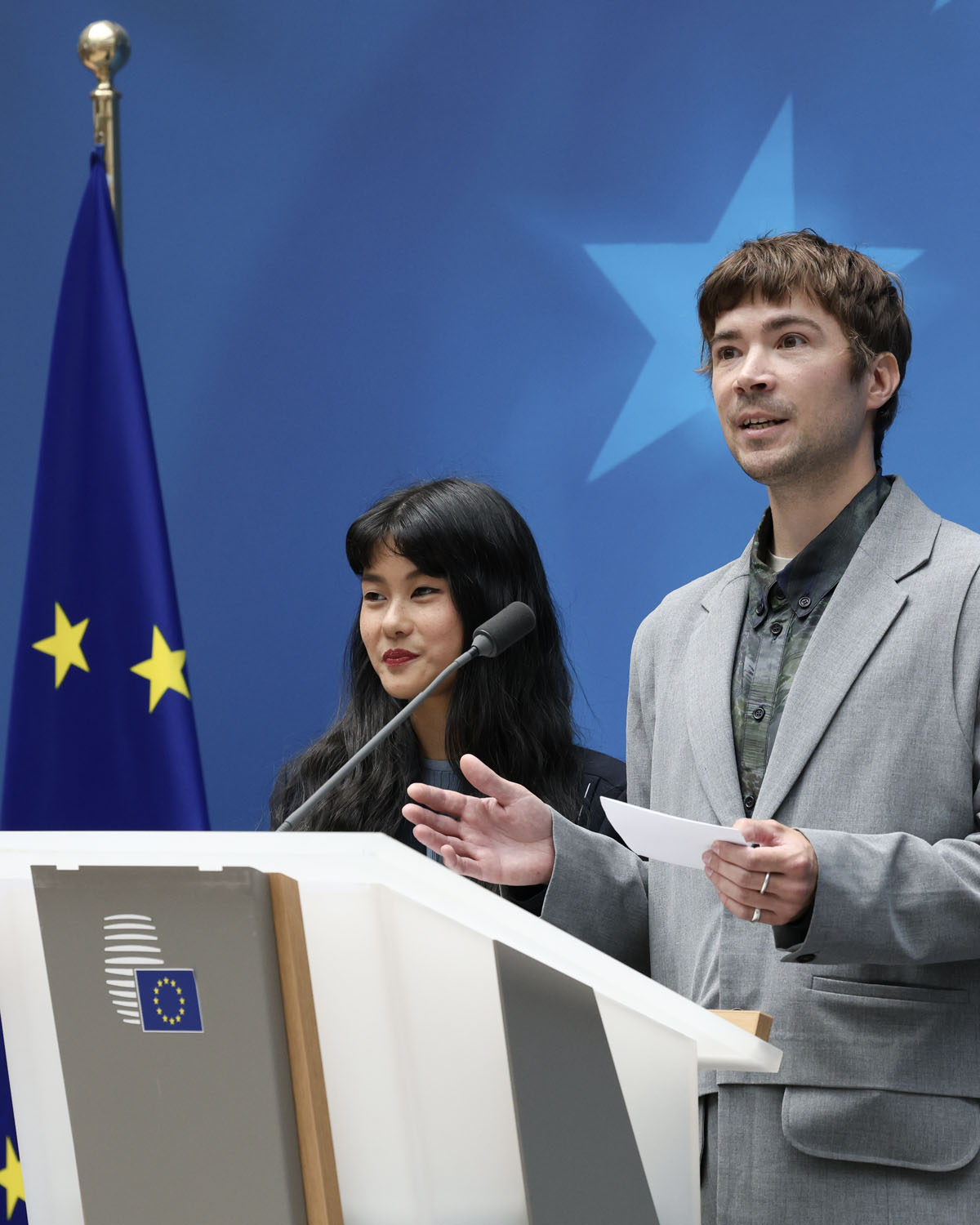
Superorganism
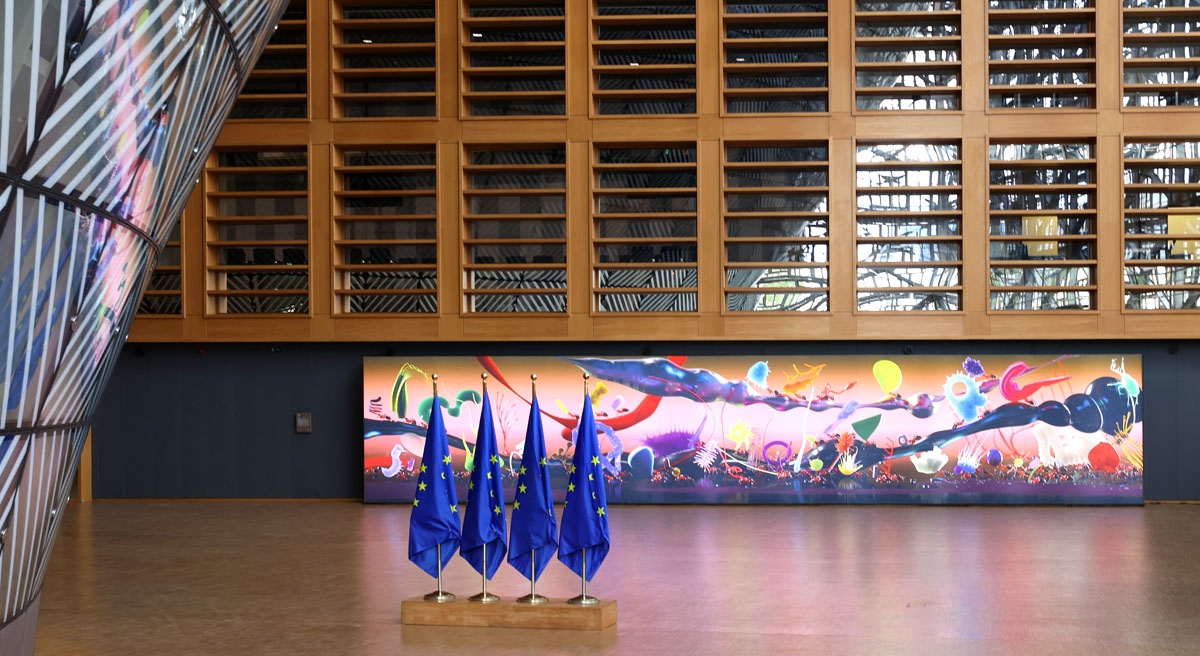
Year: 2025
Commissioned Public Art / Installation
EU Council, Europa Building, Brussels
Exhibition period: July 16 — Dec 31. 2025
Technique: Digital sculpting, Digital print
Material: Print on fabric, LED lightbox
Dimensions: 16 x 3 m
Photos by: EU Council + Wang & Söderström
Commissioned Public Art / Installation
EU Council, Europa Building, Brussels
Exhibition period: July 16 — Dec 31. 2025
Technique: Digital sculpting, Digital print
Material: Print on fabric, LED lightbox
Dimensions: 16 x 3 m
Photos by: EU Council + Wang & Söderström
Artistic decoration commissioned by the Ministry of Foreign Affairs of Denmark for EU Council Building during the Danish Presidency of the EU Council.
In a speculative landscape, a trail of ants is carrying various findings from the technosphere. The work explores themes of collective intelligence, emergent behaviour, network systems where coordination arises through local interaction rather than hierarchy.
In ant colonies, no central figure directs the group. The queen sustains, but does not lead. A single ant can be seen as simple, they are dependent on their antennae to communicate and navigate on a local scale. Together the ants generate complex structures and behaviours—systems that evolve without a central control, a superorganism.
Just one ant needs to stray from the trail to discover new food—otherwise, the colony would return to the same spot and risk starvation. A single local shift can redirect the entire network. Through their sensitive antennae, ants build community one interaction at a time.
Positioned within a space of power, this work is both a mirror and a prompt. Can we rethink the systems we’ve built—and those we have yet to imagine? It is through empathy, not control, that we might begin to sense what comes next.
In a speculative landscape, a trail of ants is carrying various findings from the technosphere. The work explores themes of collective intelligence, emergent behaviour, network systems where coordination arises through local interaction rather than hierarchy.
In ant colonies, no central figure directs the group. The queen sustains, but does not lead. A single ant can be seen as simple, they are dependent on their antennae to communicate and navigate on a local scale. Together the ants generate complex structures and behaviours—systems that evolve without a central control, a superorganism.
Just one ant needs to stray from the trail to discover new food—otherwise, the colony would return to the same spot and risk starvation. A single local shift can redirect the entire network. Through their sensitive antennae, ants build community one interaction at a time.
Positioned within a space of power, this work is both a mirror and a prompt. Can we rethink the systems we’ve built—and those we have yet to imagine? It is through empathy, not control, that we might begin to sense what comes next.
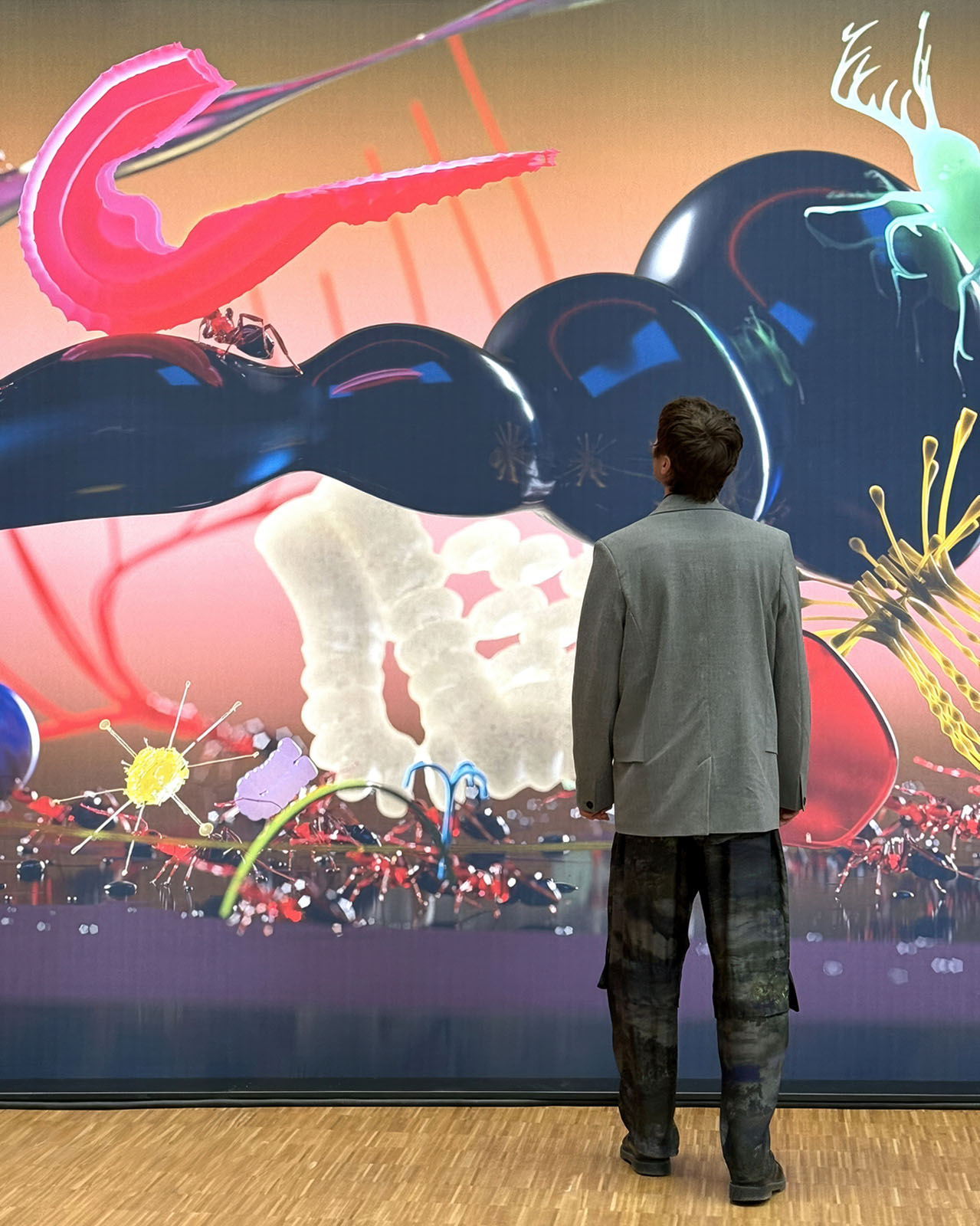
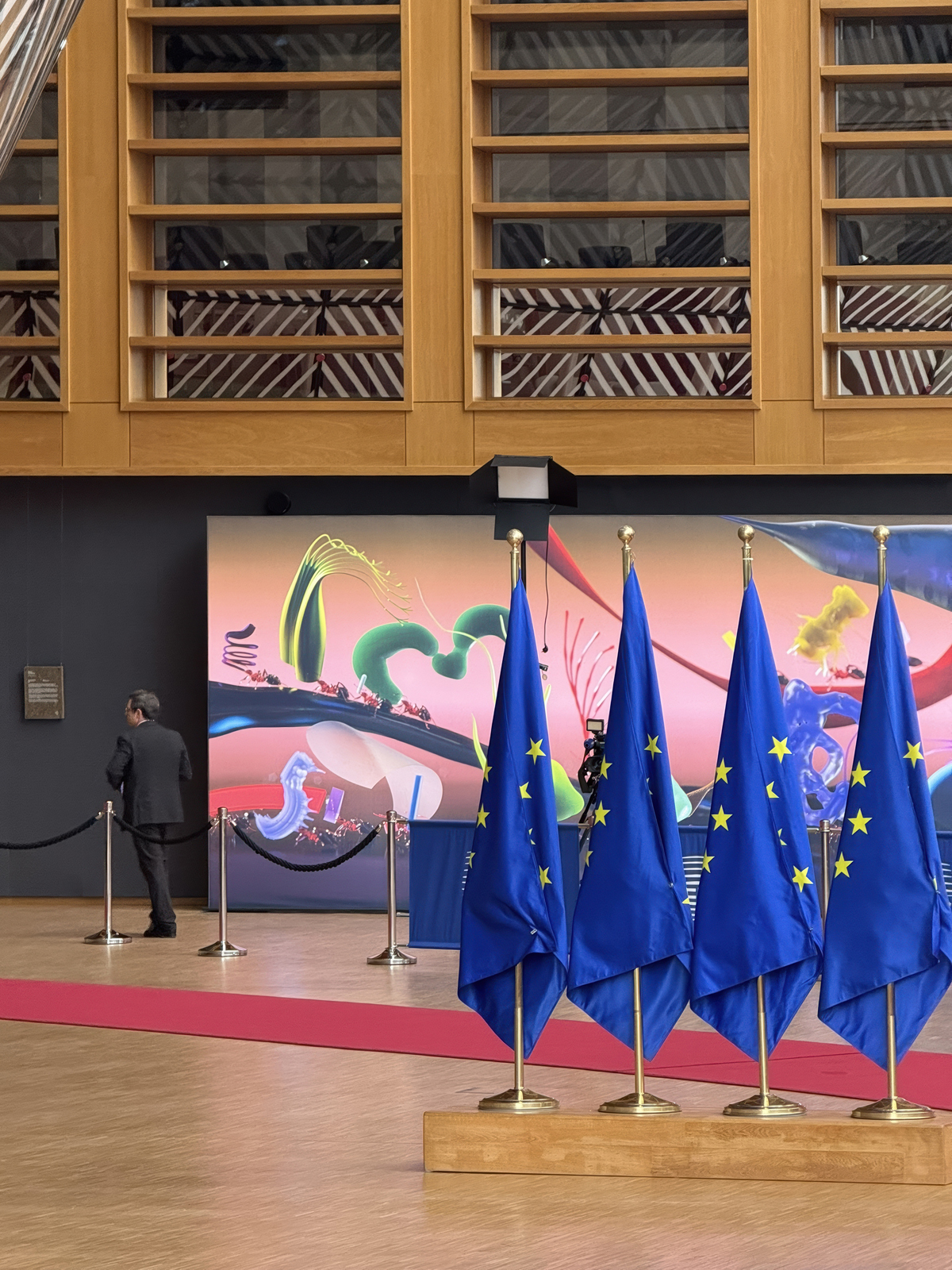
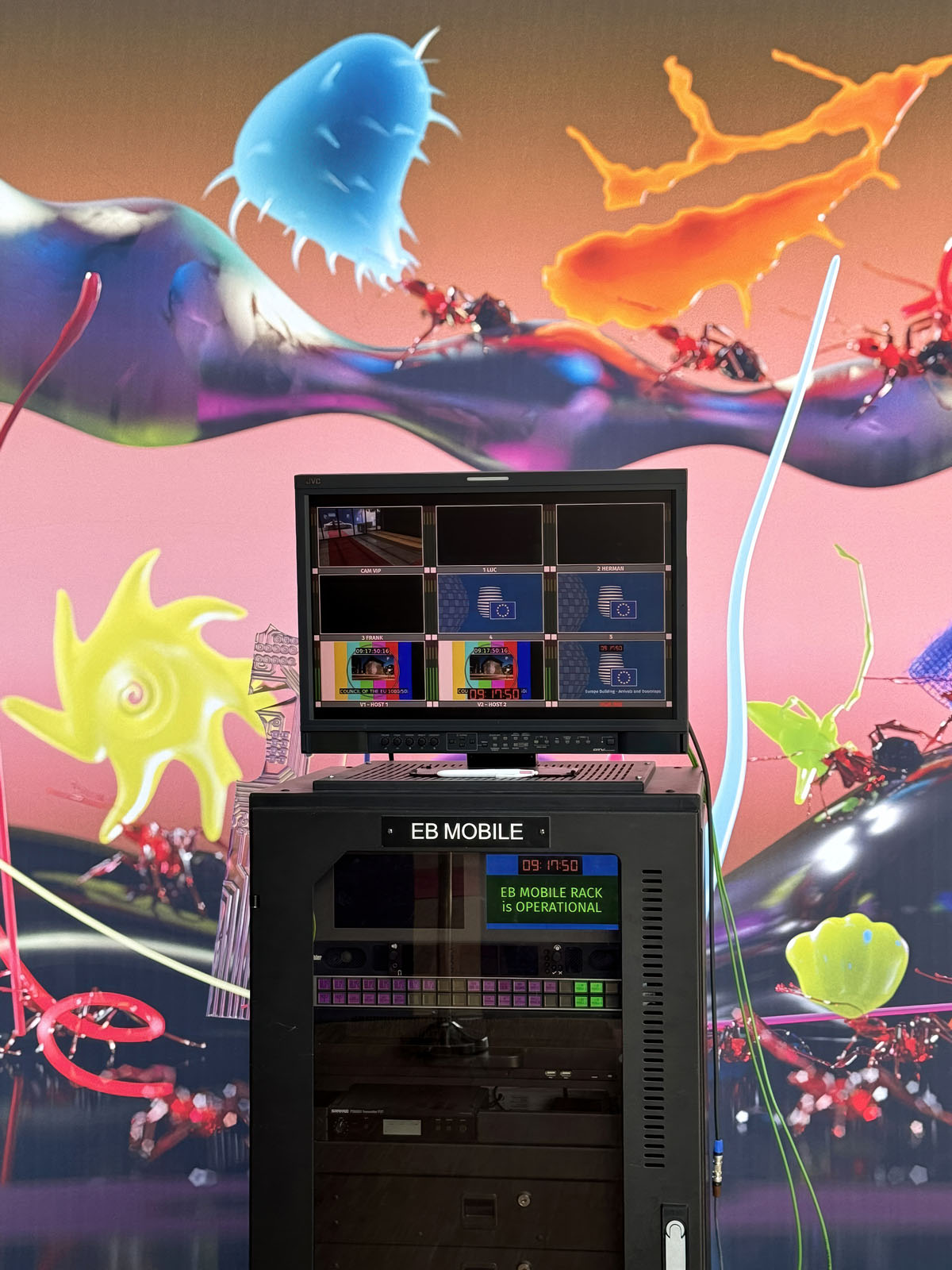
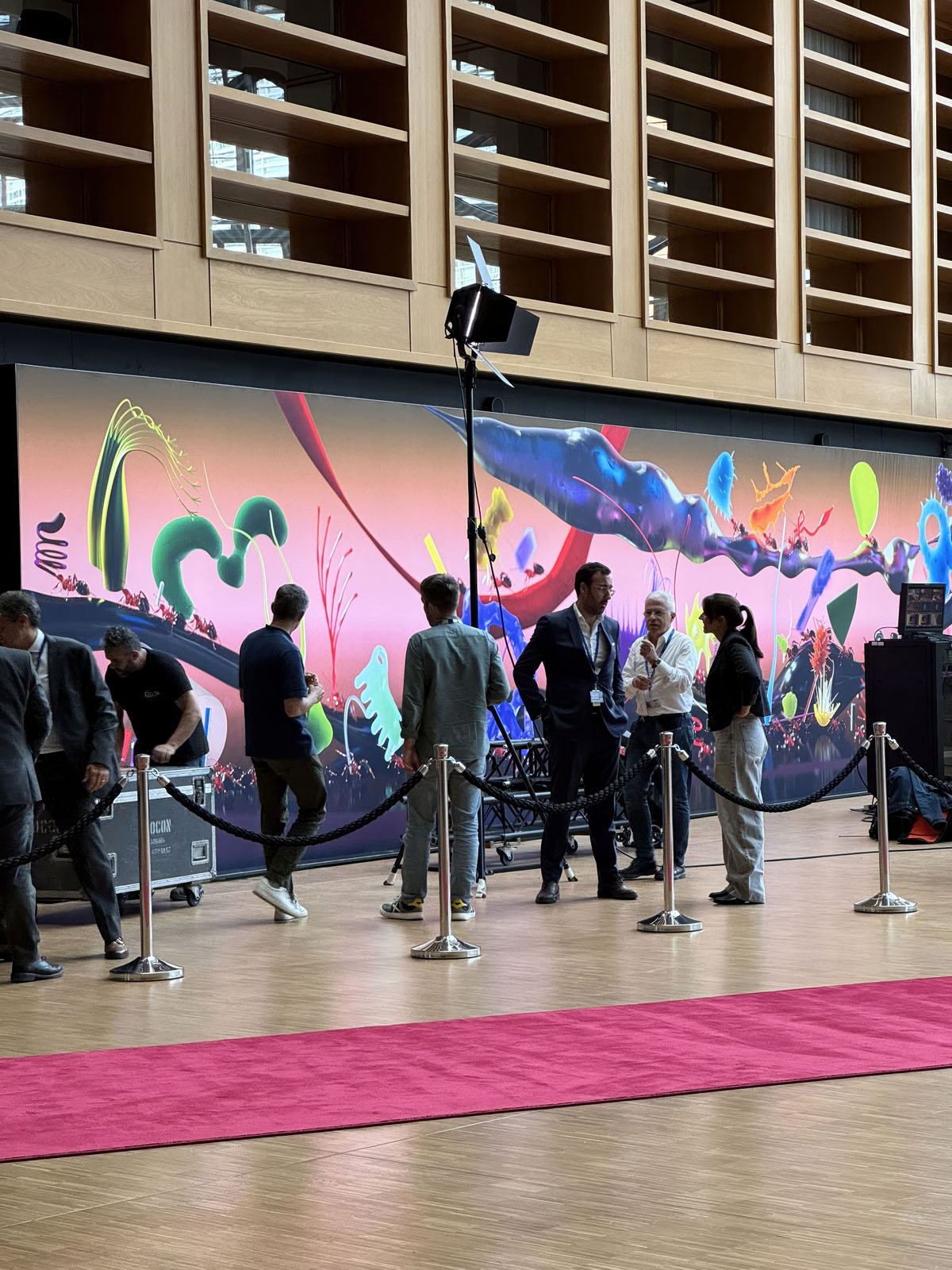
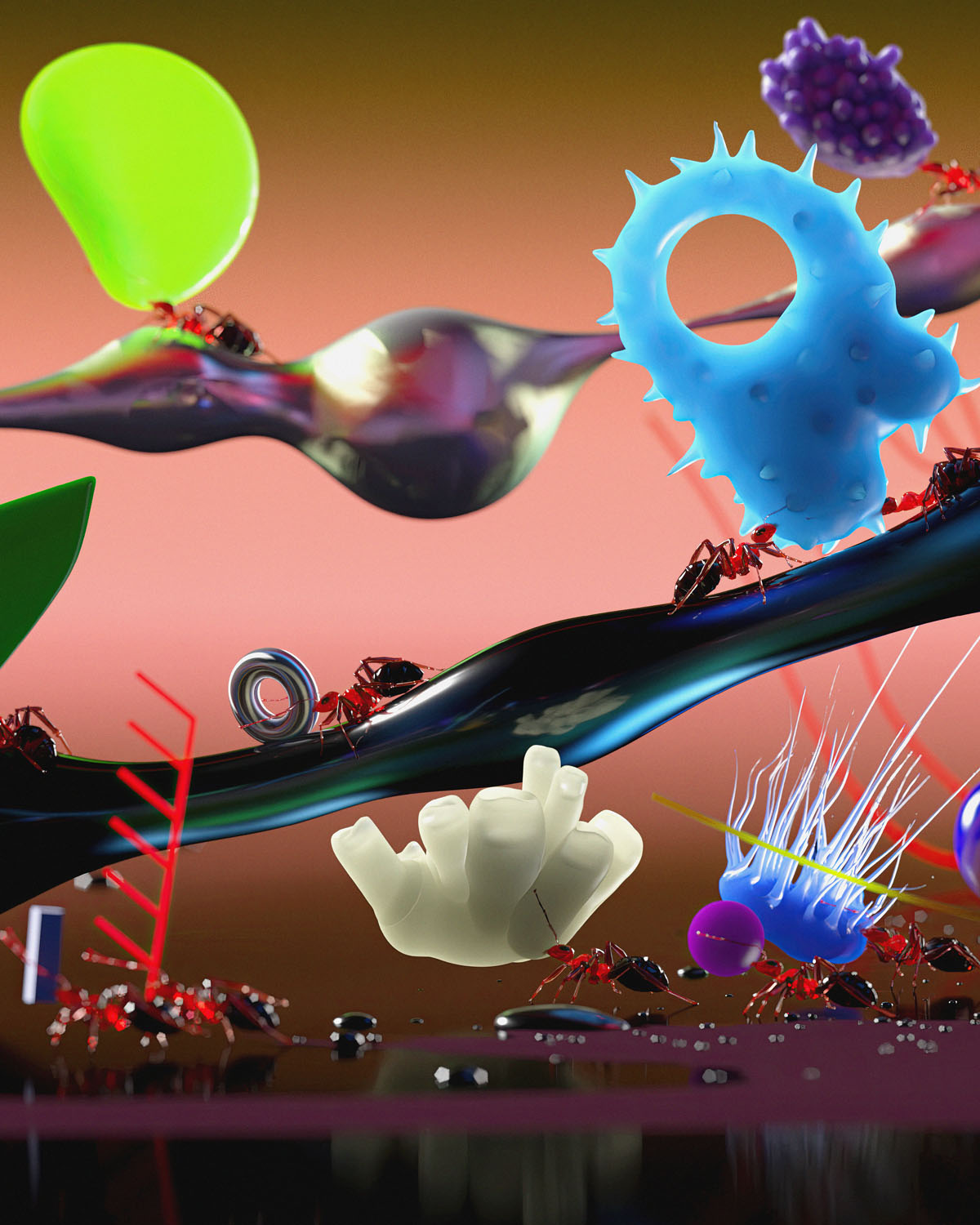
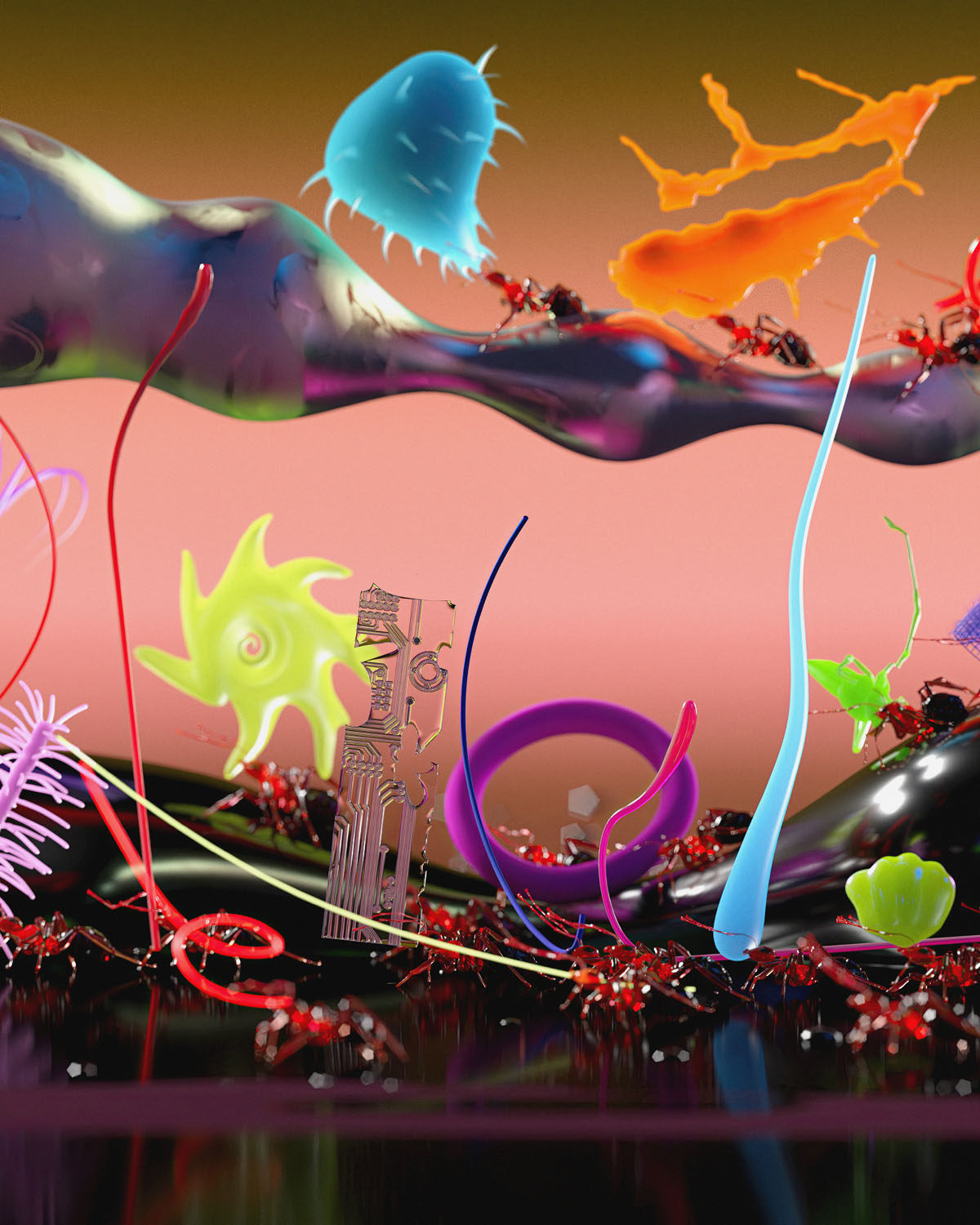
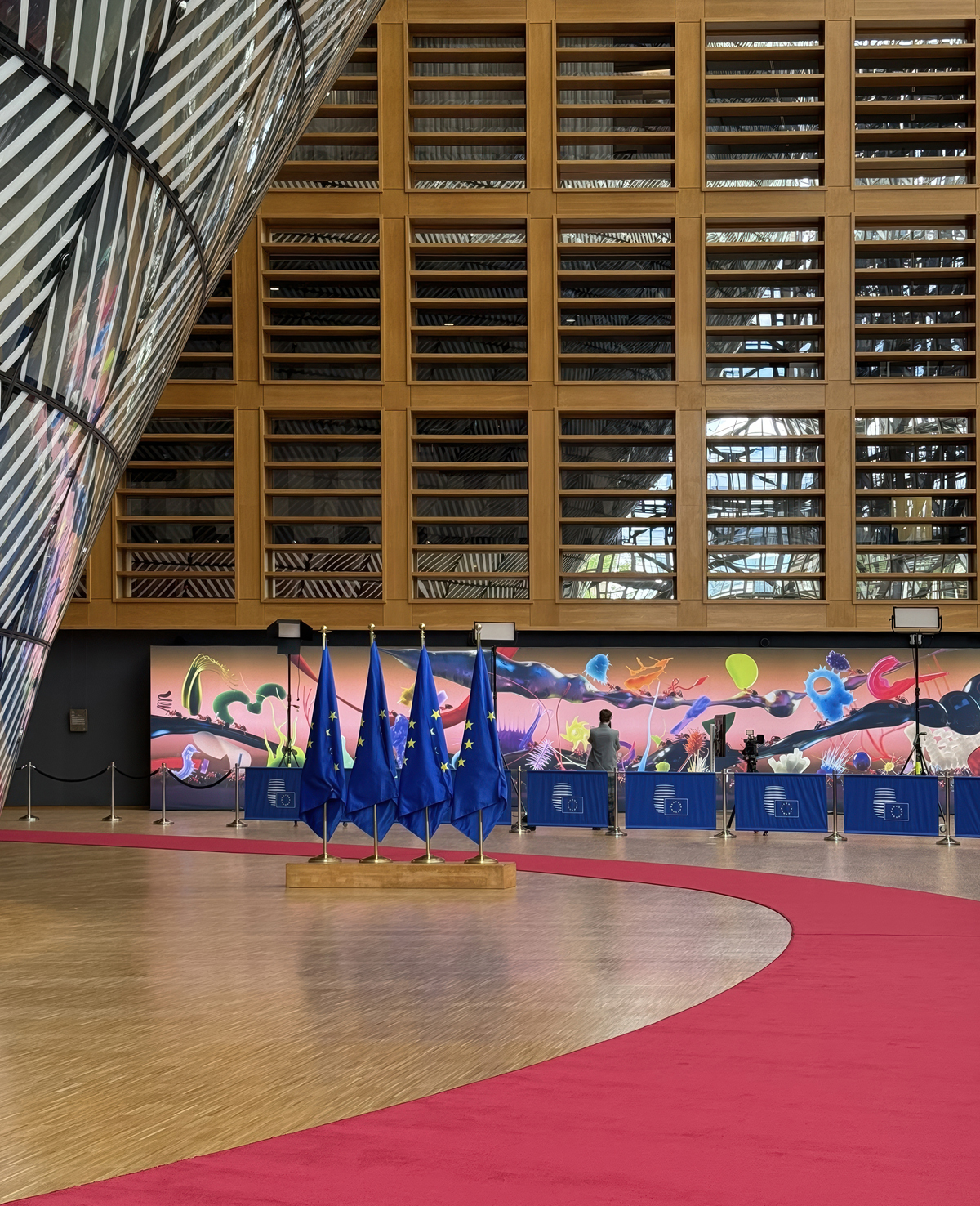
The Liminal Eatery II
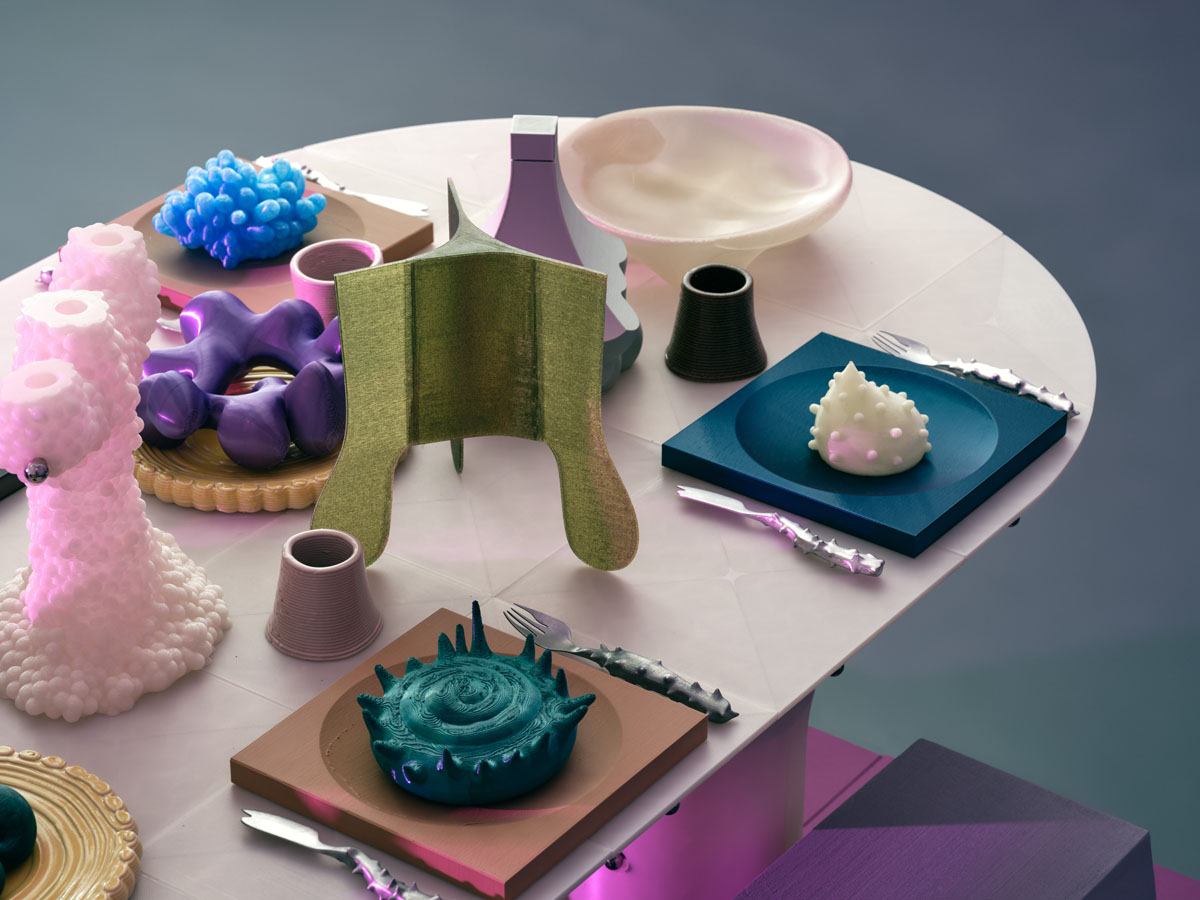
Year: 2025
Interactive Installation
Technique: Digital sculpting, 3D printing, 3D animation, real-time 3D simulation Material: Recycled polylactic acid biobased plastic (rPLA), polylactic acid biobased plastic (PLA), rPP/biocomposite of wood fibers and recycled polymer from the fishing industry (Ocean rPPGF), quartz sand, binder, pigment, recycled thermoplastic polyester (rPETG), resin, aluminium, earthenware, recycled polylactic acid biobased plastic (rPLA) with wood fibres, lava rock, essential oil, depth camera, projectors, audio
Photo by: Carl Ander + Wang & Söderström
Tasting event in collaboration with food artist and designer Josefin Vargö
Interactive Installation
Technique: Digital sculpting, 3D printing, 3D animation, real-time 3D simulation Material: Recycled polylactic acid biobased plastic (rPLA), polylactic acid biobased plastic (PLA), rPP/biocomposite of wood fibers and recycled polymer from the fishing industry (Ocean rPPGF), quartz sand, binder, pigment, recycled thermoplastic polyester (rPETG), resin, aluminium, earthenware, recycled polylactic acid biobased plastic (rPLA) with wood fibres, lava rock, essential oil, depth camera, projectors, audio
Photo by: Carl Ander + Wang & Söderström
Tasting event in collaboration with food artist and designer Josefin Vargö
The Liminal Eatery is an immersive installation that invites visitors to interact with digital avatars. These figures can be experienced in various ways, from surveilling to friendly. Are they servants of the tech giants following you around? Or are they artificial intelligences being fed your information? For Wang & Söderström, the dinner table symbolises a place for human encounters where all our senses are stimulated. As more and more social activities are digitised, what is lost in terms of human qualities?
All parts of the installation are 3D printed by Wang & Söderström in both synthetic and organic materials. The table is designed as modules where additional parts can be assembled to form a long table – a place for participation and communal togetherness. The 3D printer was developed initially to streamline prototyping in industrial manufacturing. Wang & Söderström challenge the limits of the 3D printer through unconventional methods and materials in the creation of imaginative spatialities.
All parts of the installation are 3D printed by Wang & Söderström in both synthetic and organic materials. The table is designed as modules where additional parts can be assembled to form a long table – a place for participation and communal togetherness. The 3D printer was developed initially to streamline prototyping in industrial manufacturing. Wang & Söderström challenge the limits of the 3D printer through unconventional methods and materials in the creation of imaginative spatialities.
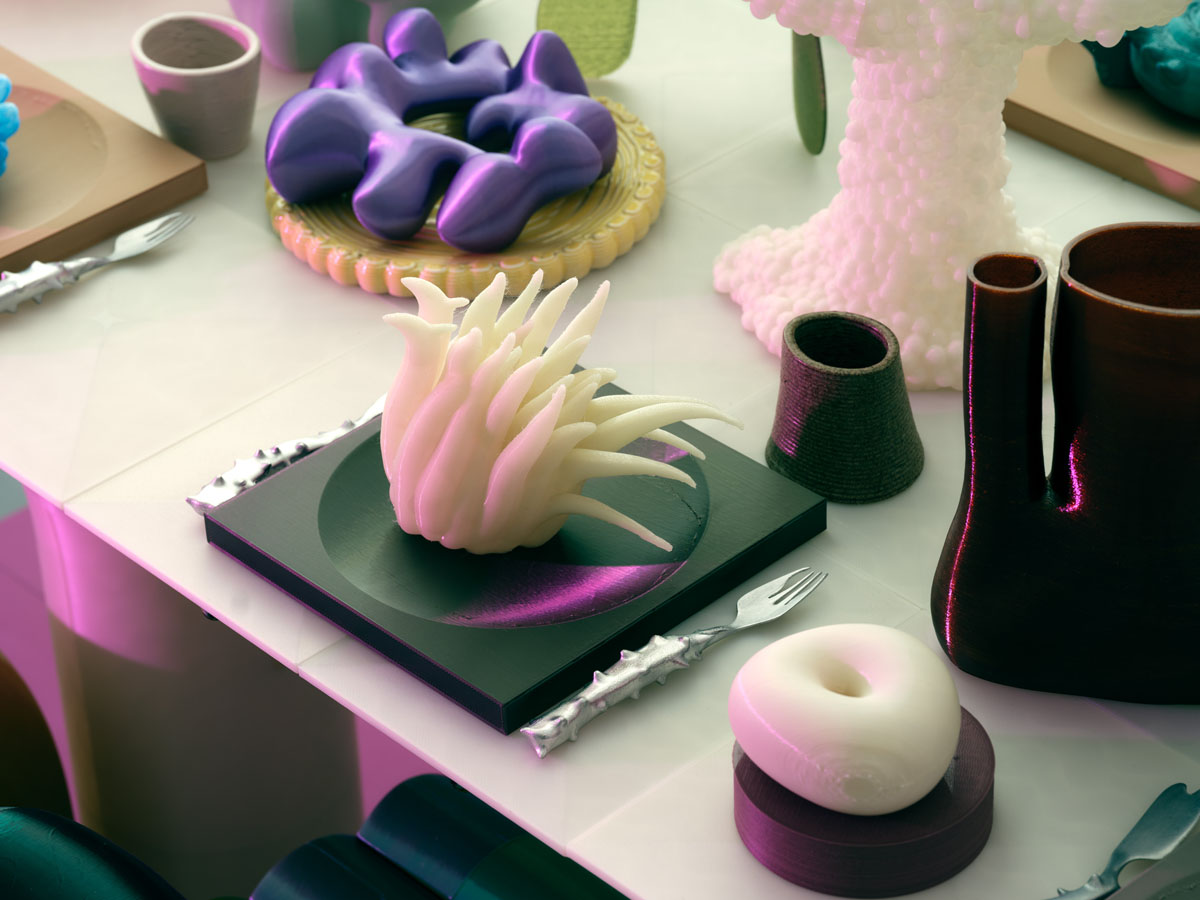
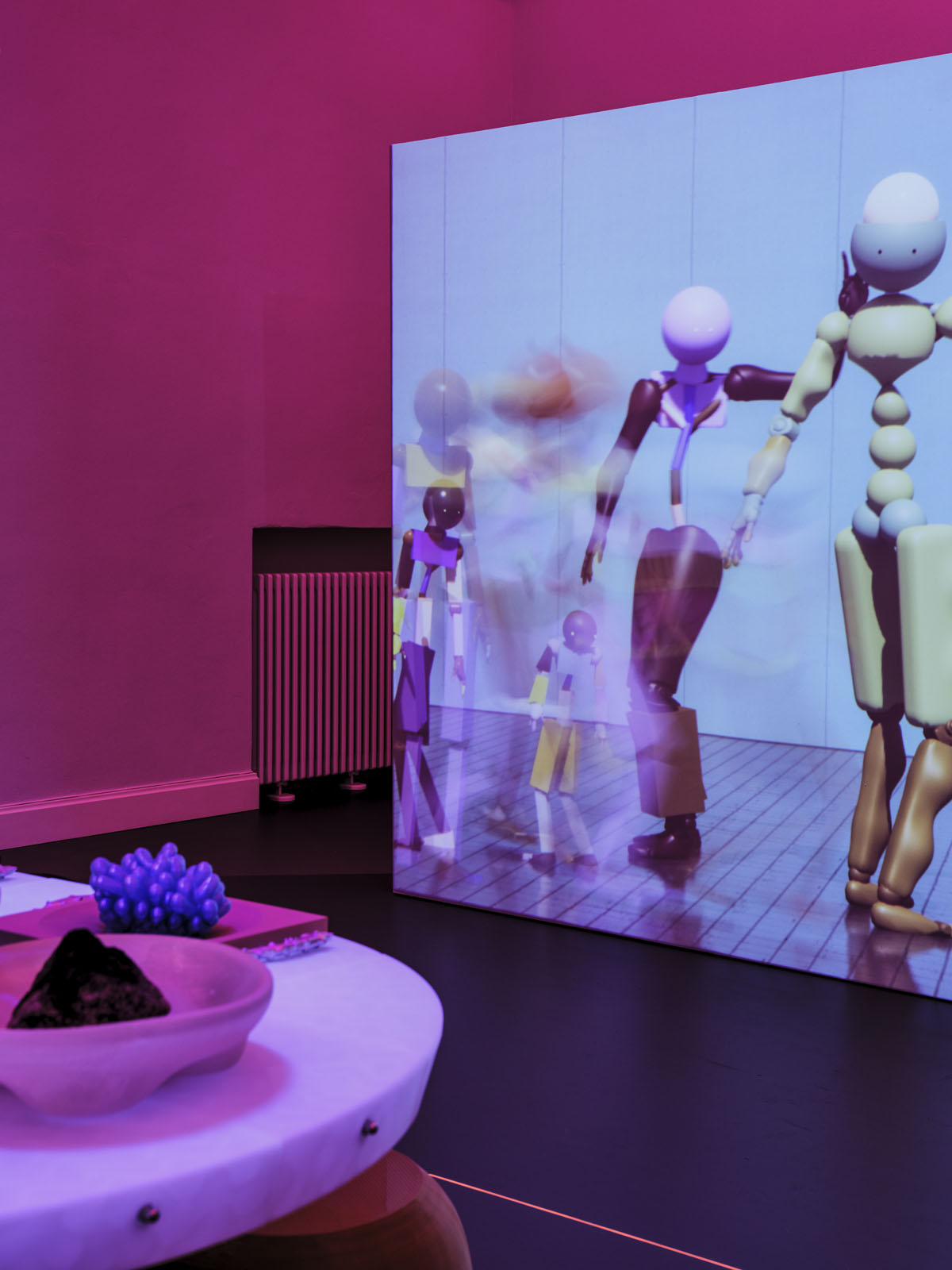

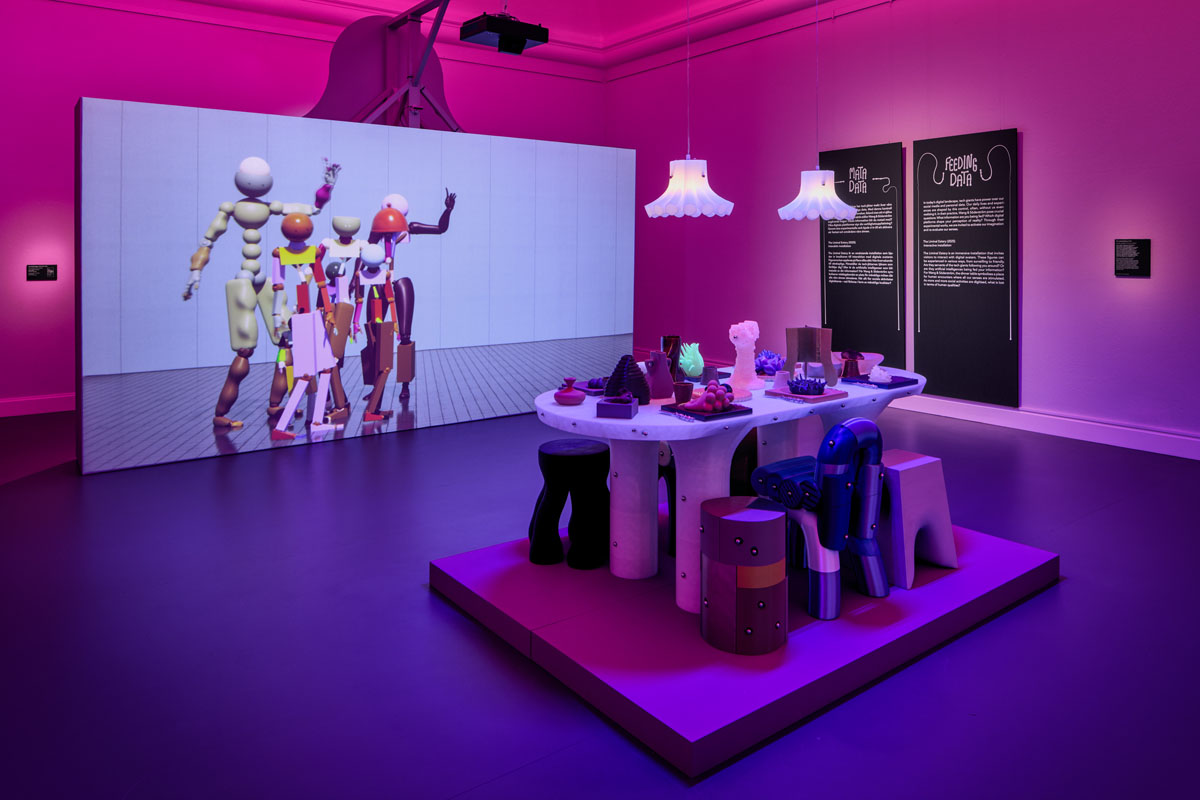
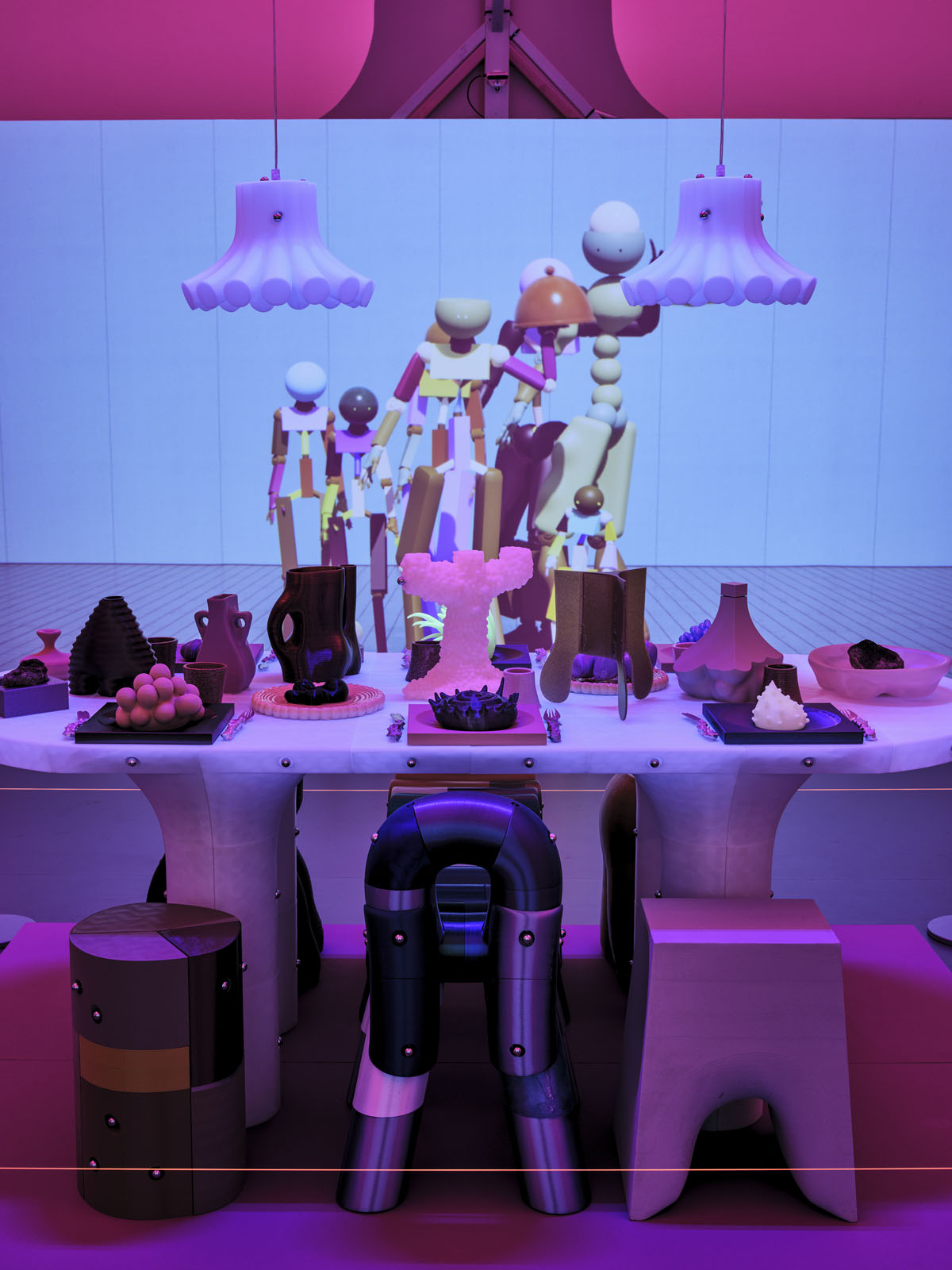
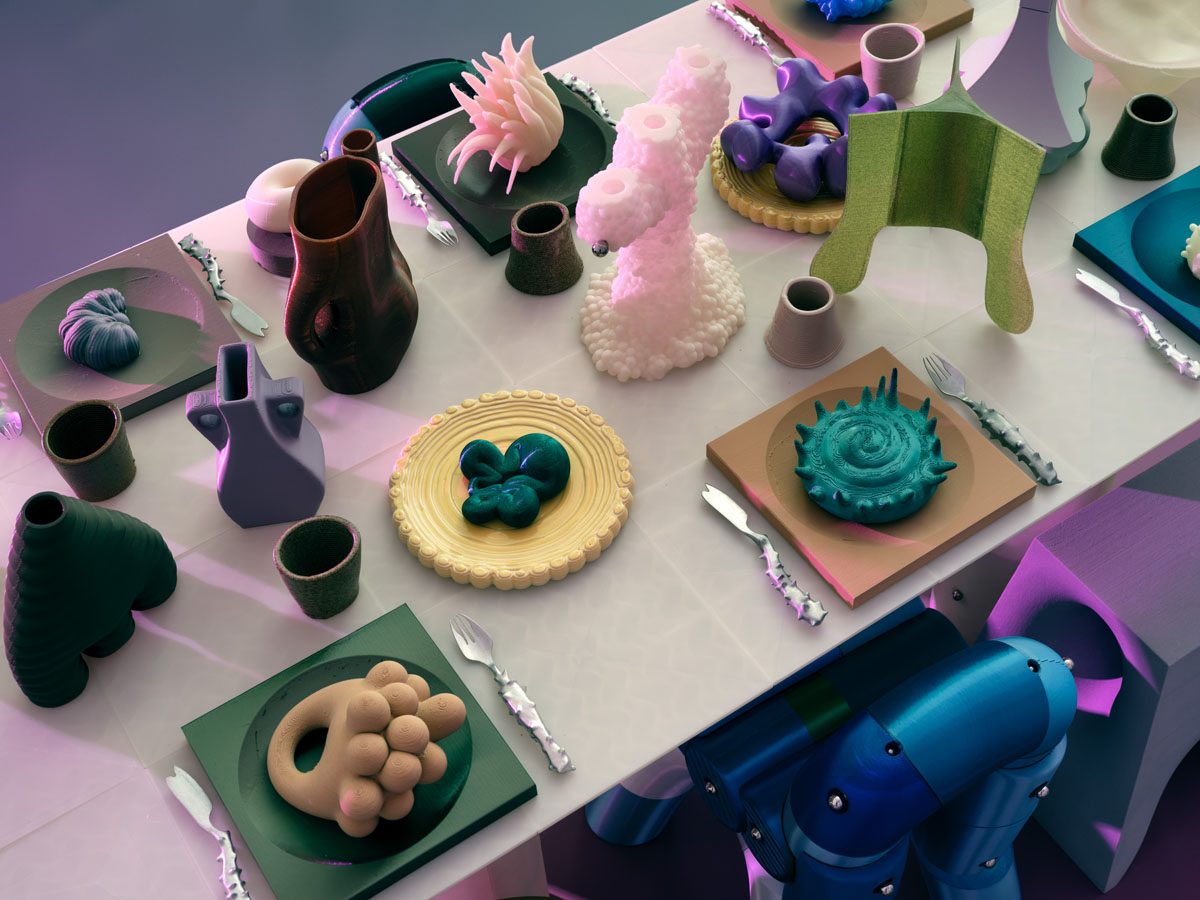
Sense Machine
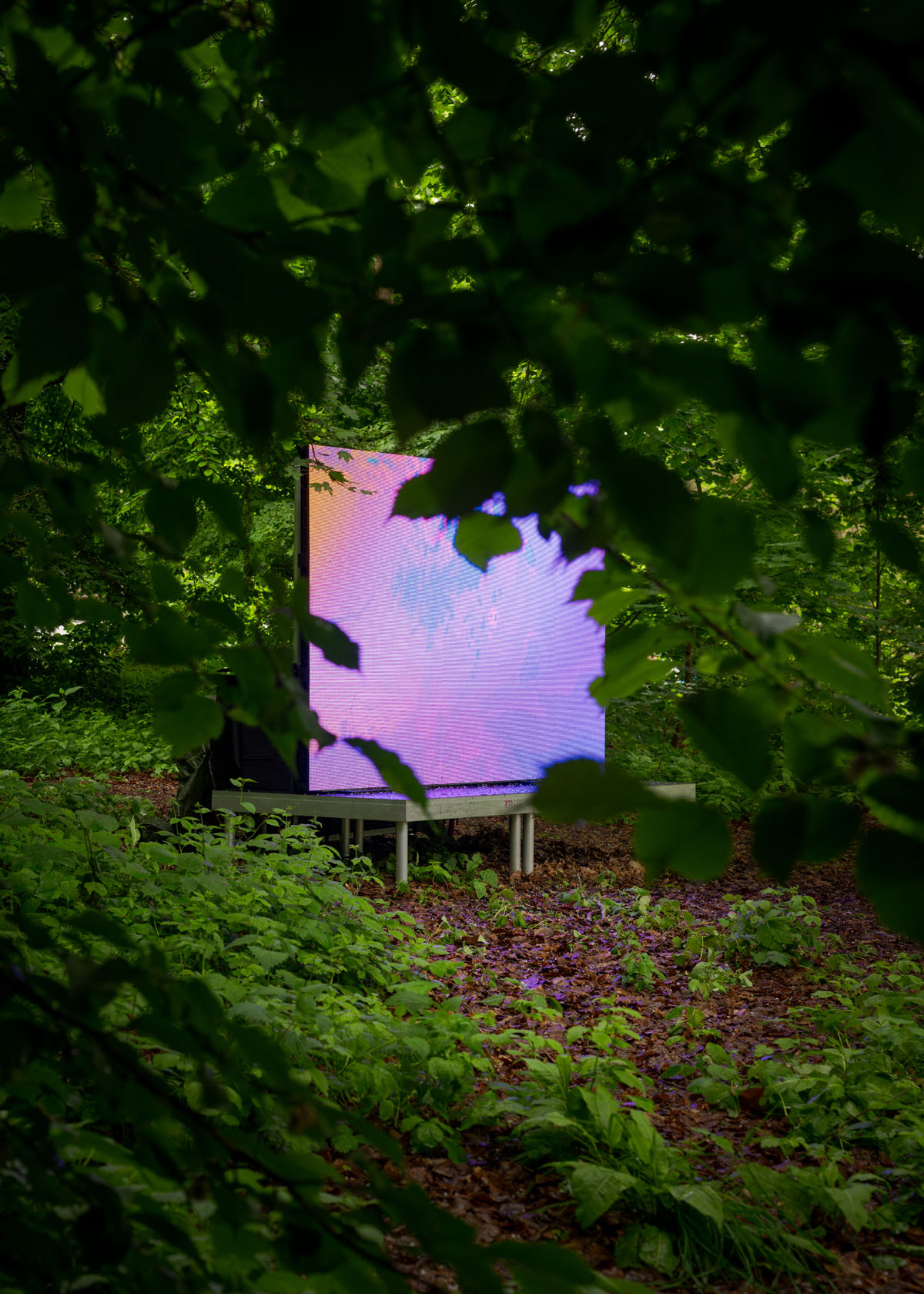
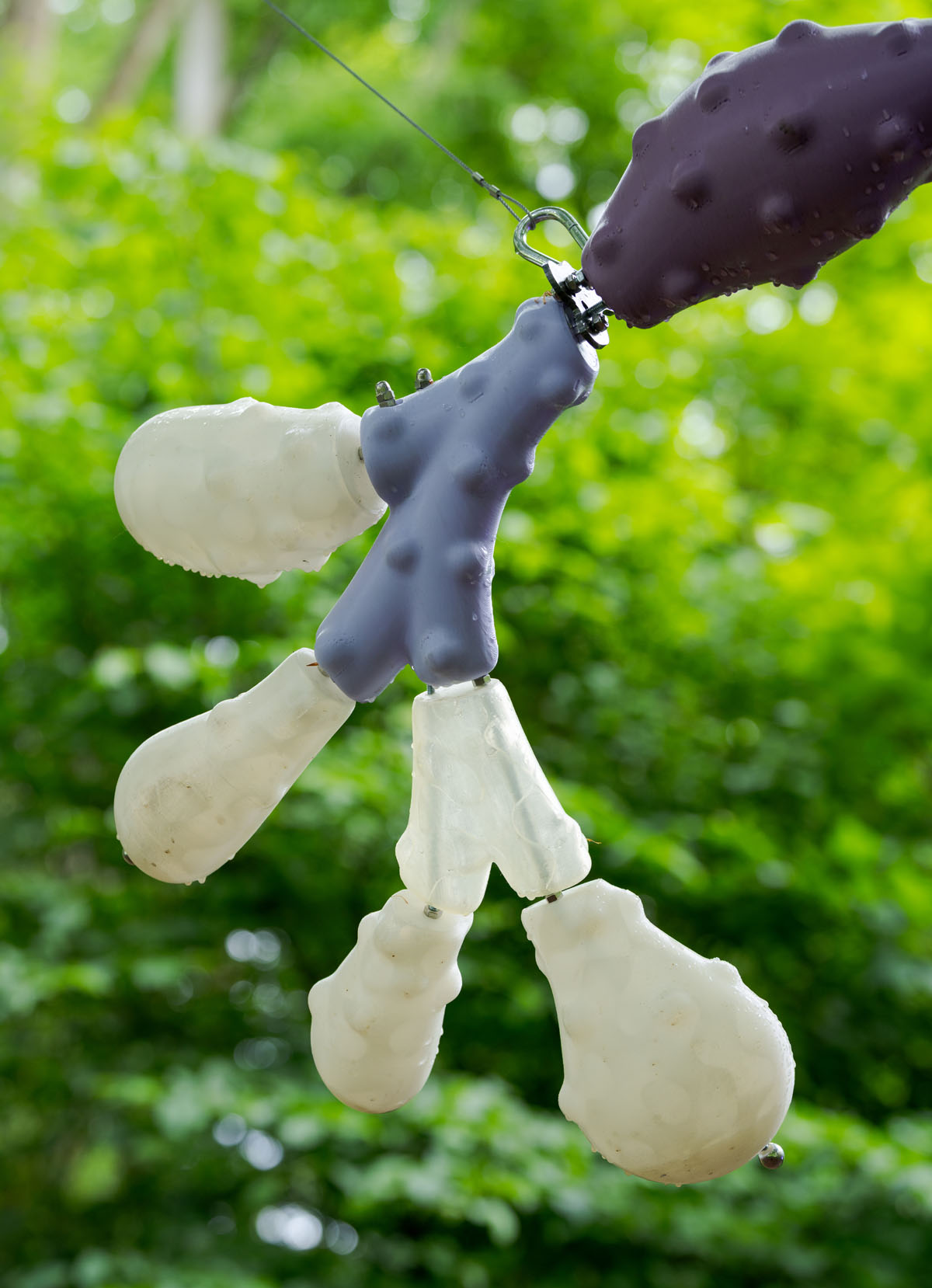
Year: 2025
Public Art / Installation - Temporary
Bloom Festival, Copenhagen
Exhibition period: May 20 — May 25. 2025
Technique: Digital sculpting, 3D printing, sound, 3D animation, CGI, Gaussian splatting
Material: LED, Speakers, Recycled thermoplastic polyester (rPETG), polylactic acid biobased plastic (PLA), metal
Photos by: David Stjernholm + Wang & Söderström
Orginal text in Danish by Steffen Krejberg Knudsen/ Bloom.
Public Art / Installation - Temporary
Bloom Festival, Copenhagen
Exhibition period: May 20 — May 25. 2025
Technique: Digital sculpting, 3D printing, sound, 3D animation, CGI, Gaussian splatting
Material: LED, Speakers, Recycled thermoplastic polyester (rPETG), polylactic acid biobased plastic (PLA), metal
Photos by: David Stjernholm + Wang & Söderström
Orginal text in Danish by Steffen Krejberg Knudsen/ Bloom.
The installation Sense Machine, consists sculpture and a video and sound work that jumps
between the sensory worlds of different creatures. Do we know the difference between being an ant and a robot? Can forms of intelligence other than human intelligence help us navigate a world that is both physical
and digital, biological and artificial?
The sculpture among the treetops is as much a UFO as it is an insect – an unidentifiable,
floating sensory apparatus without a body.
Like an echo of the sensory apparatus' impressions, the video work morphs and zaps between different creatures' ways of sensing the world, and together they form a techno-futuristic sensory machine in two parts that opens lines of communication across species and technologies and makes new frequencies of empathy and sympathy possible. In a speculative investigation of different forms of intelligence – from that of the oak tree and the ant to that of the octopus and the machine – Wang & Söderström focus sharply on the common features and connections between the sensory worlds of animals and the new technological sensory systems we are in the process of creating and merging with. Where do our biological sensory apparatus end and where do digital technologies – from GPS and satellites to artificial intelligence – begin in an age where the digital has become intertwined with all aspects of our lives?
Like an echo of the sensory apparatus' impressions, the video work morphs and zaps between different creatures' ways of sensing the world, and together they form a techno-futuristic sensory machine in two parts that opens lines of communication across species and technologies and makes new frequencies of empathy and sympathy possible. In a speculative investigation of different forms of intelligence – from that of the oak tree and the ant to that of the octopus and the machine – Wang & Söderström focus sharply on the common features and connections between the sensory worlds of animals and the new technological sensory systems we are in the process of creating and merging with. Where do our biological sensory apparatus end and where do digital technologies – from GPS and satellites to artificial intelligence – begin in an age where the digital has become intertwined with all aspects of our lives?
